

Space Tourism: How Much Does it Cost & Who's Offering It?
Last Updated: December 17, 2022
Many of us dream of going to space and over 600 people have traveled to space as astronauts in government-funded agencies such as NASA, the European Space Agency, and Roscosmos. But how much does spaceflight cost in today and how is that expected to change in the coming years?
With new advancements in spaceflight technology, the costs of space travel are decreasing, making the dream of spaceflight a little closer for us all.
Evolution of Spaceflight Costs and Technologies
During the space race, the cost of sending something into space averaged between $6,000 to over $25,000 per kg of weight not adjusted for inflation and NASA spent $28 billion to land astronauts on the moon, about $288 billion in today’s dollars.
In recent decades, it has averaged around $10,000 per kg though certain missions have been higher due to other factors including the destination, the size of the rocket, the amount of fuel needed, and the cost of fuel.
After the retirement of the space shuttle program, NASA paid Russia to transport astronauts to the ISS at about $80 million per seat on the Soyuz rocket. NASA’s biggest and newest rocket, the SLS (Space Launch System) which is currently being utilized for the new moon missions including Artemis and Orion, currently costs about $2-4 billion per launch.
But recent years and the addition of private space companies have drastically changed the game. NASA allowed private space companies to develop equipment for missions, including a 2006 partnership with SpaceX under the Commercial Orbital Transportation Services (COTS) program to provide resupply for crew and cargo demonstration contracts to the International Space Station (ISS).
This partnership has continued to flourish over the years with SpaceX successfully launching two NASA astronauts in May 2020 on a Crew Dragon Spacecraft, making SpaceX the first private company to send astronauts to the ISS and the first crewed orbital launch from American soil in 9 years.
With the revolutionary technology of reusable boosters from SpaceX, the cost has plummeted, achieving less than $1,600 per kg with the Falcon Heavy (still totaling more than $100 million per launch) and even a projected cost of under a thousand for their next generation model Star Ship.
These recent innovations are even making SLS the more expensive, less efficient option if SpaceX’s projections continue to progress as expected within margins of error. We shall see how NASA plans to adapt goals in light of this.
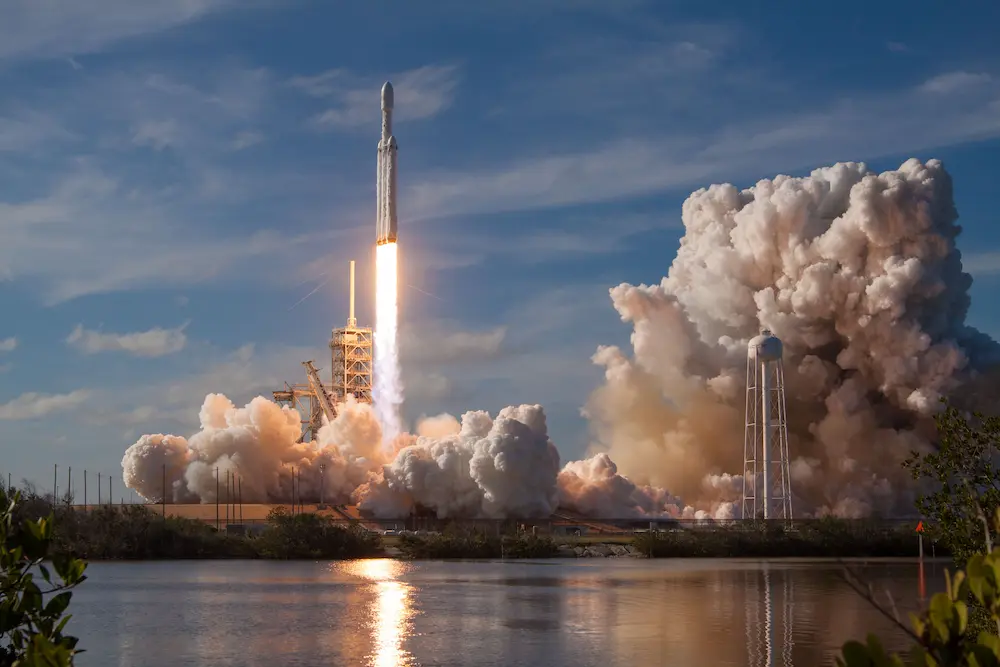
The Falcon Heavy is a cost-effective option for launching payloads into space.
The rise of private space companies
With private space companies, the opportunity for civilians to book a trip to space similar to booking a flight came closer to reality. Dennis Tito was the first private citizen to pay for a trip to space with a trip to the ISS from April 28th to May 6th, 2001 for $20 million dollars. Tito purchased his experience through Space Adventures Inc. which was founded in 1998 and offers a variety of different space experiences. They even acquired Zero Gravity Corporation, NASA’s provider of Reduced Gravity Training (not in space) for its astronauts, in 2008. They offer similar experiences for private individuals starting at about $8,200 as of this publishing (December 2022).
Space Adventures sent seven other space tourists to the ISS through 2009, but due to a number of factors, Space Adventures had to put their ISS offerings on hold until 2021 when they were able to purchase two Soyuz seats due to NASA moving their contract to SpaceX. Space Adventures sent two people to the ISS via the Roscosmos Soyuz rocket in December 2021 and is working on expanding its offerings.
In addition to Elon Musk’s SpaceX, there are a number of other private space companies getting into the commercial spaceflight/ space tourism market, most notably Richard Branson’s Virgin Galactic and Jeff Bezos’s Blue Origins.
Flight Providers & Rates
What are the current rates for commercial spaceflight tickets? What commercial spaceflight trips have already happened? All prices are per person/ per seat.
SpaceX has had the most experience in sending humans to space thanks to its partnership with NASA and Musk has made it clear that he wants to make space travel an option for the public. To date, SpaceX has offered two commercial spaceflight options and has one big one planned for the future:
- SpaceX completed a Multi-Day Orbital Voyage, the first of their new plan to offer private astronaut experiences through their NASA partnership.
- Estimated $55 million for a 3-day stay inside a modified SpaceX Dragon capsule orbiting the Earth at 357 miles (574 km) with three crewmates, sponsored by billionaire Jared Isaacman to raise money for St Jude’s Children’s Hospital
- Partnership between SpaceX and Houston-based Axiom Space Inc.
- $55 million for a 10-day trip to ISS at 408 km with a weeklong (8-day) stay in the orbital lab.
- Expected to continue in 2023
- Axiom plans to build a stand-alone space station to replace the ISS with the first module expected to launch in 2024.
- Steve Aoki: American DJ and record producer
- Everyday Astronaut Tim Dodd: American science communicator, content creator, photographer, and musician
- Yemi A.D.: Czech choreographer, art director and performer
- Rhiannon Adam: Irish photographer
- Karim Iliya: British photographer and filmmaker
- Brendan Hall: American filmmaker and photographer
- Dev Joshi: Indian television actor
- Choi Seung-hyun (stage name: T.O.P.): South Korean rapper, singer, songwriter, record producer, and actor
- Cost is unknown, likely a minimum of $500 million
2. Blue Origin
Blue Origin: currently offers a 100km 12-minute ride to the Karman Line, the recognized boundary between Earth’s atmosphere and outer space; pricing is still unclear and dependent on a variety of factors
- On July 2021, Jeff and Mark Bezos went into space on the New Shepard rocket with Oliver Daemen (who won the trip through an auction bid of around 28 million) and honored guest Wally Funk (a member of Mercury 13, the private program in which women trained to be astronauts but ultimately never went to space)
- Blue Origin has completed 6 commercial space flights as of this publishing. Some “honorable guests” have been invited free of charge, such as Funk and actor William Shatner (Captain Kirk from the original Star Trek). Some have been sponsored or have received special deals due to their nonprofit status.
- $28 million winning auction bid for the first flight ( $19 million was donated)
- $1 million for a board member of a nonprofit
- About $1.25 for a Dude Perfect comedy group crew member, hosted by MoonDAO in August 2022
3. Virgin Galactic Subortbital Joy Ride
Virgin Galactic Subortbital Joy Ride: $450,000 for a 90-minute ride to suborbital space 50km above sea level
- In July 2021, founder Richard Branson flew to the edge of Earth’s atmosphere with two pilots and three other Virgin Galactic employees as the first test of commercial spaceflight for the company
- Each VSS Unity SpaceShipTwo carries up to four passengers
- Expected flights are currently anticipated to begin in 2023
- Includes training accommodations and amenities; launches from New Mexico
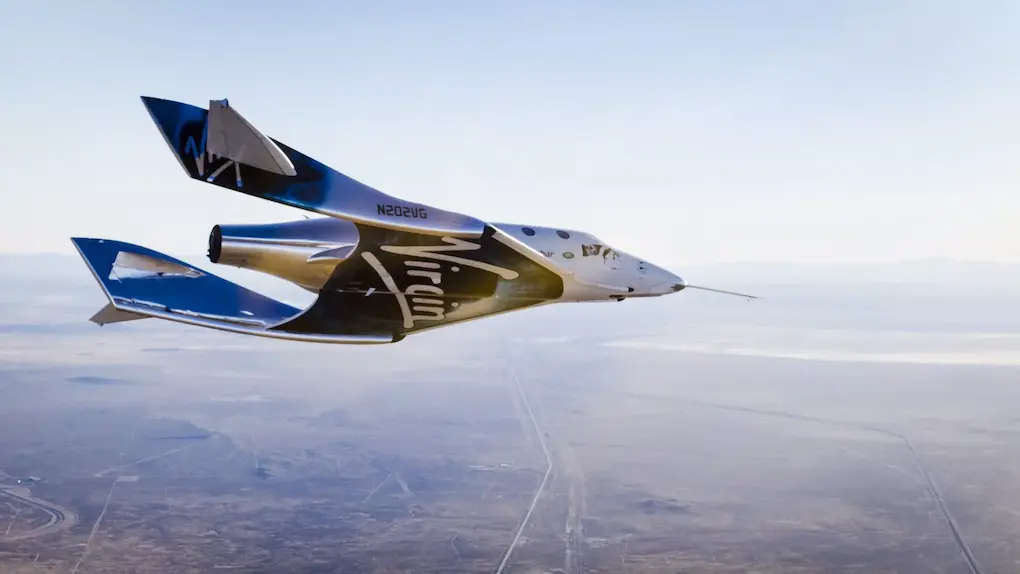
4. Roscosmos/ Space Adventures Customized ISS Trip
Roscosmos/ Space Adventures Customized ISS Trip: $50-60million for a 12-day trip to the ISS at 408 km
- In October 2021 an actress and director shot scenes for the first movie filmed in space
- December 2021 Japanese billionaire Yusaku Maezawa and Yozo Hirano for two days (same billionaire planning to go to the moon with SpaceX)
- With the current situation between Russia and Ukraine, this option is effectively nonexistent currently
5. Space Perspective
Space Perspective: a six-hour balloon ride to space/ the stratosphere on their “Spaceship Neptune” at $125,000
- Rides are currently scheduled to begin by the end of 2024.
- A pressurized capsule will be slowly lifted by a football-field-sized hydrogen-filled balloon 19 miles (30 km) into the stratosphere, about 3 times the altitude of commercial planes.
- The passenger cabin features a bar, bathroom, and windows for sightseeing and is expected to carry 8 passengers and 1 pilot per trip.
6. Aurora Space Station (no longer in development)
Aurora Space Station was supposed to be the world’s first luxury space hotel, offering a 12-day stay for $9.5 million allowing them to free float, observe space and earth, practice hydroponics and play in a hologram deck, but they shut down operations and refunded all deposits in March 2021. They received a lot of media attention and therefore are noted here due to that notoriety.
Conclusion: the current cost of flying to space
Currently, it is only available to those who can spend an average of $250,000 to $500,000 for suborbital trips (about a fifteen-minute ride to the edge of space and back) or flights to actual orbit at more than $50 million per seat (though typically a longer trip than 15 minutes).
It could be free/ discounted if you can find a sponsor, often for nonprofit/ charity purposes, or if you are someone of notoriety that can help spread the company’s mission.
Waitlists are available for most offerings, with a deposit, with many stretching years into the future, which might end up helping you have a spot at a more reasonable price in the future if you can save up.
Many companies are looking to provide extended stay options on private space stations in the future, similar to how you might book a flight somewhere and stay in a hotel for a few days. Again, for the immediate future, this is estimated to cost tens of millions of dollars. The biggest portion of the cost would be launching them, though it is still estimated that a couple million dollars will be needed to cover the expenses of your stay while you are on the space station, whether that is included in the ticket price or added on top of that.
Many companies are hopeful they can eventually price a trip to space down to $100,000 but that will likely take some time, even with the cost-saving measures of reusable boosters. Many forms of recent technology have evolved exponentially in recent years and with dropping price rates as well. Just as plane travel was originally prohibitively expensive, but has now become fairly reasonable for the average consumer, the hope is that the same will eventually happen with space tourism, but we will have to see how long that takes.
While the possibility of going to space is still out of reach for many of us, hopefully, the advancements in recent years and those yet to come will help to continually lower the costs of going to space, just as has occurred in many other fields. This author, for one, truly hopes that the interest of the elite who are currently able to participate in these offerings will spur research and development, not just of space tourism but space exploration in general, to help fuel a quicker journey to space access for all

Written by Sarah Hoffschwelle
Sarah Hoffschwelle is a freelance writer who covers a combination of topics including astronomy, general science and STEM, self-development, art, and societal commentary. In the past, Sarah worked in educational nonprofits providing free-choice learning experiences for audiences ages 2-99. As a lifelong space nerd, she loves sharing the universe with others through her words. She currently writes on Medium at https://medium.com/@sarah-marie and authors self-help and children’s books.
Wow! There's more to read 🚀
This page is part of our collection of articles about astronauts . If you enjoyed the read, then you’ll love the following articles.

How much do astronauts get paid?
The requirements to become an astronaut are extremely rigorous. Does their salary match the difficulty of their profession?
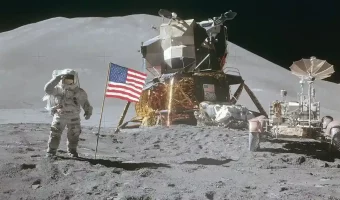
How many flags are on the Moon? The up-to-date list
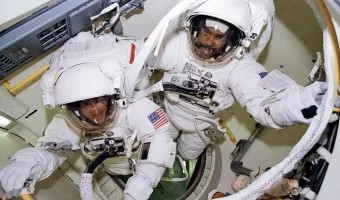
What are the different types of astronauts suit?
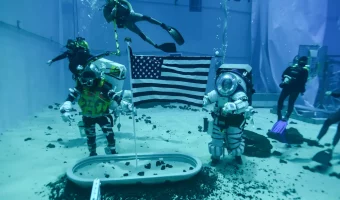
How do astronauts train for zero-gravity environments?
Pioneer humanity’s new space age.
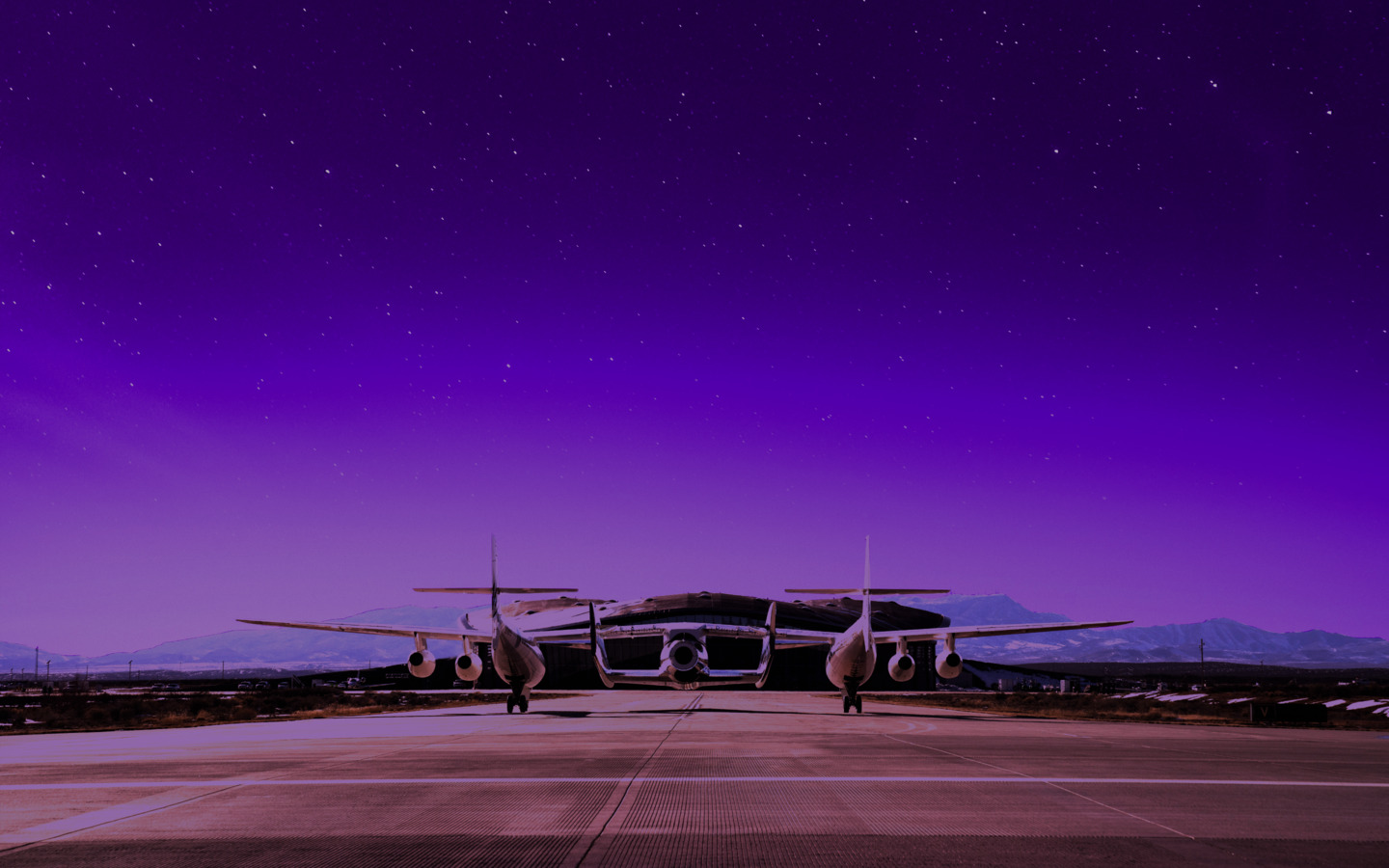
Spaceflight has the unique ability to shift our perspectives, our technology, and even our trajectory as a species.
As the spaceline for Earth, our mission is to transform access to space for the benefit of humankind; to reveal the wonder of space to more people than ever before.
Join us, and help pioneer this exciting new space age for humanity.
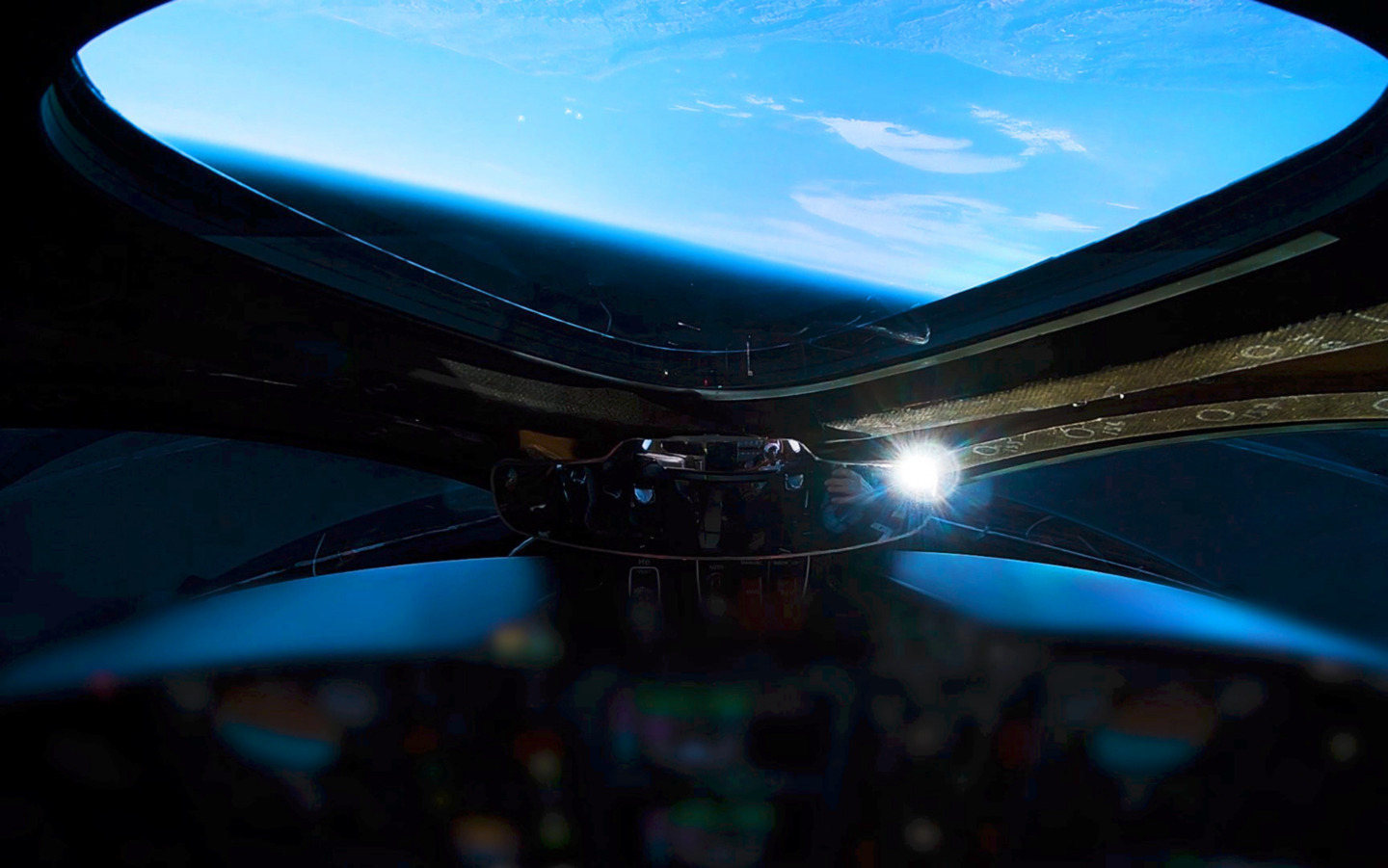
Find your space in history.
Fewer than 700 humans have ever experienced space. As a Virgin Galactic astronaut, your journey marks the dawn of a new space age, where leaving Earth’s atmosphere is an experience no longer reserved solely for professional astronauts.
From the moment you join our global community of pioneering adventurers, to the day you earn your astronaut wings, to the years of telling the greatest story off Earth, your spaceflight can change the world for good.
“Taking more and more passengers out into space will enable them, and us, to look both outwards and back, but with a fresh perspective in both directions.”

- Park Overview Explore Missions Zones
- Heroes and Legends Space Pioneers
- Behind the Gates Kennedy Space Center Bus Tour
- Race to the Moon Apollo Moon Landing
- Shuttle: A Ship Like No Other NASA's Space Shuttle Program
- NASA Now + Next Preparing for Journey to Mars
- All Attractions
- Plan Your Visit
- Hours Of Operation
- Hotel Packages
- Travel Information
- Events Overview
- Event Calendar
- See A Launch
- Groups Overview Plan Events and Tours
- Youth Groups Programs and Field Trips
- Scouts Adventures for Scout Troops
- Private Events Events and Custom Tours
- International Programs and Custom Tours
- Camp KSC Day Camp for Students
- Educators Resources for Teachers
- Programs Educational Programs at KSC
- Accessibility Information

Kennedy Space Center Visitor Complex℠ offers a variety of ticket options and add-on enhancements to create the best experience for your next visit!
1-Day Admission Ticket
Included with Admission
- Gateway™: The Deep Space Launch Complex featuring Spaceport KSC
- Space Shuttle Atlantis® and the Shuttle Launch Experience®
- Kennedy Space Center Bus Tour
- Apollo/Saturn V Center
- Heroes and Legends featuring the U.S. Astronaut Hall of Fame®
- Astronaut Encounter
Planet Play
- Rocket Garden guided tours
- Journey to Mars
- 3D Space Films
- Character Appearances
- Other scheduled presentations and films
Not Included with Admission
The following experiences are add-on enhancements and are not included with daily admission.
- Chat with an Astronaut
- Special Interest Tours (extended bus tours)
- Astronaut Training Experience®
- Astronaut Training Experience Training Stages
A 1-Day Admission Ticket is valid ONLY for the day selected during the ticket purchase process.
This ticket does not include parking.
2-Day Admission Ticket
A 2-Day Admission Ticket is valid beginning on the day selected during the ticket purchase process. Both admissions must be used within 6 months of that selected date.
Senior 1-Day Admission Ticket
Seniors age 55+ experience special savings on 1-day admission to Kennedy Space Center Visitor Complex.
Tickets must be purchased at the ticket kiosks or at Will Call upon arrival.
Senior 2-day admission ticket.
Seniors age 55+ experience even more savings on 2-day admission to Kennedy Space Center Visitor Complex.
Military 1-Day Admission Ticket
U.S. military receives a discount on adult and child admission.
VERIFY WITH ID.ME OR PRESENT VALID PROOF OF SERVICE AT WILL CALL.
Members of the U.S. Military (active, retired and veterans) receive $5 off adult and child one-day or two-day admission tickets. There are three ways to receive the discount: on-site at the ticket kiosks, on-site at Will Call, and online.
KennedySpaceCenter.com*
Tickets may be purchased online after ID.me verification. You will be directed to log in or create an account with ID.me during the purchasing process. Once verified, you may purchase your discounted ticket(s).
On-Site (Ticket Kiosks)*
At the kiosks, you will be given a barcode to scan with your mobile device which will take you to ID.me for log in and verification. Follow on-screen prompts. Once verified, you may purchase your discounted ticket(s). This option for purchase will be coming soon.
On-Site (Will Call)
If you do not have an ID.me account, you may bring your proof of service (such as DD-214, Choose VA card, retiree ID, driver’s license with the Veterans designation, or active duty military ID) to the Will Call agents upon arrival. They will verify your service and apply the discount.
The discount can be applied to up to 6 guests per transaction.
*Please note that it is highly recommended you have an ID.me account before purchasing. ID.me may not verify your credentials immediately if this is the first time documentation is submitted.
Military 2-Day Admission Ticket
U.S. military receives a higher discount on a 2-day adult and child admission.
ATLANTIS ANNUAL PASS
Enjoy a year of unlimited admission, including free parking, 10% off admission for up to six accompanying guests per visit, and discounts on food and retail.
Atlantis annual pass perks
Included with the Atlantis Annual Pass:
- Admission for one year*
- 10% off admission for up to six guests per visit
- Lanyard to match the pass level
- Monthly Newsletter plus rocket launch and event alerts (when providing an email address)
- Free parking each visit ($10 value per visit)
- 10% off retail and food and beverage purchases
- 10% off Astronaut Training Experience® and Camp Kennedy Space Center®
- Exclusive access to special passholder events
* Annual passes are not valid for separately priced tickets such as special launch viewing and events. ** Passholder must check the box to sign up for exclusive emails during the purchasing process.
Annual passholders receive a 10% discount on many separately priced activities when admission is included. Terms and conditions are subject to change.
- Rocket Garden rocket tours
NOT INCLUDED WITH ADMISSION
The emailed tickets received online allow for the first entry to the visitor complex. You may print your Atlantis Annual Pass or display it on your mobile device. Upon arrival to Kennedy Space Center Visitor Complex, go directly to the turnstiles at the main entrance. Scan the barcode on one ticket at the turnstile and once verified, you will be admitted. Visit Guest Services to exchange each ticket for an annual pass. Your photo will be taken at the time the annual pass is issued.
Cosmic Club Family Annual Pass
INCLUDED WITH the Cosmic Club Family Annual Pass
With a Cosmic Club Family Annual Pass, your entire family will enjoy:
- Admission for one year*
- Two adult annual passes, which will also permit entry for four children ages 3-11 per visit
- Save $50 on select birthday party packages in Planet Play
- Free parking each visit ($10 value per visit)
- 10% off daily admission for up to 6 additional guests per visit
- 10% off most retail and food and beverage purchases
- 10% off Camp Kennedy Space Center and Virtual Camp Kennedy Space Center
- Up to six Collectable Souvenir Cups with $0.99 refills
- Front of the line access for Planet Play
- Exclusive access to special passholder events
*Annual passes are not valid for separately priced tickets such as special launch viewing and events. ** Passholder must check the box to sign up for exclusive emails during the purchasing process.
INCLUDED WITH ADMISSION
- When purchasing the Cosmic Club Family Pass, you will be asked to provide the names of the two adults associated with the family pass. Each adult will have their own annual pass card, redeemed on site during their first visit. The emailed tickets received online allow for the first entry to the visitor complex. You may print your Cosmic Club Family Annual Pass or display them on your mobile device. Upon arrival to Kennedy Space Center Visitor Complex, go directly to the turnstiles at the main entrance. Scan the barcode on one ticket at the turnstile and once verified, you will be admitted. Each ticket is valid for one entry only.
- Visit Guest Services to exchange each ticket for an annual pass. Guest Services is located inside the turnstiles and to the right. Each named passholder must redeem this ticket on site within 30 days of the purchase date. Your photo will be taken at the time the annual pass is issued. The family annual pass begins as soon as one passholder redeems this ticket at the visitor complex.
Annual passes are not valid for separately priced tickets such as special launch viewing and events. Annual passholders receive a 10% discount on many separately priced activities when admission is included. Terms and conditions are subject to change.
KSC Explore Tour
Ignite your imagination on the KSC Explore Tour . Get closer to restricted areas such as launch pads and the Vehicle Assembly Building at America’s multi-user spaceport. This 2 hour tour includes stops for photo opportunities along the way before concluding at the Apollo/Saturn V Center.
With a space expert as your guide, tour America’s multi-user spaceport and make stops along the way for iconic photographic views. Ignite your imagination on the KSC Explore Tour .
Go beyond the Kennedy Space Center Bus Tour, included with admission, with this Explore Tour, stopping to capture photo opportunities and view icons of NASA spaceflight operations. Tour availability and routes may be altered at any time with or without any notice due to operational requirements. Safety protocols require an alternate tour bus route during days leading up to a launch from Launch Complex 39A.
* In addition to daily admission ticket or annual pass. Multiple tours are not recommended.
Chat With An Astronaut
Sit down in a casual, small-group setting, enjoy a sampling of food and beverages and ask a NASA astronaut your most pressing questions.
INTRODUCING CHAT WITH AN ASTRONAUT
Enjoy a sampling of food and beverages while having a group conversation about what it is really like to live and work in space. with plenty of time for an engaging Q & A session.
Inclusions:
- A continental breakfast in the morning, or chef’s choice of culinary samplings in the afternoon
- 1 alcoholic drink per adult ticket (more available for purchase)
- A commemorative gift and lithograph (signed portrait) of the astronaut
Due to the small setting of this experience, Chat With An Astronaut is not available to groups. There is a maximum of 6 tickets purchased per transaction. This experience is indoors with social distancing practices in place. For more information on our Trusted Space efforts against the spread of COVID-19, visit our Health & Safety Procedures page.
Land and Drive on Mars Training Stage
Navigate the Martian surface! This full-motion simulator will place you in the Commander or Pilot seats where you hone your skills and drive over the rough Martian terrain. With varying degrees of motion intensity, everyone can drive on Mars.
All ATX Training Stages are perfect for guests looking to kick off their space exploration training during their visit without doing the full ATX program.
REQUIREMENTS FOR ALL ATX TRAINING STAGES:
- ATX Training Stages must be purchased in addition to daily admission.
- All ATX Training Stages are for individuals and groups ages 10 and older. Trainees that are ages 10 - 17 will require a paying, participating adult.
- Allow 30 minutes in your day for your ATX Training Stage.
- Program is presented in English both verbally and in text.
- Minimum height for this simulator is 51 inches/1.3 meters tall.
- Maximum weight for all simulators is 275 pounds/127 kilograms.
- Closed toed shoes are required.
SAFETY PRECAUTIONS:
- All Astronaut Training Experience Simulators: For safety, you should be in good health and free from high blood pressure, heart, back or neck problems, motion sickness, or other conditions that could be aggravated by this experience. Expectant mothers should not participate.
- Land and Drive on Mars Simulator: Those who have had recent surgery or injury should not ride. Participants must be at least 51” tall.
Due to limited capacities and enhanced sanitization practices, availability is limited to a first come, first served basis. We highly recommend you pre-book your training stage before you arrive .
Walk on Mars Training Stage
Time to step onto the Red Planet. Walk on Mars through immersive virtual reality with the help of your crew. Nowhere else on Earth can you explore Mars quite like this.
Requirements For All ATX Training Stages:
- Minimum height for this simulator is 48 inches/1.22 meters tall.
Safety Precautions:
- All Astronaut Training Experience Simulators: For safety, you should be in good health and free from high blood pressure, heart, back or neck problems, motion sickness, or other conditions that could be aggravated by this experience. Expectant mothers should not participate.
- Walk on Mars Virtual Reality: If you experience seizures, loss of awareness, eye strain, altered vision or other visual abnormalities, dizziness, disorientation, or any symptom related to motion sickness, you should not participate. Guests who have pre-existing binocular vision abnormalities should not participate.
Microgravity Training Stage
Train for weightlessness and conduct your own spacewalk in the Microgravity Simulator. You and your crew will work together in order to successfully complete a series of training challenges needed to set you on a path to Mars, all while in a frictionless environment.
*In addition to daily admission ticket or annual pass.
Astronaut Training Experience
Nowhere else on Earth can you train to go to Mars and experience astronaut training. Through exciting and immersive simulation technology, prepare for the next mission to Mars.
Trainees do not need daily admission to experience ATX.
- ATX is a 5 hour program, beginning at 8:30 AM and 4:30 PM on the dates available.
- ATX is suitable for ages 10 and older. Trainees that are ages 10 - 17 will require a paying, participating adult.
SAFETY AND RESTRICTIONS:
English Flue ncy: Due to safety instructions and the interactive content essential to this program, each guest must be fluent in English in order to participate in ATX.
All Astronaut Training Experience Simulators: For safety, you should be in good health and free from high blood pressure, heart, back or neck problems, motion sickness, or other conditions that could be aggravated by this experience. Expectant mothers should not participate.
Lander/Rover Simulator: Those who have had recent surgery or injury should not ride. Participants must be at least 51” tall.
Walk on Mars Virtual Reality: If you experience seizures, loss of awareness, eye strain, altered vision or other visual abnormalities, dizziness, disorientation, or any symptom related to motion sickness, you should not participate. Guests who have pre-existing binocular vision abnormalities should not participate.
Spacewalk Training: Participants must be at least 48 inches/1.22 meters tall. Max weight 275 pounds/127 kilograms.
Admission is not included, but it is not required for the Astronaut Training Experience.
Mars Base 1
Travel to Mars to live and work for the day, solving authentic science and engineering challenges. Rookie Astronauts manage the Base Operations Center on Mars, harvest plants in the Botany Lab, program robots to optimize solar energy and adapt to the challenges of living on Mars.
Due to safety instructions and the interactive content essential to this program, each guest must be fluent in English in order to participate.
- Mars Base 1 begins at 9:00 am and is an all-day program.
- Appropriate for ages 10 and older. Trainees that are ages 10 - 17 will require a paying, participating adult.
- Wheelchair accessible, but with some possible mobility challenges.
Learn more about Mars Base 1 .
Mars Base 1 does not include daily admission to the visitor complex, but daily admission is not required to participate. Add admission to visit on your second day and have the complete Kennedy Space Center Visitor Complex experience!
Admission is not included.
Enhance Your Visit
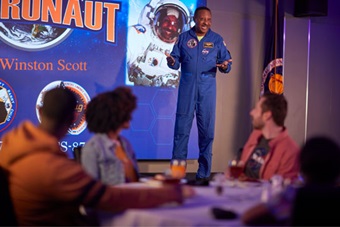
Play on the Planets
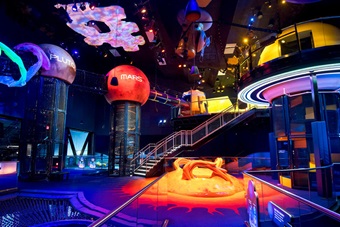
Experience a Ship Like No Other
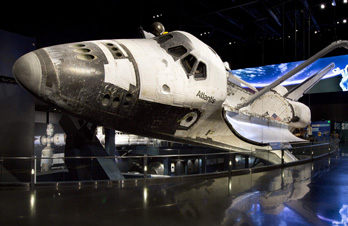
Space Shuttle Atlantis®
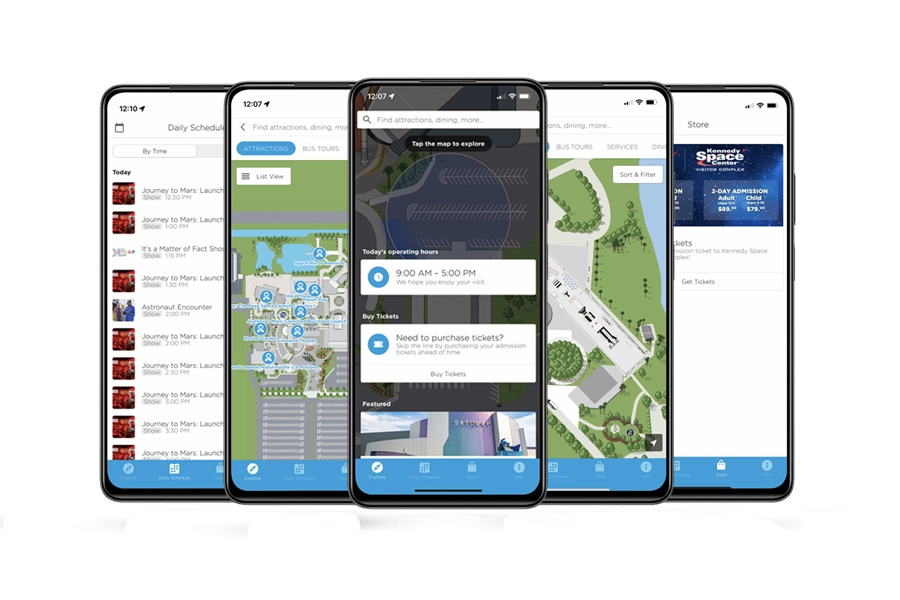
Kennedy Space Center Official Guide
Save a Map. Download the free App!
- Kennedy Space Center Official Guide App is available for free from the App Store
- Plan your trip with features such as maps, FAQ’s, and detailed descriptions of shows and attractions.
- Enhance your visit with information on guest services, dining and shopping, and for updated information including rocket launches.
- Use the wayfinding maps to maneuver your way around the visitor complex and the Apollo/Saturn V Center
Admission prices are plus tax. Daily Admission tickets are good for a one-day visit to Kennedy Space Center Visitor Complex℠, excluding special promotional offers and black out dates. Prices are subject to change without notice. KSC Special Interest Tours, ATX and Chat With An Astronaut are only valid for date of reservation.
Military Discount: Price good with proof of valid ID for United States active duty military at the ticket window. Reservist, retiree and active duty military receive discount when purchasing tickets through a participating MWR/ITT Travel office.
Annual passes are non-transferable and nonrefundable. Purchases of annual passes may be made at the Kennedy Space Center Visitor Complex℠ front gate or guest services, online or by calling the reservations office at 855.433.4210.
Seating is limited at Chat With An Astronaut, and KSC Special Interest Tours are limited and subject to availability. Due to the special nature of these tours, space is limited. Advance reservations are suggested for both special programs. All exhibits are subject to change, and tours may be altered or closed due to operational requirements or launch preparations.
Space Tourism: Can A Civilian Go To Space?

2021 has been a busy year for private space tourism: overall, more than 15 civilians took a trip to space during this year. In this article, you will learn more about the space tourism industry, its history, and the companies that are most likely to make you a space tourist.
What is space tourism?
Brief history of space tourism, space tourism companies, orbital and suborbital space flights, how much does it cost for a person to go to space, is space tourism worth it, can i become a space tourist, why is space tourism bad for the environment.
Space tourism is human space travel for recreational or leisure purposes . It’s divided into different types, including orbital, suborbital, and lunar space tourism.
However, there are broader definitions for space tourism. According to the Space Tourism Guide , space tourism is a commercial activity related to space that includes going to space as a tourist, watching a rocket launch, going stargazing, or traveling to a space-focused destination.
The first space tourist was Dennis Tito, an American multimillionaire, who spent nearly eight days onboard the International Space Station in April 2001. This trip cost him $20 million and made Tito the first private citizen who purchased his space ticket. Over the next eight years, six more private citizens followed Tito to the International Space Station to become space tourists.
As space tourism became a real thing, dozens of companies entered this industry hoping to capitalize on renewed public interest in space, including Blue Origin in 2000 and Virgin Galactic in 2004. In the 2000s, space tourists were limited to launches aboard Russian Soyuz aircraft and only could go to the ISS. However, everything changed when the other players started to grow up on the market. There are now a variety of destinations and companies for travels to space.
There are now six major space companies that are arranging or planning to arrange touristic flights to space:
- Virgin Galactic;
- Blue Origin;
- Axiom Space;
- Space Perspective.
While the first two are focused on suborbital flights, Axiom and Boeing are working on orbital missions. SpaceX, in its turn, is prioritizing lunar tourism in the future. For now, Elon Musk’s company has allowed its Crew Dragon spacecraft to be chartered for orbital flights, as it happened with the Inspiration4 3-day mission . Space Perspective is developing a different balloon-based system to carry customers to the stratosphere and is planning to start its commercial flights in 2024.
Orbital and suborbital flights are very different. Taking an orbital flight means staying in orbit; in other words, going around the planet continually at a very high speed to not fall back to the Earth. Such a trip takes several days, even a week or more. A suborbital flight in its turn is more like a space hop — you blast off, make a huge arc, and eventually fall back to the Earth, never making it into orbit. A flight duration, in this case, ranges from 2 to 3 hours.
Here is an example: a spaceflight takes you to an altitude of 100 km above the Earth. To enter into orbit — make an orbital flight — you would have to gain a speed of about 28,000 km per hour (17,400 mph) or more. But to reach the given altitude and fall back to the Earth — make a suborbital flight — you would have to fly at only 6,000 km per hour (3,700 mph). This flight takes less energy, less fuel; therefore, it is less expensive.
- Virgin Galactic: $250,000 for a 2-hour suborbital flight at an altitude of 80 km;
- Blue Origin: approximately $300,000 for 12 minutes suborbital flight at an altitude of 100 km;
- Axiom Space: $55 million for a 10-day orbital flight;
- Space Perspective: $125,000 for a 6-hour flight to the edge of space (32 km above the Earth).
The price depends, but remember that suborbital space flights are always cheaper.
What exactly do you expect from a journey to space? Besides the awesome impressions, here is what you can experience during such a trip:
- Weightlessness . Keep in mind that during a suborbital flight you’ll get only a couple of minutes in weightlessness, but it will be truly fascinating .
- Space sickness . The symptoms include cold sweating, malaise, loss of appetite, nausea, fatigue, and vomiting. Even experienced astronauts are not immune from it!
- G-force . 1G is the acceleration we feel due to the force of gravity; a usual g-force astronauts experience during a rocket launch is around 3gs. To understand how a g-force influences people , watch this video.
For now, the most significant barrier for space tourism is price. But air travel was also once expensive; a one-way ticket cost more than half the price of a new car . Most likely, the price for space travel will reduce overtime as well. For now, you need to be either quite wealthy or win in a competition, as did Sian Proctor, a member of Inspiration4 mission . But before spending thousands of dollars on space travel, here is one more fact you might want to consider.
Rocket launches are harmful to the environment in general. During the burning of rocket fuels, rocket engines release harmful gases and soot particles (also known as black carbon) into the upper atmosphere, resulting in ozone depletion. Think about this: in 2018 black-carbon-producing rockets emitted about the same amount of black carbon as the global aviation industry emits annually.
However, not all space companies use black carbon for fuel. Blue Origin’s New Shepard rocket has a liquid hydrogen-fuelled engine: hydrogen doesn’t emit carbon but simply turns into water vapor when burning.
The main reason why space tourism could be harmful to the environment is its potential popularity. With the rising amount of rocket launches the carbon footprint will only increase — Virgin Galactic alone aims to launch 400 of these flights annually. Meanwhile, the soot released by 1,000 space tourism flights could warm Antarctica by nearly 1°C !
Would you want to become a space tourist? Let us know your opinion on social media and share the article with your friends, if you enjoyed it! Also, the Best Mobile App Awards 2021 is going on right now, and we would very much appreciate it if you would vote for our Sky Tonight app . Simply tap "Vote for this app" in the upper part of the screen. No registration is required!
- Search Please fill out this field.
- Manage Your Subscription
- Give a Gift Subscription
- Sweepstakes
- Space Travel + Astronomy
Space Tourism Is Here: Booking a Trip to the Final Frontier
The next era of space exploration and innovation is here — and we're all invited. A billionaire space race is underway as Blue Origin, Virgin Galactic, SpaceX, and others are testing the technology to take us to places previously visited only by highly trained astronauts. Space tourism is officially taking flight, and it might just save the Earth.
:max_bytes(150000):strip_icc():format(webp)/Jamie-Carter-618d9aa6e45f4ecf9b9dcaabbec68029.jpg)
In July 2021, we watched as Richard Branson and Jeff Bezos took to the skies in a giant leap for the space tourism industry, but their launches to the edge of space weren't timed particularly well. Against the backdrop of a global pandemic and climate emergency, two billionaires taking joy rides to space may not have been good optics, but don't underestimate what just happened — and how important it could be for the future of humanity.
With the first crewed launches of Virgin Galactic's supersonic space plane and Blue Origin's reusable rocket, a world of commercial space travel is taking its first step. Both companies plan to begin regular, scheduled trips for paying space tourists in the near future, but their visions stretch back many years to the beginning of human spaceflight.
The Space Race: Then and Now
Bezos's Blue Origin chose an auspicious day to send its first crew to space. July 20, 2021 was exactly 52 years after Apollo 11 astronauts Neil Armstrong and Buzz Aldrin became the first humans to walk on the moon. But that wasn't the only major space travel anniversary celebrated in 2021.
April 12 was the 60th anniversary of Russian cosmonaut Yuri Gagarin becoming the first human to not only reach space, but also go into orbit around Earth. Meanwhile, May 5 saw the 60th anniversary of NASA's Freedom 7 mission, which launched Alan Shepard on a suborbital flight that lasted 15 minutes. He reached an altitude of 101 miles to become the first American in space before his capsule parachuted to splashdown in the ocean.
The name of Blue Origin's New Shepard launch system is no coincidence. Its mission profile is almost identical to America's inaugural 1961 spaceflight, save for billionaire-grade comfy seats and large windows. From Launch Site One near Van Horn in the West Texas desert, that rocket fires a capsule containing up to six people (but no pilot) into space, which then parachutes down 15 minutes later.
The Virgin Galactic experience is different. Its supersonic rocket-powered spaceplane SpaceShipTwo VSS Unity seats six passengers and two highly trained pilots. It takes off on a runway from Spaceport America near Truth or Consequences, New Mexico, while strapped to a mothership. At 52,000 feet, it detaches and burns its rocket engine for one minute to reach Mach 3 speeds and touch the edge of space. After a few minutes of weightlessness (and a chance for passengers to see the curvature of Earth against the blackness of space), it glides back to land on a runway.
The Price for a Ticket to Space
These short trips are anticipated to cost between $250,000 and $500,000, but in January 2022, expect to see a truly out-of-this-world private trip to space with an even more astronomical price tag. It will come from the other, arguably much more important billionaire in the space tourism bubble: Elon Musk. Axiom Mission 1 will see his company, SpaceX, launch four private astronauts on behalf of Houston-based space tourism company Axiom Space. An American real estate investor, a Canadian investor, a former Israeli Air Force pilot, and an ex-Space Shuttle pilot will launch on an incredible orbital mission in its Crew Dragon spacecraft.
At $55 million per ticket, this is ultra-aspirational space tourism of the highest order. "The experience is drastically different because they will be launching on a SpaceX rocket and going to the International Space Station (ISS) for 10 days," says Christina Korp, cofounder of Space for a Better World . "They will be doing what real astronauts do, and I don't think it's an accident that Virgin Galactic and Blue Origin did their flights before Axiom's mission." Axiom Space intends to launch a private space station — the first "space hotel" — as early as 2024 to give space tourists somewhere to visit.
The Future of Space Tourism — and of Our Planet
Musk talks of Mars colonies and humanity spreading out into the cosmos, but since 2012, SpaceX has made a lot of money from NASA contracts to launch supplies to the ISS. In the summer of 2020, it began ferrying NASA astronauts there, too. SpaceX's Starship — currently being tested — will land two NASA astronauts, the first woman and the next man, on the moon in 2024.
You see, space tourism is just a sideshow to a bigger and more worthy goal of saving the planet. Next year, Blue Origin plans to test its reusable New Glenn rocket — named after John Glenn, the first American to orbit the Earth in 1962 — which will be able to take cargo and astronauts into orbit. Bezos has said he thinks we need to go to space to save Earth, specifically by protecting the planet from pollution by moving heavy industry into space. That can only happen when space travel is safe, scheduled, and affordable. Space tourism will help create a competitive space economy, just as mass tourism has lowered the cost of flying.
Similarly, Branson's aim is to increase access to space. "We are at the vanguard of a new space age…Our mission is to make space more accessible to all," he said after his inaugural flight. A microgravity experiment was on board that first flight on July 11, with similar plans for all subsequent trips. Meanwhile, sister company Virgin Orbit's LauncherOne sends small satellites and science payloads into orbit via a small rocket launch from underneath the wing of a Boeing 747.
The scientific spin-offs for all of us down on Earth are currently unknown, but the space community has an incredible track record when it comes to innovation. "Clean energy as solar power is from the space program," says Korp. "Solar panels were invented to power satellites and refined to power spacecraft." Cue GPS, weather forecasting, telecommunications, and even internet access. There are also fleets of satellites large and small that observe how our planet is behaving and changing. "It's the space industry that's monitoring climate change, tracking hurricanes, and learning how to survive in the extreme environment of space — including experiments to grow food with almost no water, for example," says Korp. Every single space mission, including suborbital and even zero-gravity flights, have environmental experiments on board as default.
"This is not about escaping Earth," said Bezos after the flight. "The whole point is, this is the only good planet in the solar system and we have to take care of it." Bezos wants to scale up into affordable space travel. That will enable long-term, commercial projects that ultimately may help prevent further climate change, or at least help us cope with its consequences.
However, Blue Origin, Virgin Galactic, and SpaceX won't be the only way to reach space. Russian space agency Roscosmos is expected to take "citizen space explorers" to the ISS soon, but the most affordable way to get "black sky time" may be with Space Perspective , which will launch a pressurized capsule propelled by a high-performance space balloon.
The six-hour flight will cost around $125,000 per person and launch from Space Coast Spaceport in Florida in 2024. "Unlike short-lived, adrenaline-fueled moments of weightlessness, Space Perspective flights bring you space calm," says Jane Poynter, founder, co-CEO, and CXO of Space Perspective. The flights on Spaceship Neptune involve a gentle ascent at just 12 miles per hour for a six-hour tour of Earth's biosphere, culminating in a view of our beautiful planet from space.
Space tourism is here at last. Instagram had better get ready for "Earth selfies."
Program Credits
Editorial Lead: Elizabeth Rhodes Contributors: Jamie Carter and Stefanie Waldek Visuals Editor: Mariah Tyler Art Director: Jenna Brillhart Designer: Sarah Maiden
We have completed maintenance on Astronomy.com and action may be required on your account. Learn More

- Login/Register
- Solar System
- Exotic Objects
- Upcoming Events
- Deep-Sky Objects
- Observing Basics
- Telescopes and Equipment
- Astrophotography
- 20 of the Best Places to See the Eclipse
- Times, Places, State-by-State Guide to the Eclipse
- More 2024 Eclipse Articles
- Space Exploration
- Human Spaceflight
- Robotic Spaceflight
- The Magazine
Six ways to buy a ticket to space in 2021
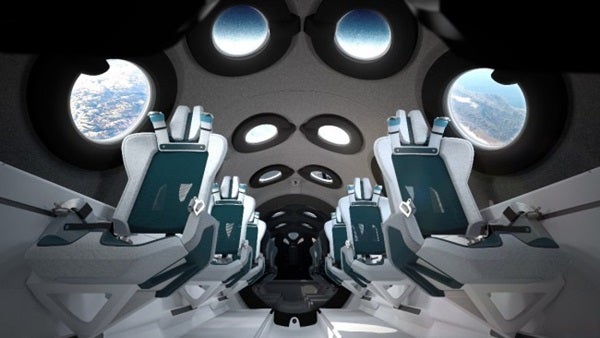
Earlier this month, SpaceX’s Crew Dragon capsule safely ferried NASA astronauts Doug Hurley and Robert Behnken back to Earth following a multi-month trip to the International Space Station (ISS). No privately built spacecraft had ever carried humans into orbit before. But unlike SpaceShipOne, which was a single craft built specifically to win a prize, there are multiple models of the Crew Dragon, each designed to be reused.
It’s finally looking like the exciting era of space tourism is about to erupt. A handful of so-called “new space” companies are now competing to sell space tourists trips on private spacecraft. Each one has a slightly different means of reaching space, and not all of them will get you all the way into orbit. But as long as you’re rich, you should have no problem purchasing your ticket to space.
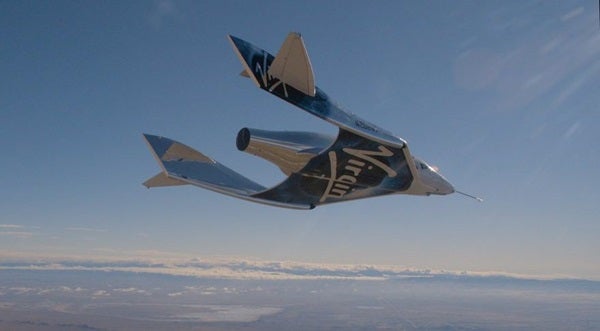
Virgin Galactic
SpaceShipOne was retired after just three successful spaceflights, but the technology lives on in Virgin Galactic’s Spaceship Unity . Like its predecessor, Virgin Galactic’s rocketplane drops from a specially engineered aircraft before boosting itself to 50 miles (80 kilometers) in altitude. That’s high enough for Virgin Galactic’s pilots to earn their astronaut badges. However, others define space via the so-called Kármán line, the generally accepted boundary between Earth’s atmosphere and space that sits 62 miles (100 kilometers) above our planet’s surface.
Virgin Galactic’s goal is to become “the world’s first commercial spaceline,” and eventually they’ll offer regular flights from Spaceport America in southern New Mexico. The company is planning to begin regular flights in early 2021, with CEO Richard Branson slated as the first non-professional pilot to travel on Spaceship Unity .
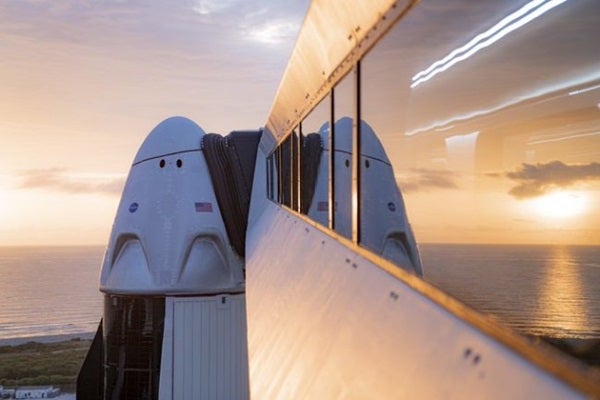
SpaceX is the only private rocket company to ever send a human into orbit. They’re also the only company now NASA-certified to send people to circle Earth. So, when will SpaceX start selling tickets to private citizens for trips to space? In the past, Elon Musk has said that the spacecraft could have a bright future carrying private passengers into orbit. And SpaceX recently announced that it has already sold seats on future Crew Dragon flights through other companies that are handling the logistics.
Ultimately though, Musk’s goal is to settle Mars. And to do that, he needs a bigger spacecraft. That’s why SpaceX’s engineers are working feverishly on its Starship, which is still under development. If the enormous spaceship works, it could literally rocket dozens of space tourists at a time between a number of destinations on Earth, or perhaps throughout the inner solar system. The company says that Starship would be able to travel between any two locations on Earth in less than one hour.
SpaceX is confident enough in their vessel that they already sold a Starship flight around the Moon to Japanese billionaire Yusaku Maezawa. No human has traveled to the Moon in nearly 50 years, and Maezawa, a fashion designer and online clothing retailer, has said he’ll take a group of artists with him.
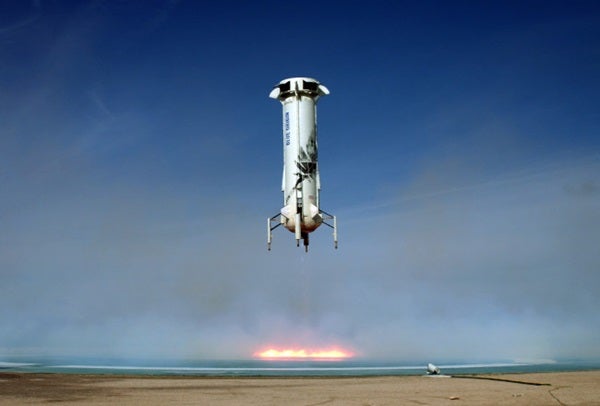
Blue Origin
Jeff Bezos started his rocket company, Blue Origin, back in 2000. And he’s been selling Amazon stock to pump billions of dollars into the effort ever since. Like SpaceX, they’re prioritizing reusable rockets and spacecraft that can drastically reduce the cost associated with spaceflight.
Much of Blue Origin’s effort has gone into developing a pair of rockets: New Shepard and New Glenn.
New Shepard can carry six people inside a suborbital capsule some 60 miles (100 km) into space. Blue Origin has already flown a dozen test flights, and they’re still planning several additional tests before launching passengers. However, in March, Axios reported that Blue Origin could send passengers into space in 2020, though COVID-19 has caused delays across the space industry. If the company can still get its space capsule tested in 2020, it could be on course for paid flights in 2021.
Meanwhile, Blue Origin has announced that it will soon start selling tickets. The company’s website doesn’t list the price of a Blue Origin trip, but Bezos has previously said their space tourists can expect to pay hundreds of thousands of dollars to fly in its New Shepard capsule.
The company is also working hard on their New Glenn rocket, a heavy-lift, reusable launch vehicle that Blue Origin has already invested more than $2.5 billion into developing. It’s larger than SpaceX’s Falcon Heavy rocket, but smaller than the rocket planned with Starship. That size could eventually enable regular passenger trips into orbit and even beyond. The company will need that capacity, too. Blue Origin’s goal is to one day have millions of people living and working in space.
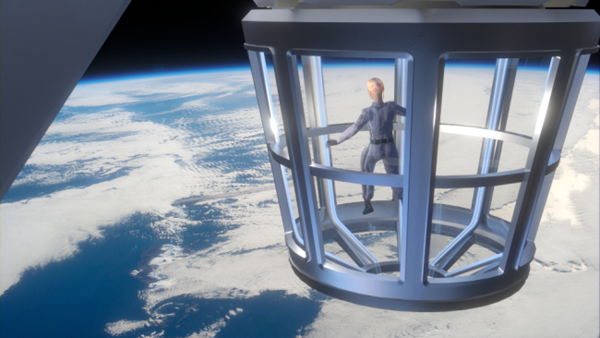
Axiom Space’s goal is to create the world’s first commercial space station. In the meantime, they’ve inked a deal to send a crew of private citizens to the ISS aboard SpaceX’s Crew Dragon capsule in October 2021.
Axiom’s initial crewed mission, dubbed Ax1, should send three paying astronauts to the ISS. Each ticket reportedly costs $55 million. And while it might seem like there’s a small pool of potential ticket buyers at that rate, in the U.S. alone, roughly 75,000 American households have that much money. Axiom also figures it’s just getting started selling tickets to space. In the near future, the company says it will send three crews a year to the ISS.
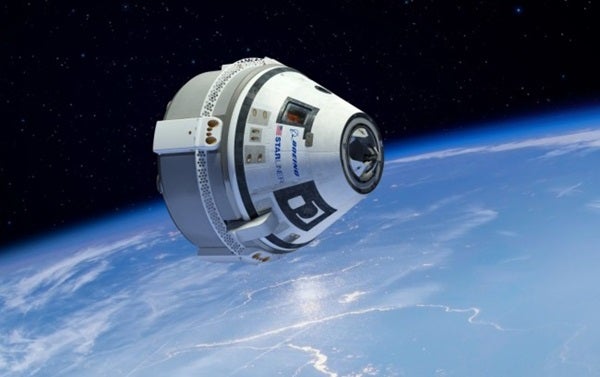
Back in 2014, NASA selected two companies — SpaceX and Boeing — to receive multibillion-dollar contracts to build spacecraft that could ferry astronauts to the ISS. SpaceX made good on the first crewed flight of its Commercial Crew Program contract earlier this year. Meanwhile, Boeing has yet to get its Starliner spacecraft safely to the ISS and back. Their first test flight reached orbit but failed to make the space station, and a NASA review outlined numerous necessary fixes.
Boeing will attempt another uncrewed test flight next year. And if all goes well, they could fly to the ISS by late 2021.
But once Boeing is flying to and from the ISS, the iconic aerospace company is also technically allowed to fly private passengers to the space station. They’ve been quiet on this option, but NASA has said they’d accommodate passengers at a rate of $35,000 per night.
Boeing has also hired a corporate test pilot astronaut, Christopher Ferguson. He’s been training alongside NASA’s astronauts and will be among the first to fly on Starliner. He might not count as a space tourist, but Ferguson will ultimately be part of an entirely new group of professional astronauts that work for private companies, not national space agencies.
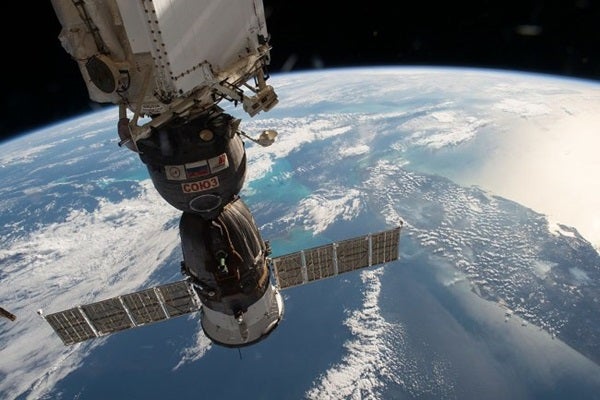
Space Adventures
Space Adventures is an American company that offers private spaceflights to the ISS and, eventually, the moon. Since their founding in 1998, the company has sold a number of other spaceflight related experiences, like simulated zero-gravity airplane flights. And unlike their competitors, Space Adventures has sent space tourists into orbit, too. They’ve been responsible for over half a dozen paid trips to the ISS that made use of Russian spacecraft.
Most recently, they booked a launch to the space station on Russia’s veteran Soyuz spacecraft, which is set for December 2021. The mission, dubbed Soyuz MS-20, will fly with a lone cosmonaut and two Space Adventures tourists.
Space Adventures has arranged another path to get paying customers into space, too. They recently announced a deal with SpaceX that will put four space tourists in a SpaceX capsule and send them into orbit around Earth. How much will it cost? For now, both companies are keeping the cost of these tickets private. But those who do make the trip should get an excellent show. The mission will orbit at several times the height of the ISS.
Unfortunately, few of us have enough disposable income to fund a trip beyond Earth’s atmosphere. But with at least a half dozen ways for the wealthy to purchase a ticket into space next year, the hope is that the cost will continue to decline. And if that happens, you might be closer than you think to regularly having your rocket pass checked by the TSA.

NASA is taking astronaut applications. Here’s how to apply

It’s hard to grow food in space. These sensors can help.
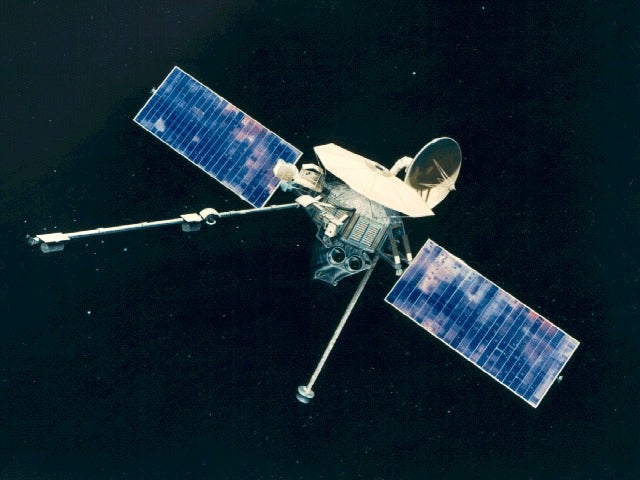
Mariner 10, a mission of firsts, used gravity to bend its way from Venus to Mercury
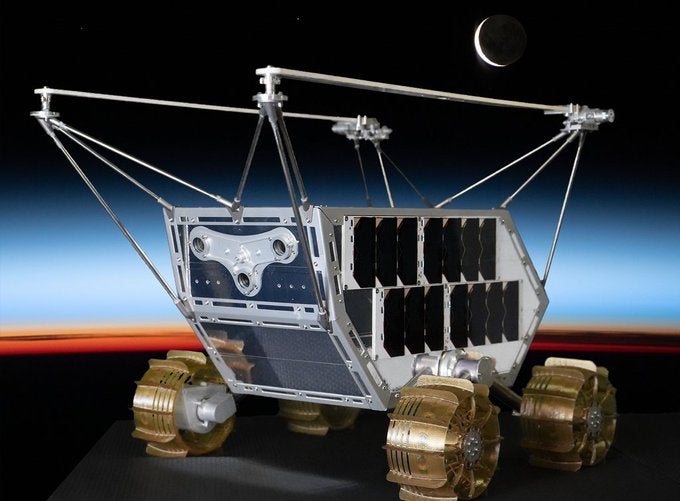
The IM-2 Moon mission will carry a blend of science and art
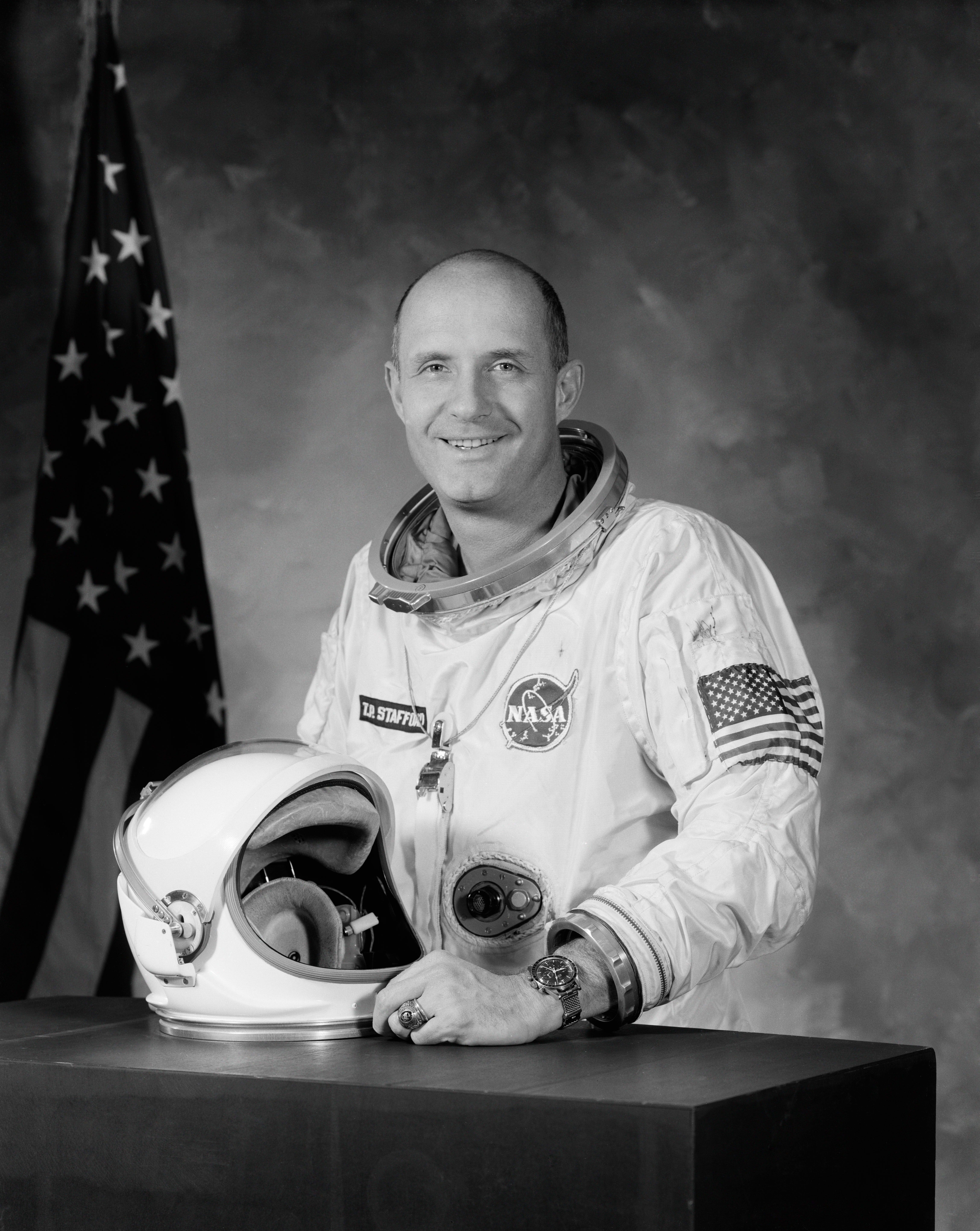
Remembering Tom Stafford, the Apollo commander who did his part to thaw the Cold War

Dwarf galaxies turned on the lights near the dawn of time, JWST reveals

What are the smallest brown dwarfs? The JWST has a new answer
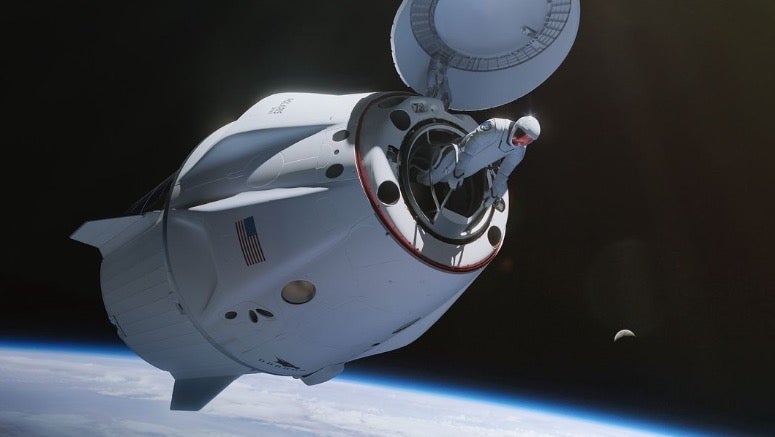
The upgrades to spacesuits that need to be made sooner rather than later

JWST data show intense bursts of radiation are vaporizing parts of a young star’s disk in the Orion Nebula
How much is a seat on Virgin Galactic? $450,000. Here's what each trip includes.

Virgin Galactic will soon sell tickets for space trips to the public. The catch? They cost $450,000.
On Tuesday, the aerospace company announced plans to sell tickets to the general public to snag a seat for a future spaceflight.
Reservations open up Feb. 16 and will cost $450,000. Potential travelers must pay a $150,000 deposit to hold the spot, then pay the rest before their flight. Tickets will be available to 1,000 customers for trips later this year.
The flights will take off from Spaceport America in New Mexico. Virgin Galactic said trips will last about 90 minutes.
"The spaceship gracefully flips while astronauts enjoy several minutes of out-of-seat weightlessness and breath-taking views of Earth from the spaceship’s 17 windows," reads a statement from the company.
BUDGET SMARTPHONES: You can get a good phone without the iPhone price tag
NOT A TYPO: Worldle is like Wordle but with geography puzzles.
Virgin Galactic is among several companies including SpaceX and Blue Origin – run by tech entrepreneurs Elon Musk and Jeff Bezos respectively – pressing forward with plans to eventually support commercial space travel.
On July 11, Virgin Galactic founder Richard Branson was among six crewmembers who traveled aboard the company's space plane, the VSS Unity. Two months later, the Federal Aviation Administration said it was investigating the flight .
Blue Origin launched a manned flight on July 20 with Bezos among the members of the crew. In September, SpaceX launched its first flight with an all-civilian crew.
Follow Brett Molina on Twitter: @brettmolina23 .
To revisit this article, visit My Profile, then View saved stories .
- Backchannel
- Newsletters
- WIRED Insider
- WIRED Consulting
Ramin Skibba
2021 Was the Year Space Tourism Opened Up. But for Whom?

In the early years of this century, executives at Virgin Galactic, founded by the irreverent Richard Branson, predicted that commercial flights to space for paying passengers were only a couple of years away. That turned out to be far too ambitious. Disaster struck the company twice in the next decade: In 2007 an explosion during pre-launch tests of SpaceShipTwo’s rocket systems killed three people. Then in 2014, a pilot was killed during a test flight when the space plane crashed in the Mojave desert.
Now, in 2021, everything looks different. On July 11, Branson and three crew members traveled to Spaceport America, Virgin Galactic’s human spaceflight headquarters in southern New Mexico, and clambered aboard VSS Unity , a much upgraded version of SpaceShipTwo. They blasted toward the edge of space , at an altitude of 54 miles above the Earth, allowing the passengers a panoramic view of the world as they excitedly floated in zero gravity for about four minutes of their hour-long journey.
Nine days later, Blue Origin’s founder, Jeff Bezos, and three others made a similar voyage aboard their New Shepard space vehicle, this time reaching an altitude of 63 miles, also staying aloft and weightless for a few minutes. And then in September, Elon Musk’s SpaceX launched the all-civilian Inspiration4 mission aboard a Crew Dragon spacecraft. They reached an orbit just above the International Space Station’s, flying for about three days before their capsule safely splashed down off the coast of Florida.
After decades of research, development, trial, error, and hype, the dream of commercial spaceflight had finally gotten off the ground. While private passengers have previously hitched rides on NASA shuttles and Russian Soyuz spacecraft, the three billionaire titans of the industry have made it possible to book a trip to space and back on a private spacecraft. With plenty more flights from these companies (and others) on the horizon, space tourism has surely arrived. In fact, the industry is now launching so many people into space that in January the FAA will end its Commercial Space Astronaut Wings program, which was originally designed to promote the industry. (The agency will continue to recognize space travelers on its website.)
“I honestly think that we are at the dawn of an incredible inflection point in history for human spaceflight. I truly believe that seeing Earth from space is transformative and will ultimately help humanity and the Earth in unknown ways,” says Beth Moses, Virgin Galactic’s chief astronaut instructor, who previously worked for NASA and who flew with Branson in July.
“Until this year, it’s predominantly been government-focused—NASA propelling astronauts to the space station. That's an achievement, but also a turning point where we’re noticing the effects of the democratization of space. You don’t need to be an astronaut to go to space,” says Danielle Bernstein, co-lead of the Aerospace Corporation’s Space Safety Institute.
But this access currently depends on the whims and largesse of a handful of billionaires. Despite some lofty rhetoric, the leaders of the industry still struggle to make the case that their rockets have more to offer than expensive trips for the rich and famous. “There’s a surface attempt to make them appear as commercial science vessels, but they’re much more like yachts or cruises,” says University of Chicago space historian Jordan Bimm.

Reece Rogers

David Kushner

David Gilbert

Emily Mullin
Others question the purpose of space tourism too. “These are technological achievements, there’s no doubt about that,” says Kathryn Denning, an anthropologist and space ethics researcher at York University in Toronto. But, she suggests, “their most significant achievement is the domination of the airwaves and television coverage.”
So far, tickets to the edge of space go for six figures—$200,000 or more—while booking an orbital expedition costs up to eight figures. A $200,000 price tag for a brief spaceflight tops the annual income of about 90 percent of Americans . It’s hard not to take note of that, especially at a time of climate crisis , a pandemic, and growing awareness of inequality. Each seat aboard a suborbital flight is like launching a home while there are more than half a million unhoused Americans, or like launching a family’s lifetime health care costs while tens of millions lack health care, or like launching college tuition when a majority of Americans don’t have access to higher education.
“Every time somebody flies for $250,000, while in that same country children aren’t eating and people are lined up along the borders, I have a hard time getting my head around it, to be honest,” Denning says.
But if the 20th-century aviation industry is any guide, while these flights will begin as luxuries, prices will drop, and access to space will broaden beyond ultra-rich people as the market opens up and technologies and infrastructure improve. “If you rewind to 100 years ago, it wasn’t your everyday person taking advantage of airlines that were just beginning to figure out how to fly routes around the world. But nowadays, for a very reasonable sum, anybody can hop on a plane, and they don’t think twice about it. It’s very safe. That’s probably the vision for space,” Bernstein says.
This also isn’t the first time that a handful of wealthy individuals have played an outsize role in US space activities. “It was actually billionaires like Andrew Carnegie and John D. Rockefeller who funded the largest astronomical telescopes in the country in the 19th and early 20th centuries. It was the Guggenheim family that was the primary source of funding for Robert Goddard, who was the first rocketry pioneer in the US,” says Alex MacDonald, chief economist at NASA.
And on the other hand, MacDonald points out, NASA has supported and invested in the burgeoning private space industry for decades, signing a variety of contracts for equipment and services, including with the once-fledgling SpaceX, which turns 20 next spring. NASA’s currently investing in Blue Origin and two other companies to develop designs for a commercial space station to follow the ISS. It’s part of a long-term plan to support the private sector in low Earth orbit, while reducing costs and freeing up more of the agency’s budget for long-distance exploration.
While the first six decades of spaceflight belonged to highly trained astronauts, now passengers can fly just for the spectacular view, or for fun, or for the challenge. And while the cost of a ticket is high, these early private flights did make room for a handful of people who would have never had the opportunity before. The commander of SpaceX’s Inspiration4 was Jared Isaacman, the billionaire CEO of the payment processing company Shift4Payments, and he funded the tickets that went to the three other travelers. Artist and scientist Sian Proctor won hers in a contest, Chris Sembroski got his ticket from a friend who won a lottery-like competition, and Hayley Arceneaux was offered her spot as an ambassador for the St. Jude Children’s Research Hospital, an organization for which the mission raised $200 million—a charitable purpose that could become a model for some other private flights. Virgin Galactic announced on November 24 that Keisha Schahaff, a health and energy coach in Antigua, won two seats in a sweepstakes that raised $1.7 million for Space for Humanity, a Denver-based nonprofit that works to expand access to space with its Citizen Astronaut Program.
Passengers on other flights seem to have been chosen for their qualities as “goodwill ambassadors” for space travel. That includes pilot Wally Funk , who was one of the all-female Mercury 13 astronaut trainees in the 1960s, but wasn’t selected for a mission because of the sexism of her era, and William Shatner, aka Star Trek ’s Captain Kirk.
What people think of as an astronaut (or as a “spaceflight participant,” to use the FAA’s term ) has always been evolving. Early space exploration involved the military, in the context of the space race and the Cold War, and the first astronauts were mostly test pilots with “the right stuff.” After the successful Apollo program and moon landing, a greater emphasis on science led to sending more scientists. “As we go through those stages, it’s not an erasure of the previous one, but a layering on over them,” Bimm says. “Look at the Inspiration4 crew: While they’re civilians, they tried hard to look both like militarized astronauts, appearing in jets and flight suits , and as scientists, with performative science as part of their mission.” The crew collected their own biomedical data during their flight , but Bimm says it’s not clear how much that data will aid research on effects of low gravity on astronaut health, for example.
One of the most-touted benefits of sending people to space has always been that it’s awe-inspiring to do, generating feelings of optimism, wonder, and international cooperation. The sight of our little planet seen from far away moves many space fliers, as well, in what’s often called the “overview effect.” It’s a rare opportunity to witness how unique the Earth is, to see it without borders and in all of its vulnerability. Virgin Galactic’s Beth Moses calls it an “indescribable and magical experience.” And Shatner, who flew on Blue Origin’s second passenger flight in October, afterward called it a “ profound ” one that he hopes he’ll never recover from.
But some people question whether spaceflight is necessary to learn this existential and cosmological lesson. “I’m sure it’s beautiful to behold,” Denning says. But, she asks, “do you actually have to go to space to have an experience like that? And the answer for many thousands of years has been no. You can have a spiritual oneness with the Earth and a rise in enviro-consciousness without that.”
Similarly, Bimm doubts that space tourism inevitably spurs people to make the world a better place. “I worry that the very wealthy are going to start going to space, claiming they had the overview effect, and come back to Earth and use that claim of a ‘transformative experience’ to do pretty much anything they want,” he says. Bezos’ dubious project to move heavy industry into space, which he touted after his jaunt in July, is a prime example, Bimm says.
He also isn’t sold on the value of taking along passengers with compelling stories, like Shatner, Funk, Proctor, and Arceneaux, who is a cancer survivor and has a prosthetic body part. It almost serves as a deflection technique, Bimm says, since it distracts attention from the wealthy, lower-profile paying customers, as well as from Bezos’ and Musk’s problems on Earth, like complaints about the treatment of workers at Amazon and Tesla .
Fred Scharmen, author of the new book Space Forces , wonders how long these good feelings will last in an era of private flight. “That kind of feeling and vibe that the public agencies are able to tap into almost effortlessly—everybody loves NASA—it’ll be interesting to keep an eye on how long the private actors can invoke or connect to that kind of feeling of goodwill, hope, and overwhelmingly sublime awe that space travel inspires,” he says.
There are already signs that the private passenger space industry is beginning to expand beyond tourism, and it’s shaving down the price of getting there. The first mission of up-and-coming Houston-based company Axiom Space, dubbed Ax-1, will deliver four crew members to the ISS in February for an eight-day stay, where they’ll conduct research experiments involving the health impacts of space. “It is a pathfinder, pioneering mission for this new era of commercial human spaceflight to the ISS and in the future to commercial space stations. The long-term goal is to open up low Earth orbit to become its own marketplace,” says Michael López-Alegría, Ax-1’s commander, Axiom’s vice president of business development, and a former NASA astronaut. He anticipates a market that includes tourism and research as well as advertising and entertainment.
Axiom has also already signed NASA contracts to develop modules to attach to the ISS, which will later detach and become their own station . Other commercial space stations will become destinations as well, for astronauts, tourists, and a variety of businesses. There’s already a market for space wine , space beer , and movies filmed in space , Denning says.
A variety of other ventures will follow. That includes teardrop-shaped space balloons the size of football fields from the company Space Perspective, based at Kennedy Space Center in Florida. “Rather than going to space at high g's on a rocket, you’re going to space very gently and comfortably at 12 miles an hour,” says Jane Poynter, the company’s co-CEO. The balloons carry a pressurized capsule and eight passengers aloft, nearly 20 miles above the Earth’s surface. They’re planning their first crewed flight in 2023 and their first commercial one the following year, with tickets going for around $125,000. It’s also a relatively safe way to fly to the edge of space, rather than strapping oneself to a rocket, Poynter points out. (Blue Origin and SpaceX use traditional vertical-launch rockets that are automated, with the crew sitting in a capsule on top, while Virgin makes use of a piloted space plane.)
As the industry matures, ideas for improving it can develop as well. Ariel Ekblaw, founder and director of the MIT Space Exploration Initiative and author of the book Into the Anthropocosmos , believes there should be more transparency in the way space fliers are chosen, because people around the world pay attention to these flights and to their crew. And Bimm argues that companies should be transparent about something else: whether the crew's flight plan is just to hang out and enjoy the spectacular view, rather than gathering scientific data.
Right now, private flights seem to encompass multiple things at once: They’re science missions, ecotourism expeditions, and yacht trips led by famous space barons. “We have yet to see what the hybrid role of these missions are,” says Ekblaw. “We’re at a cusp of a public grand opening of space.”
- 📩 The latest on tech, science, and more: Get our newsletters !
- Amazon's dark secret : It has failed to protect your data
- Humans have broken a fundamental law of the ocean
- What The Matrix got wrong about cities of the future
- The father of Web3 wants you to trust less
- Which streaming services are actually worth it?
- 👁️ Explore AI like never before with our new database
- 💻 Upgrade your work game with our Gear team’s favorite laptops , keyboards , typing alternatives , and noise-canceling headphones

Stephen Clark, Ars Technica

Eric Berger, Ars Technica

Matt Reynolds

Rhett Allain

Geraldine Castro

Elise Cutts

Grace Browne
More From Forbes
How much is a ticket to space $100,000 if you can wait a decade—but here’s how to pay nothing.
- Share to Facebook
- Share to Twitter
- Share to Linkedin
The interior of the Blue Origin capsule, which can hold six people.
How much does a ticket to space cost? That depends on who you book with, how you want to get there and whether you get lucky or not.
On the day that billionaire Amazon and Blue Origin founder Jeff Bezos goes to space it’s worth knowing that a ticket to reach space can cost as much as $55 million for a “proper” orbital flight and a visit to the International Space Station (ISS)—and as little as nothing at all.
Can you really get to space for free? Sure you can, by entering a competition to win Virgin Galactic tickets via Omaze.com . As space tourism flights on Blue Origin and Virgin Galactic get scheduled, likely in 2022, look out for more competitions.
In an article on the MoneyTransfers.com website an expert predicts that sub-orbital space travel—like that of Blue Origin and Virgin Galactic—could cost around $100,000 within a decade.
Space tourism is an industry previously predicted by Bank of America Merrill Lynch as one that could grow to $2.7 trillion in 30 years.
Best Travel Insurance Companies
Best covid-19 travel insurance plans.
The distinction between sub-orbital and orbital space tourism is key. While sub-orbital “up and down” missions in supersonic planes and rockets—such as Virgin Galactic and Blue Origin—orbital missions are much longer and much pricer.
The private 10-day Axiom Mission 1 including an 8-day stay at the ISS, planned for January 2022, is costing each of the four private astronauts a whopping $55 million for a seat in a SpaceX Crew Dragon capsule.
That makes the $28 million paid to Blue Origin during an auction for a seat on the first 11-minute sub-orbital flight—a seat that will now be used by an 18-year old from The Netherlands —appear vastly over the odds.
Although “space for all” is a phrase often heard from space tourism industry, demand for the first batch of flights is likely to be huge, leading to big asking prices. It’s rumoured that Blue Origin could ask $500,000 , though prices aren’t yet known.
The same goes for Virgin Galactic, which plans to begin private flights to space during 2022. It charged $250,000 for tickets until it paused ticket sales a few years ago. While it has said it wants to charge $40,000, that’s in the long term.
The most affordable way to pay to get to space would be appear to be via a company called Space Perspective, which plans to launch a pressurized capsule propelled by a high-performance space balloon.
In a six-hour flight costing $125,000 per person, passengers in Spaceship Neptune and Neptune One will lift-off from Space Coast Spaceport in Florida, though not until 2024.
Wishing you clear skies and wide eyes.

- Editorial Standards
- Reprints & Permissions
New Shepard is a fully reusable rocket launching a new generation of astronauts.
Launch to space on a rocket
Named for Alan Shepard, the first U.S. astronaut, New Shepard launches from the high West Texas desert. On your 11-minute flight, you'll travel over 3X the speed of sound to pass the Kármán Line at 100 km (62 mi), float weightless for several minutes, and witness life-changing views of Earth before descending gently under parachutes.
A fully reusable booster
New Shepard is 100% reusable and fully autonomous. The booster and capsule are designed to launch more than 25 times. The high-performing engine runs clean with water vapor as the only exhaust, and no carbon emissions.
The Capsule
See Earth from your own epic window seat
With room for six astronauts, the spacious and pressurized cabin is climate-controlled for your comfort. Every passenger gets their own window seat for unprecedented views of Earth. The windows comprise over one third of the capsule's surface area.
Flight Training
Fully train for flight in just two days
While onsite you'll learn everything you need for a safe and life-changing space flight. You and your crew will meet the rocket up close, experience missions in the capsule simulator, and learn about safety and zero-g protocols for your weightless journey.
Your journey begins at Launch Site One
Nestled in the Guadalupe Mountains, two hours east of El Paso, Launch Site One sits on the historic Figure 2 Ranch near Van Horn, Texas. You and your crew will stay onsite at the Astronaut Village. Spectacular sunrises, sunsets, and stargazing abound. This is where your dreams of reaching space will become a reality.
Commitment to Safety
22 successful flights, 22 safe landings
Blue Origin has been flight testing the New Shepard rocket and its triple-redundant safety systems since 2012. The program has had 22 successful consecutive missions including three successful capsule escape tests, demonstrating the crew escape system can activate safely in any phase of flight.
What Astronauts Say
Hear what it's like from our astronauts
New Shepard has launched both the oldest and youngest people ever to go to space, William Shatner and Oliver Daemen. Hear from Oliver as he recalls his life changing experience aboard New Shepard.
It's your time. Join the new generation of astronauts.
© 2007 - 2023 Blue Origin, All Rights Reserved.

Space tourism, 20 years in the making, is finally ready for launch
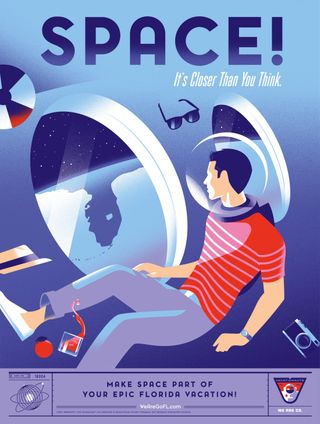
This article was originally published at The Conversation. The publication contributed the article to Space.com's Expert Voices: Op-Ed & Insights .
For most people, getting to the stars is nothing more than a dream. On April 28, 2001, Dennis Tito achieved that lifelong goal — but he wasn't a typical astronaut. Tito, a wealthy businessman, paid US$20 million for a seat on a Russian Soyuz spacecraft to be the first tourist to visit the International Space Station. Only seven people have followed suit in the 20 years since, but that number is poised to double in the next 12 months alone.
NASA has long been hesitant to play host to space tourists , so Russia — looking for sources of money post-Cold War in the 1990s and 2000s — has been the only option available for those looking for this kind of extreme adventure. However, it seems the rise of private space companies is going to make it easier for regular people to experience space.
From my perspective as a space policy analyst , I see the beginning of an era in which more people can experience space. With companies like SpaceX and Blue Origin hoping to build a future for humanity in space, space tourism is a way to demonstrate both the safety and reliability of space travel to the general public.
Related: Virgin Galactic says it will launch Richard Branson to space on July 11

The development of space tourism
Flights to space like Dennis Tito's are expensive for a reason. A rocket must burn a lot of costly fuel to travel high and fast enough to enter Earth's orbit.
Another cheaper possibility is a suborbital launch, with the rocket going high enough to reach the edge of space and coming right back down. While passengers on a suborbital trip experience weightlessness and incredible views, these launches are more accessible.
Get the Space.com Newsletter
Breaking space news, the latest updates on rocket launches, skywatching events and more!
The difficulty and expense of either option has meant that, traditionally, only nation-states have been able to explore space. This began to change in the 1990s as a series of entrepreneurs entered the space arena. Three companies led by billionaire CEOs have emerged as the major players: Virgin Galactic, Blue Origin and SpaceX. Though none have taken paying, private customers to space, all anticipate doing so in the very near future.
British billionaire Richard Branson has built his brand on not just business but also his love of adventure. In pursuing space tourism, Branson has brought both of those to bear. He established Virgin Galactic after buying SpaceShipOne - a company that won the Ansari X-Prize by building the first reusable spaceship. Since then, Virgin Galactic has sought to design, build and fly a larger SpaceShipTwo that can carry up to six passengers in a suborbital flight.
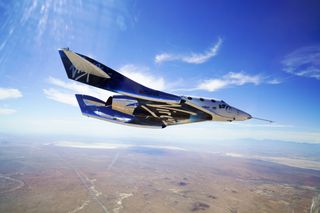
The going has been harder than anticipated. While Branson predicted opening the business to tourists in 2009, Virgin Galactic has encountered some significant hurdles — including the death of a pilot in a crash in 2014 . After the crash, engineers found significant problems with the design of the vehicle, which required modifications.
Elon Musk and Jeff Bezos, respective leaders of SpaceX and Blue Origin, began their own ventures in the early 2000s.
Musk, fearing that a catastrophe of some sort could leave Earth uninhabitable, was frustrated at the lack of progress in making humanity a multiplanetary species. He founded SpaceX in 2002 with the goal of first developing reusable launch technology to decrease the cost of getting to space. Since then, SpaceX has found success with its Falcon 9 rocket and Dragon spacecraft. SpaceX's ultimate goal is human settlement of Mars — sending paying customers to space is an intermediate step. Musk says he hopes to show that space travel can be done easily and that tourism might provide a revenue stream to support development of the larger, Mars-focused Starship system.
Bezos, inspired by the vision of physicist Gerard O'Neill , wants to expand humanity and industry not to Mars, but to space itself. Blue Origin , established in 2004, has proceeded slowly and quietly in also developing reusable rockets. Its New Shepard rocket, first successfully flown in 2015, will eventually offer tourists a suborbital trip to the edge of space, similar to Virgin Galactic's. For Bezos, these launches represent an effort at making space travel routine, reliable and accessible to people as a first step to enabling further space exploration.

Outlook for the future
Now, SpaceX is the only option for someone looking to go into space and orbit the Earth. It currently has two tourist launches planned. The first is scheduled for as early as September 2021 , funded by billionaire businessman Jared Isaacman. The other trip, planned for 2022, is being organized by Axiom Space . These trips will be costly , at $55 million for the flight and a stay on the International Space Station. The high cost has led some to warn that space tourism — and private access to space more broadly — might reinforce inequality between rich and poor.
Blue Origin's and Virgin Galactic's suborbital trips are far more reasonable in cost, with both priced between $200,000 and $250,000 . Blue Origin appears to be the nearest to allowing paying customers on board, saying after a recent launch that crewed missions would be happening "soon." Virgin Galactic continues to test SpaceShipTwo, but no specific timetable has been announced for tourist flights.
Though these prices are high, it is worth considering that Dennis Tito's $20 million ticket in 2001 could pay for 100 flights on Blue Origin soon. The experience of viewing the Earth from space, though, may prove to be priceless for a whole new generation of space explorers.
This article is republished from The Conversation under a Creative Commons license. Read the original article .
Follow all of the Expert Voices issues and debates — and become part of the discussion — on Facebook and Twitter. The views expressed are those of the author and do not necessarily reflect the views of the publisher.
Join our Space Forums to keep talking space on the latest missions, night sky and more! And if you have a news tip, correction or comment, let us know at: [email protected].

I received a BA in political science (summa cum laude and university honors) and an MA in political science from the University of Central Florida. I received a Ph.D. in political science from the University of Florida where my research focused on the intersection of political institutions and public policy. I have authored several books including Unbroken Government: Success and Failure in Policymaking (Palgrave Macmillan, 2013), The Politics of Cancer: Malignant Indifference (Praeger, 2017), and The CQ Press Career Guide for Political Science Students (CQ Press, 2017). My research has also appeared in journals including Congress and the Presidency, Space Policy, and the Journal of Political Science Education. I am currently professor of strategy and security studies at the US Air Force's School of Advanced Air and Space Studies, a selective graduate program for Air Force officers. Prior to my current position, I was associate professor of political science at Cameron University in Lawton, Oklahoma.
SpaceX fires up huge Super Heavy booster ahead of 4th Starship test flight (photos, video)
Soyuz capsule with crew of 3, including 1st female astronaut from Belarus, lands safely to end ISS mission
I'm driving 6 hours through New York's Adirondacks to see the 2024 total solar eclipse from Potsdam. Here's why.
Most Popular
By Meredith Garofalo April 05, 2024
By Robert Lea April 05, 2024
By Elizabeth Howell April 05, 2024
By Stefanie Waldek April 05, 2024
By Mike Wall April 05, 2024
By Harry Baker April 05, 2024
By Jeff Spry April 05, 2024
By Robert Z. Pearlman April 05, 2024
By Alexander Cox April 05, 2024
- 2 Total solar eclipse 2024: Live updates
- 3 This Week In Space podcast: Episode 105 — Apoc-eclipse 2024!
- 4 Total solar eclipse 2024: Here's the national weather forecast for April 8
- 5 William Shatner is beaming in to see the 2024 total solar eclipse from Indiana (video)
- SOFTWARE CATEGORIES
- FOR REMOTE WORK
- Money Advice
Space Tourism: How Much Should You Save For A Space Trip in 2024?

Commercial space travel has developed to include not only convenience in space transportation for astronauts, but also once-in-a-lifetime outer space exploration for the idle rich known as space tourists. Before, astronauts traversed space in capsules, rockets, and orbiters. But with commercially designed space vehicles developed under NASA’s collaborative programs with space aviation agencies, a more convenient and “human-friendly” mode of space movement now enables non-space professionals (99 percent of our readers) the rare experience of a space holiday.
The world is indeed getting smaller every day. It’s not that Earth, as official home for humans, is diminishing in size. It’s the feeling of running out of tangible space, what with overpopulation, and virtual space narrowing as a consequence of the information age. The good news is there is a vast space out there, and these days, you can literally go far from the madding crowd, as long as you have the bucks.
Inter-galactic researches and space travel tests have paved the way for a safe outer space travel experience for non-astronauts. The current safety standards require operating companies to meet the FAA requirements and standards for safety of the public, both during ascent and during the final re-entry. The law also requires crew and passengers to sign informed consent agreements .
Although outer space tourism is still in its baby steps, bookings for some space tourism operators are now on-going. Like any trip preparation, space travel entails questions that a smart and savvy tourist always asks. What are the trip’s highlights? How long will it take? Is it safe? What is the cost of a trip to outer space?
We’ve rounded up facts and figures on space tourism gigs that you may want to save up for. There is one that is free, but with just one little condition. Find out your options.
1. XCOR Aerospace
Price: $95,000 per person
Travel dates: The company plans to start test flights in 2014. It will be another 6-18 months before it can be ready to ferry passengers to space.
Vehicle: The Lynx rocket plane which can hold a pilot plus one passenger.
More Info: The Lynx will take tourists to suborbital space and will make four trips per day. XCOR has sold about 300 tickets at $95,000 each, which has given it enough funds to develop its spacecraft. The company’s CEO, Jeff Greason, says they are not aiming to get ahead of competitors in the space race and their battle is with economics and physics.
2. World View Enterprises
Vehicle: A pressurized capsule that is hauled up by a space balloon and parafoil.
Price: $75,000 per seat
Travel Date: Balloon trips are scheduled to start in 2016.
More Info: The balloon trip will take space tourists to 100,000 feet above earth. The vehicle will float up into the suborbital flight and then glide back. The trip is expected to last for about four hours. Passengers do not need any anti-gravity training. They can enjoy refreshing beverages in the cabin.
3. Virgin Galactic SpaceShipTwo Space Trip

Virgin Galactic’s SpaceShipTwo will carry stars like Angelina Jolie, Brad Pitt and Leonardo DiCaprio on an outer space holiday (www.virgingalactic.com)
Company: Virgin Galactic. It pioneers commercial outer space flights and the world’s wealthiest are naturally first in line to sign up, led by reel stars Brad Pitt, Angelina Jolie, Leonardo DiCaprio, Ashton Kutcher and Justin Bieber.
Price: US$250,000. Required for a guaranteed seat on the earliest available flight. Bookings are easily accomplished online or through the firm’s accredited space agents. The earlier the reservation is made, the sooner one gets to travel into space.
Travel date: Flights are scheduled to start by 2015.
Vehicle: SpaceshipTwo featuring the Astrobatic cabin, it is capable of carrying six passengers up to 68 miles above the earth’s surface.
The Trip: The firm calls its space passengers future astronauts, numbering about 600 already. They embark on a 3-day preparation with the crew, and are set to an initial 50,000 feet launch, after which the vehicle hauls itself into space at three times the speed of sound. The dream experience documentation reads a lot like any other first-time tourist diary, making the actual trip a must for those who need more than words like “spectacular views” and “the silence of space.”
Freebies: Aside from the outer space trip, paid passengers are also given access to exclusive Virgin Group events like the G-force training, test flight celebrations in Mojave Desert and some trips with company founder Sir Richard Branson.
4. SpaceX Dragon Space Trip
Company: Space Exploration Technologies
Travel date: 2015
Price: The company has announced that its target launching price for the trip is $140 million (7-crew package) or $20m per seat.
Vehicle: Dragon capsule. This is a free-flying and reusable spacecraft that made headlines last year for being the first commercial space vehicle in history to successfully attach to NASA’s International Space Station (ISS) through its robotic arms. It is used to transport cargo and crew, for in-space technology demonstrations and scientific tests. With the Dragon space trip, one can ride this famous space shell.
The Trip: The Dragon space trip is a kind of low earth orbital flight. It is in line with SpaceX founder Elon Musk’s mission of revolutionizing access to space. The upcoming Dragon flights would include non-NASA crew members, the first of which is timelined by mid-2015. The trip is an orbital flight into a 370-kilometer orbit. (More revolutionary space flights are planned by Musk, including flights enabling human exploration and settlement of Mars in 10 to 20 years time under the company’s Mars One colonization project).
5. Zero-G Weightless Experience
Company: Zero Gravity Corporation
Travel Date: Ongoing
Price: $4,950 plus 5 percent tax
Vehicle: Modified Boeing 727
The Trip: Lasting some 90 to 100 minutes, the Zero-G space trip enables one to “float like an astronaut and fly like a superhero in weightlessness.” It consists of parabolic arc flights, which simulate weightlessness in space, much like the astronauts we see on space station interviews. The flight swirls the passenger to 15 individual parabolas, consisting of one Martian gravity simulation, two lunar gravity simulations and 12 weightlessness simulations.
Because the parabolic flights simulate the space experience, the Zero- G space trip is much cheaper than full-on space travels. Still, with the Martian and lunar gravity close-to-real experience, it is value for money already.
Freebies: The Zero-G flight suit and merchandise, certificate of weightless completion, photos and video, and Regravitation Celebration. The trip also offers family and friends bonding time via the Non-Flyer Guest Package, where companions who do not wish to fly can still join the many pre- and post-flight events.
What if living on Earth proves too much already? Is there a one-way outer space ticket for the Earth-worn and tired? Consider signing up for the Mars One project. Around 78,000 people from 120 countries have already applied (some people reportedly even signed up their own family members) for a one-way trip to Mars to join an experimental settlement project on the red planet.
6. The Mars One Project

NASA image of Martian homeplate captured by Mars Rover Spirit shows landforms and surfaces similar to Earth
Company: Mars One Foundation and Interplanetary Media Group
Price: Free (selected volunteer basis)
Travel Date: 2023
The Trip: The recruitment dubbed “Inhabitants Wanted” started in April this year via a televised global selection process. Anyone 18 years old and above can apply, with intelligence, mental and physical health, and dedication to the project being the highly important criteria. The selected “inhabitants” will undergo eight years of training before the 2023 flight.
Preparations for the trip include a series of robotic cargo missions and outpost building for Earth simulation between 2016 and 2021. The first four immigrants will arrive in 2023, followed by more settlers every two years. The “pioneer settlers” will not return to Earth, but will live and work there, making it their permanent new home. This mission will be broadcasted, from the selection of inhabitants to arrival and day-to-day living on Mars.

The Future of Space Travel: Can You Afford it?
So what’s the future of outer space travel especially in terms of cost and affordability for the 99 percent? Industry observers think that once commercial space tourism becomes steadily successful, it won’t be long before high demand and more industry players scamper to take a piece of this highly profitable pursuit.
It will take over 83 months of diligently saving one’s $3,000 gross monthly salary to raise the Virgin Galactic reservation deposit, let alone the whole package. Is there a chance space travel can become more affordable like airline industry fees? There could be.
The initial high cost of space travel is intended to fund more researches and conduct the model flights, all meant to lower human space travel cost in the future and enable the experience for all, without having to shell out tetragazillion dollars. While expanding the playground for the idle rich, it is also expected to open the floodgates for new opportunities in career, business, education, science, technology, finance, law, and commerce (especially true for space apps and widgets developers).
With this, it won’t be long before we see the days of traditional earthbound events and activities expanding into outersphere proportions, more important of which is the Ms. Universe pageant and then some spacesports (Space Olympics, NBA Space Series, FIFA Space Cup), spaceshopping (God knows Earth has ran out of land to satisfy megaretailers’ demand for more malls) and spacepublishing beginning with The Ultimate Space Travel Guide for Under $300 or Cheap Martian Hotels from $19.99.
Are you willing to save up big for a dream outer space travel? Or do you have ideas that will replicate the experience minus the high-heavens cost?

By Astrid Eira
Astrid Eira is a resident B2B expert of FinancesOnline, focusing on the SaaS niche. She specializes in accounting and human resource management software, writing honest and straightforward reviews of some of the most popular systems around. Being a small business owner herself, Astrid uses her expertise to help educate business owners and entrepreneurs on how new technology can help them run their operations. She's an avid fan of the outdoors, where you'll find her when she's not crunching numbers or testing out new software.
Related posts

Best Customer Support Software in 2024

Best Marketing Software in 2024

12 Best Event Management Platforms of 2024: What’s the Best Solution?

How Does Grammarly Work? A Comprehensive Guide for 2024

10 Best Fitness & Gym Management Software for 2024

Toast vs. Clover: 2024 Comparison of Features, Pricing & Integrations & More

15 Best Video Conferencing Software Examples for 2024

15 Best Shopping Cart PHP Software in 2024

What Is the Purpose of Fleet Management in 2024?

20 Best Donor Management Software Solutions of 2024

20 Best Grammar Checker Software Solutions for 2024

What is the Cost of QuickBooks Enterprise? Analysis of Features & Subscription Fees in 2024

Top 10 Alternatives to Zoho Inventory: Analysis of Popular Inventory Management Systems

20 Best Clinical Trial Management Software of 2024

Pros & Cons of Signaturely: Analysis of a Popular e-Signature Software

10 Best IT Management Software Systems in 2024

5 Most Affordable Accounting Software For Small & Medium Companies

20 Best Billing Software for Law Firms in 2024

Benefits and Advantages of Content Marketing

Pros and Cons of Procurify: Analysis of a Popular Procurement Management Software
The idea that space travel can be something like planning a Lapland holiday is most welcome. Though I bet it's not as easy as what Virgin galactic purpotes it in their website. Before training with the crew and certainly before the Mojave parties with Branson, there's got to be some psychological tests apart from the usual diagnostics, I presume. Does space tour operators share obligation on this safety aspect? As a travelz and tour operator myself, I do hope the standard waiver does not apply here. While the informed consent expands co-responsibility between space operators and passengers, (I have yet to give it the full time, maybe if I have disposable $250k to join a group space tour), I figure this won't do once space travel becomes, as you guys very well foresee it, affordable for the greater public, since that's what this eventually will come into, like airflights. Anyway, since this eventuality will certainly take centuries, let's just live for the presents and hope those who are privileged to experience space can actually share it to people on ground. I read somewhere that there's a lot of confidentiality clause on Virgin, just hoping real accounts and experiences being shared afterwards are not one of them. Or else how can we know if Lapland is even better and cheaper? Nice read, I should have said that first thanks.
Leave a comment!
Add your comment below.
Be nice. Keep it clean. Stay on topic. No spam.
Why is FinancesOnline free?
FinancesOnline is available for free for all business professionals interested in an efficient way to find top-notch SaaS solutions. We are able to keep our service free of charge thanks to cooperation with some of the vendors, who are willing to pay us for traffic and sales opportunities provided by our website. Please note, that FinancesOnline lists all vendors, we’re not limited only to the ones that pay us, and all software providers have an equal opportunity to get featured in our rankings and comparisons, win awards, gather user reviews, all in our effort to give you reliable advice that will enable you to make well-informed purchase decisions.
EU Office: Grojecka 70/13 Warsaw, 02-359 Poland
US Office: 120 St James Ave Floor 6, Boston, MA 02116
- Add Your Product
- Research Center
- Research Team
- Terms of Use
- Privacy Policy
- Cookies Policy
- Scoring Methodology
- Do not sell my personal information
- Write For Us
- For Small Business
- Top Software
- Software reviews
- Software comparisons
- Software alternatives
Copyright © 2024 FinancesOnline. All B2B Directory Rights Reserved.

- Entertainment
- Rex Reed Reviews
- Awards Shows
- Climate Change
- Restaurants
- Gift Guides
- Business of Art
- Nightlife & Dining
- About Observer
- Advertise With Us
Every Space Tourism Vacation You Can Book Right Now, If You’re Rich
Thinking about the an ultimate quarantine experience we got you covered..

Things aren’t going so great on the planet Earth right now, and travel isn’t easy, but if you’ve got a bit of cash, you can really get away. A number of well-capitalized companies have been hacking away at Space Tourism, or commercially flying “regular” people into space, and now it’s on the verge of reality. Thanks to a great deal of financial and human capital put in by organizations ranging from NASA to billionaire-backed startups , we are inches close to turning it into reality.
Sign Up For Our Daily Newsletter
Thank you for signing up!
By clicking submit, you agree to our <a rel="nofollow noreferer" href="http://observermedia.com/terms">terms of service</a> and acknowledge we may use your information to send you emails, product samples, and promotions on this website and other properties. You can opt out anytime.
Space vacation packages come in a wide variety. For beginners, British billionaire Richard Branson’s Virgin Galactic (SPCE) is offering a 1.5-hour joy ride to the edge of the Earth’s atmosphere. NASA is opening the International Space Station to private citizens. And, for hard-core space explorers, Elon Musk’s SpaceX has promised to fly you to the Moon (for a hefty price) in as soon as 2023.
Below we’ve put together the latest statuses of various space tourism projects in the market.
Virgin Galactic’s 90-Minute Suborbital Ride

Destination: Edge of the Earth’s atmosphere
Price: $250,000 per person
Earliest available time: late 2020
Virgin Galactic’s supersonic spaceplane, VSS Unity, will fly passengers up to 100 kilometers (62 miles) above sea level, which is right above the Kármán Line dividing the Earth’s atmosphere and outer space. From there, passengers will get a stunning view of the Earth’s curvature. Then, during the descent, they will experience several minutes of weightlessness like a true astronaut.
VSS Unity has completed two successful human test flights and is in its final stage of testing. Virgin Galactic plans to fly its first paying customer, possibly the company’s founder Richard Branson himself, as soon as this year.
Blue Origin’s Vertical Suborbital Ride

Destination: The edge of the Earth’s atmosphere
Price: $200,000 and $300,000
Earliest available time: unknown
Blue Origin , owned by Amazon CEO Jeff Bezos, is developing a suborbital tourism program similar to Virgin Galactic’s but using a vertical-takeoff, vertical-landing (VTVL) rocket-capsule system called New Shepard. The New Shepard spacecraft has successfully flown above the Kármán Line and returned to the ground.
Blue Origin had planned to launch its first human test flight in 2019 and begin selling commercial tickets (reportedly priced between $200,000 and $300,000 ) soon after. Yet, the plan was quietly canceled last year. The company has yet to make public statements about new test and rollout dates.
NASA’s Multi-Day ISS Getaway

Destination: International Space Station
Price: $35,000 per night
In June 2019, NASA unveiled its grand plan to allow private citizens to fly to the International Space Station under the agency’s Commercial Crew Program . Passengers will fly in either SpaceX’s Crew Dragon spacecraft or Boeing’s Starliner vessel.
The Crew Dragon recently completed its final crewed test and is ready to be deployed for commercial missions. NASA has said it will allow up to two private trips to the ISS a year, each lasting up to 30 days. The total cost of the trip would be around $50 million per person, the agency said.
SpaceX’s ‘Back to the Moon’ Package

Destination: the Moon
Price: “Not a trivial amount’
Earliest available time: 2023
Elon Musk’s rocket company SpaceX has the ultimate space vacation offering: a personalized trip to the Moon. The package has one committing customer so far: Japanese fashion mogul Yusaku Maezawa , who signed up for the trip in September 2018 and has put down an undisclosed deposit. Musk has said the full ticket price is “not a trivial amount.”
SpaceX is currently building prototypes for the rocket ( Big Falcon Rocket (BFR) rocket ) and spaceship (Starship) that will fly Maezawa to the Moon. If all tests go according to the plan, a human launch could take place as early as 2023.

- SEE ALSO : How Meta Competed Against Snapchat and YouTube: Unsealed Documents
We noticed you're using an ad blocker.
We get it: you like to have control of your own internet experience. But advertising revenue helps support our journalism. To read our full stories, please turn off your ad blocker. We'd really appreciate it.
How Do I Whitelist Observer?
Below are steps you can take in order to whitelist Observer.com on your browser:
For Adblock:
Click the AdBlock button on your browser and select Don't run on pages on this domain .
For Adblock Plus on Google Chrome:
Click the AdBlock Plus button on your browser and select Enabled on this site.
For Adblock Plus on Firefox:
Click the AdBlock Plus button on your browser and select Disable on Observer.com.
MIT Technology Review
- Newsletters
Space is all yours—for a hefty price
Commercial spaceflight is now officially a thing. But is it a transcendent opportunity for the masses, or just another way for rich people to show off?
- Adam Mann archive page

Private citizens have been buying their way into the heavens for decades. In the 1980s, McDonnell Douglas engineer Charles Walker became the first nongovernment individual to fly in space when his company bought him a seat on three NASA space shuttle missions. In 2001, American entrepreneur Dennis Tito dished out a reported $20 million to fly on a Russian Soyuz rocket to the International Space Station (ISS) and spend eight days floating in microgravity.
But beyond those few flights, nothing much happened.
At least not until last year. After decades of development and several serious accidents, three companies—SpaceX, Blue Origin, and Virgin Galactic—launched their first tourist flights in 2021. William Shatner rode a Blue Origin vehicle to the edge of space in October. Former NFL star and Good Morning America host Michael Strahan took a similar ride in December. Even NASA, which was once hostile to space tourism, has come around and released a pricing policy for private astronaut missions, offering to bring someone to orbit for around $55 million.
Okay, so it’s a new era—but what does it mean? Do these forays represent a future in which even the average person might book a celestial flight and bask in the splendor of Earth from above? Or is this just another way for the ultrawealthy to flash their cash while simultaneously ignoring and exacerbating our existential problems down on the ground? Nearly all those 2021 escapades were the result of efforts by three billionaires: Elon Musk, Jeff Bezos, and Richard Branson. Branson is a mere single-digit billionaire, whereas Bezos and Musk have wealth measured in the hundreds of billions.
“The greatly undue influence of wealth in this country—to me that’s at the heart of my issues with space tourism as it’s unfolding,” says Linda Billings, a communications researcher who consults for NASA and has written about the societal impacts of spaceflight for more than 30 years. “We are so far away from making this available to your so-called average person.”
Each spot on Virgin’s suborbital spaceplane, the cheapest way to space at the moment, will set somebody back $450,000. A single seat on Blue Origin’s initial suborbital launch sold at auction for $28 million, and the undisclosed price tag of SpaceX’s all-civilian Inspiration4 mission, which spent three days in orbit before splashing down off the coast of Florida, has been estimated at $50 million per passenger.
Not only are such flights ridiculously far out of financial reach for the average person, says Billings, but they aren’t achieving any real goals—far from ideal given our terrestrial problems of inequality, environmental collapse, and a global pandemic. “We’re not really learning anything,” she says. “There doesn’t seem to be a whole lot of thought or conscience in the people engaging in these space tourism missions.”
Laura Forczyk, owner of the space consulting firm Astralytical, thinks it’s misguided to focus strictly on the money aspect. “The narrative [last year] was billionaires in space, but it’s so much more than that,” says Forczyk, who wrote the book Becoming Off-Worldly , published in January, in which she interviewed both government and private astronauts about why they go to space.
Forczyk sees the flights as great opportunities to conduct scientific experiments. All three of the commercial tourist companies have carried research projects in the past, studying things like fluid dynamics, plant genetics, and the human body’s reaction to microgravity. And yes, the rich are the target audience, but the passengers on SpaceX’s Inspiration4 included artist and scientist Sian Proctor and data engineer Chris Sembroski, who won their tickets through contests, as well as St. Jude Children’s Research Hospital ambassador Hayley Arceneaux (the trip helped her raise $200 million in donations for the hospital). Blue Origin gave free trips to aviation pioneer Wally Funk, who as a woman had been barred from becoming an Apollo astronaut, and NASA astronaut Alan Shepard’s daughter Laura.
Forczyk also cites Iranian space tourist Anousheh Ansari, who flew to the ISS in 2006. “She talked about how she grew up in a war zone in Iran, and how [the flight] helped her see the world as interconnected,” Forczyk says.
Billings thinks the value of such testimonials is pretty low. “All these people are talking to the press about how wonderful the experience was,” she says. “But to listen to someone else tell you about how exciting it was to climb Mt. Everest doesn’t convey the actual experience.”
As with an Everest trek, there’s the risk of death to consider. Historically, spaceflight has had a fatality rate of just under 4%—roughly 266,000 times greater than for commercial airplanes. Virgin suffered two major disasters during testing, killing a total of four employees and injuring four more. “A high-profile accident will come; it’s inevitable,” says Forczyk. But even that, she predicts, won’t end space tourism. People continue to climb Everest, she notes, despite the danger.
Another question is how space tourism might affect the planet. A 90-minute jaunt on Virgin Galactic’s suborbital spaceplane is roughly as polluting as a 10-hour transatlantic flight. Other calculations suggest that a rocket launch can produce 50 to 75 tons of carbon dioxide per passenger, compared with just a few tons per passenger from a commercial airplane.
Experts warn that even Blue Origin’s New Shepard, which burns hydrogen and oxygen and emits water, could affect the climate since its combustion products are injected high into the stratosphere, where their ultimate impact has yet to be understood.
The Federal Aviation Administration oversees all spaceflight in the US and might strengthen safety and environmental regulations. The agency currently has a moratorium on new regulations until 2023, which was designed to give the nascent industry time to develop before legislators came in with too much red tape. But few lawmakers or citizens are clamoring for more regulation.
“There are a lot of other things for people to worry about than whether or not only billionaires get to fly in space,” says Marcia Smith, the founder and editor of the news website SpacePolicyOnline.com, which covers space programs around the world.
Nobody has yet fully articulated a compelling reason to spend enormous sums on private spaceflight. It may have incidental value for science and engineering, or offer a small number of people a sense of transcendence.
But at the moment, it seems we do it mainly because we think it’s cool.
The search for extraterrestrial life is targeting Jupiter’s icy moon Europa
NASA’s Europa Clipper mission will travel to one of Jupiter's largest moons to look for evidence of conditions that could support life.
- Stephen Ornes archive page
Amplifying space’s potential with quantum
How scientists are using quantum squeezing to push the limits of their sensors.
Fuzziness may rule the quantum realm, but it can be manipulated to our advantage.
- Sophia Chen archive page
How to safely watch and photograph the total solar eclipse
The solar eclipse this Monday, April 8, will be visible to millions. Here’s how to make the most of your experience.
- Rhiannon Williams archive page
Stay connected
Get the latest updates from mit technology review.
Discover special offers, top stories, upcoming events, and more.
Thank you for submitting your email!
It looks like something went wrong.
We’re having trouble saving your preferences. Try refreshing this page and updating them one more time. If you continue to get this message, reach out to us at [email protected] with a list of newsletters you’d like to receive.

Buy Tickets
- Register For Camp
The Gift Shop will be closed April 22nd.
U.S. Space & Rocket Center
Open daily, 9 a.m. - 5 p.m.
Closed Thanksgiving Day, Christmas Eve, Christmas Day, and New Year's Day
Have a question about the U.S. Space & Rocket Center museum, exhibits, or simulators? Call (256)721-7114 or click here to contact us .
- INTUITIVE® Planetarium
- Museum Group Visits
- Host an Event
General Admission Tickets
General admission to the u.s. space & rocket center includes access to the saturn v hall, moon crater, military park, rocket park, shuttle park, sparklab, iss: science on orbit, and available featured exhibit(s), simulators, and tours..
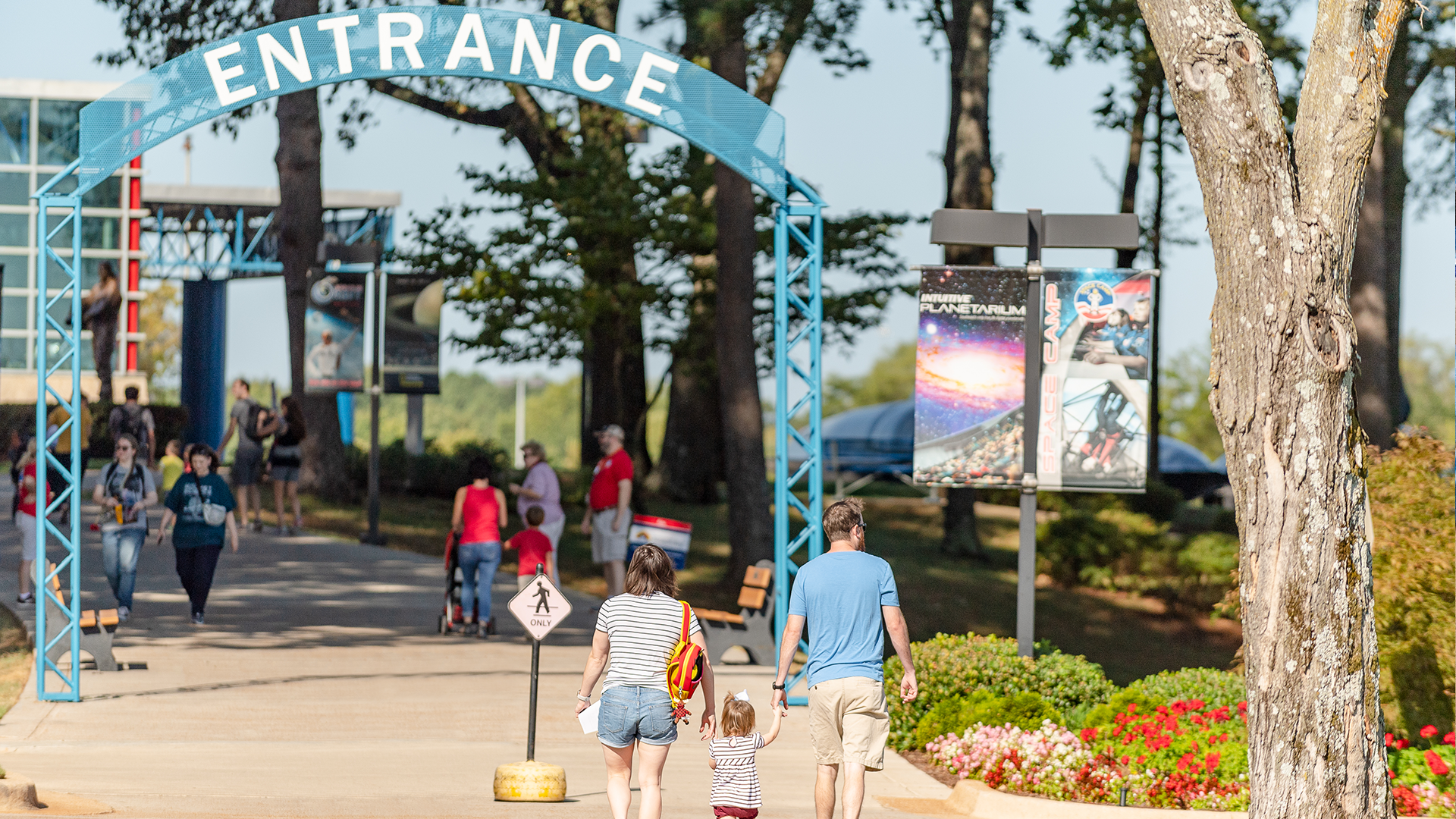
Adult & Senior (Ages 13+): $30
Child (ages 5-12): $20, members: free, children 4 & under: free.
The U.S. Space & Rocket Center is unable to accept personal checks and traveler's checks as form of payment.
All ticket sales are final and are not refundable or transferable. No refunds will be given due to inclement weather or malfunctioning simulations.
Discounted tickets must be purchased on-site at our ticket desk to verify eligibility. Discounts may not be used in combination with any other discounts, promotions or special events Badge holder/cardholder must be present to qualify for discounts
ASTC Affiliate Reciprocal Membership
Free general admission for member cardholder (up to 1 adult and 2 children). Learn More
Seniors (65+)
$3 off shows in the INTUITIVE® Planetarium with general admission purchase.
NASA Contractors
Free admission and $3 off shows in the INTUITIVE ® Planetarium
NASA Civil Servants and Retirees
(includes spouse and dependents) Free general admission and $3 off shows in the INTUITIVE ® Planetarium.
TVA Employees and Retirees
Free general admission for badge holder. Spouse and dependents receive $20 general admission price.
(Active, Veteran, Retiree) $3 off daytime movies and shows in the INTUITIVE ® Planetarium with general admission purchase.
$3 off daytime movies and shows in the INTUITIVE ® Planetarium with general admission purchase.
Smithsonian Affiliate Reciprocal Membership
Free general admission for member card holder (up to 2 people).
Museums for All
(w/ Valid EBT or SNAP card) $3 general admission (up to 4 visitors)
- People who live in the following counties: Madison, Morgan, Marshall, Jackson, and Limestone Counties presenting a membership to another ASTC museum, we will not accept that membership as admission into the U.S. Space & Rocket Center.
The U.S. Space & Rocket Center offers free parking, RV and bus parking for guests
For the safety of our staff and guests, outdoor simulators are operational when temperatures are between 45 - 101 degrees Fahrenheit (Moon Shot between 50-101 degrees Fahrenheit) and when weather permits.
Guest Services
The U.S. Space & Rocket Center Guest Services and Information Desk is located at the ticket desk in the main museum. We are dedicated to making your visit to the Center a terrific experience, and we offer the following services:
- Simply leave your driver’s license or picture identification with the ticket desk and check out a wheelchair or stroller for the day.
- $25.00 Rental
- Available at the ticket desk
- Weight Limit: 450 lbs.
- Renew a membership, update information on your account, or check in to the museum for the day. If you aren’t a member yet, this is where you’ll become part of our community!
- Click here to learn more about Membership opportunities.
- If you have a group reservation, please check with our Daily Group Coordinator to confirm your check-in location! Most groups check in at the Davidson Center for Space Exploration, however this is subject to change depending on your arrival time.
- Check in here with employee passes, comp tickets, or if your name is on the guest register.

Engineering peak experiences in the stratosphere
After viewing our planet from space, many astronauts have experienced overwhelming feelings of awe, transcendence and connection with humanity as a whole. Everyone experiences this effect differently, which is why every detail of our stratospheric spaceflight is designed to share this transformational experience – and a deeper bond to the beautiful place we call home.
An intentional take on space tourism
We have reimagined space tourism to be an intentional, purposeful experience that maximizes the opportunity for you to enjoy the ultimate transformational trip of a lifetime. By carefully designing every aspect of your trip for peak impact, we are creating an experience you will surely never forget.
.webp)
"[Humans] must rise above the Earth, to the top of the atmosphere and beyond, for only thus will [they] fully understand the world in which [they] live." – Plato At 100,000 feet, you will never feel closer to Earth.
Your flight plan.
From takeoff to touchdown, we have designed our 5-8 hour stratospheric journeys to give you the ultimate time, space and comfort to completely immerse yourself in the wonder of it all. Your journey on Flight Day will begin with a liftoff before dawn. You will gradually ascend for two hours before reaching float (around 100,000 feet) just before dawn. You will float at apogee for 2-4 hours before beginning your 90-minute descent via pilot-steered parafoil. You will then gently land in a designated landing zone near your departure spaceport and be transported back to the spaceport.
Seven Wonders of the World, Stratospheric Edition™
Reserve your flight.
Journey to the edge of space from any of our spaceport locations for $50,000 per seat. Reserve your place in line today with a non-refundable $500 deposit per seat. Questions about the reservation process? Connect with our Concierge team at [email protected]
Spaceport Grand Canyon
United states of america, first full year sold out.
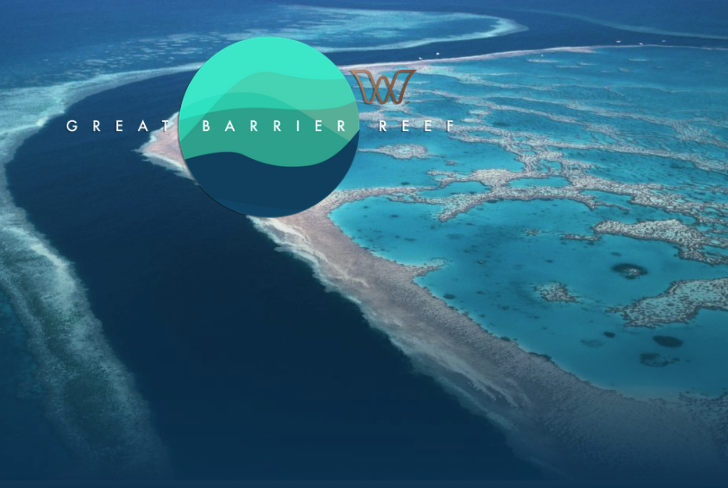
Spaceport Great Barrier Reef
Currently accepting deposits.

Spaceport Serengeti
Not currently accepting deposits.

Spaceport Aurora Borealis

Spaceport Amazonia

Spaceport Pyramids of Giza

Spaceport Great Wall of China
View earth in ultimate comfort.
We are outfitting the World View Explorer capsule with luxurious amenities and interactive tech features so you can fully immerse yourself in the experience. The best part? You are free to relax and move about our spacious, well-appointed cabin to soak in every amazing sight.
Pressurized, climate-controlled cabin
Spacious cabin with ample room for eight participants and two crew, plush, fully reclining seating for eight, oversized windows for spectacular 360º panoramic viewing, luxe in-flight dining and bar service, earth view camera, star view telescope, individual viewing screens, high-speed data connection, on-board lavatory, the height of safety.
Every detail of our patented, zero-pressure balloon is designed to ensure a safe, spectacular journey. This tried-and-true flight technology has been trusted and used by NASA for decades and is backed by World View's proven track record of 115+ successful flights. You will ride in safe, luxurious comfort in our pressurized, climate-controlled capsule, feeling right at home while floating 100,000 feet above our beautiful planet.

One peaceful ride
Designed for slow, gentle ascent and descent.
Lifted by helium
Helium-filled balloons are non-flammable and non-explosive, prioritizing your safety.
Land in safety
Patented parafoil landing system and on-board pilots guide your capsule to land safely in a pre-designated landing zone.
Soar with confidence
Built to transport you to over 100,000 feet – above 99% of Earth’s atmosphere.
Huge lifting power
Expands to a size that fits an entire football stadium inside and can lift over 10,000 pounds.
Reliable safeguards
Back-up parachute system and landing systems for landing safety redundancy.
Safe by design
Zero-pressure balloons mean there is no risk of rapid deflation or an unplanned free fall.
Precision engineering
Manufactured using proprietary, flight-tested processes that ensure consistent performance.
Sustainable design
A zero-emissions flight profile and recycling of balloons after each flight reduce environmental impact.
Awe-inspiring views
Our spacious cabin gives you plenty of room to move about, with massive windows offering unobstructed panoramic views of the horizon in every direction.
Patented flight technology
Proprietary stratospheric trajectory modeling systems will keep you gently hovering high above Earth before slowly starting your descent.
Gentle touchdown
As it descends, the capsule will deploy our patented parafoil system and separate from the balloon, gliding to a soft landing with gear that absorb and deflect impact.
Get updates from Mission Control
Be the first to get exciting updates on launches, merchandise drops, company news and spaceport ticket releases.


Everything you need to know about space tourism
Posted: October 12, 2023 | Last updated: October 12, 2023

Between floating in weightlessness, witnessing 16 sunrises a day and gazing into the infinite void, space travel sure sounds like an out-of-this-world experience. And now, it’s no longer a thing of the future.
That’s right, soon interstellar awe will be open to (almost) anyone, as billionaires Richard Branson, Jeff Bezos, and Elon Musk are pushing the space tourism industry to a higher orbit.
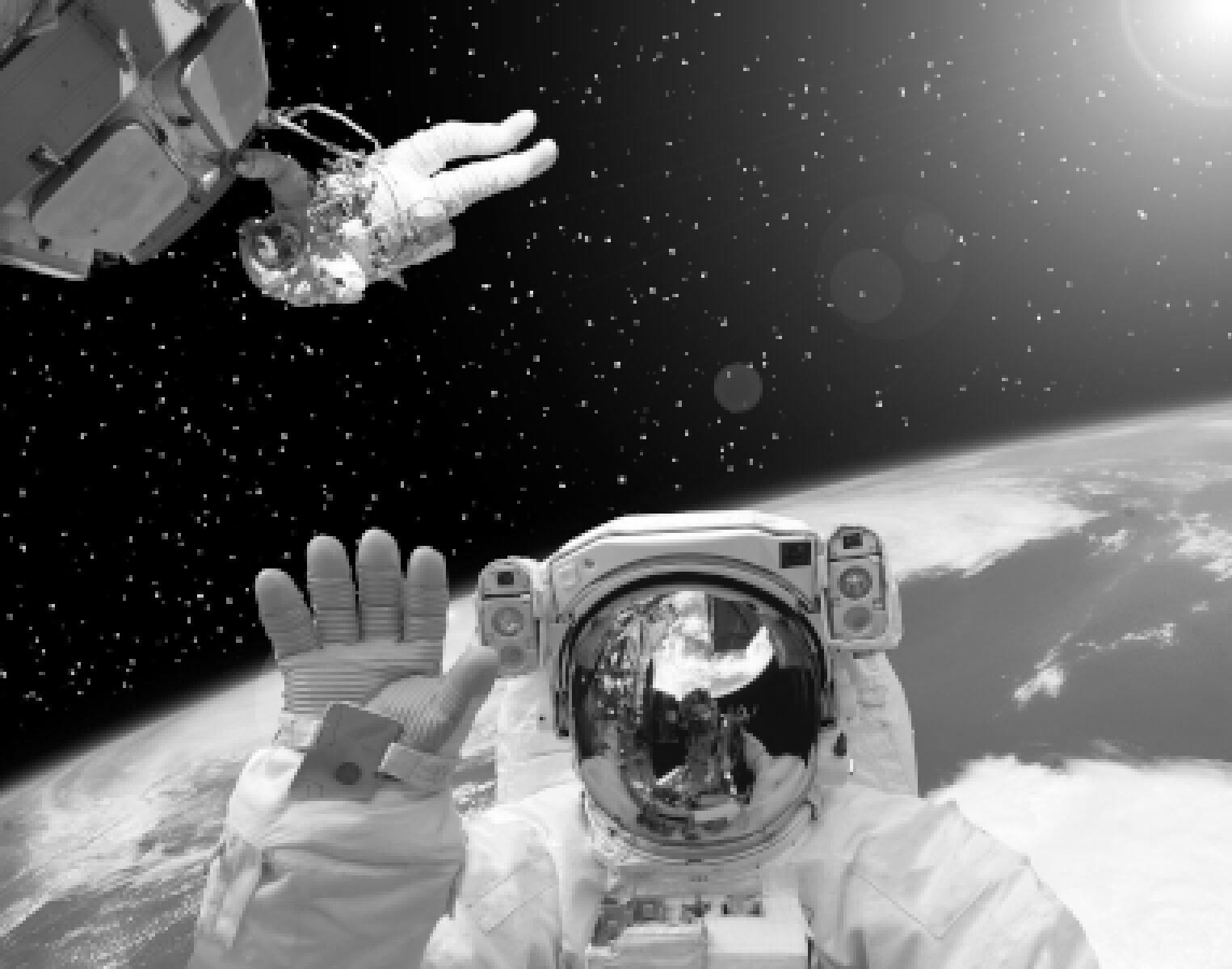
What is space tourism?
Well, it’s almost like regular tourism: travel for recreational and leisure purposes… but in outer space. Some organizations like the Commercial Spaceflight Federation and the Citizens in Space project prefer to use the terms “personal spaceflight” or “citizen space exploration,” though.
In a nutshell, it’s space travel for non-astronauts.
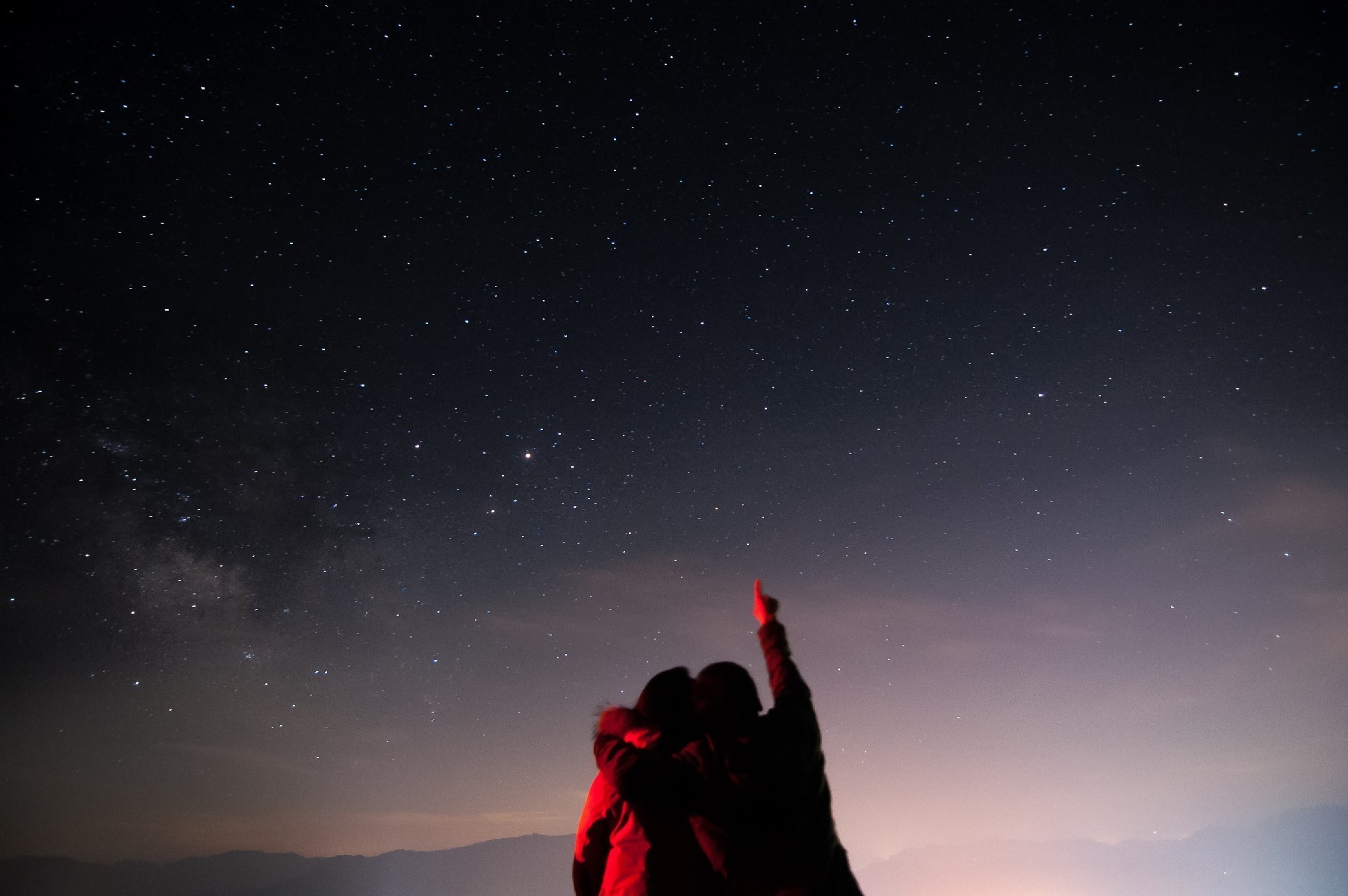
Who can travel to space?
Anyone ! Well, that is, anyone with enough money. No need to have any previous science qualifications or NASA training, especially since a trained crew will escort tourists on their galactic journey.
According to Virgin Galactic, future space tourists will be between 10 and 90 years old, and come from diverse professional and cultural backgrounds.
The only thing you need? The desire to explore the universe!
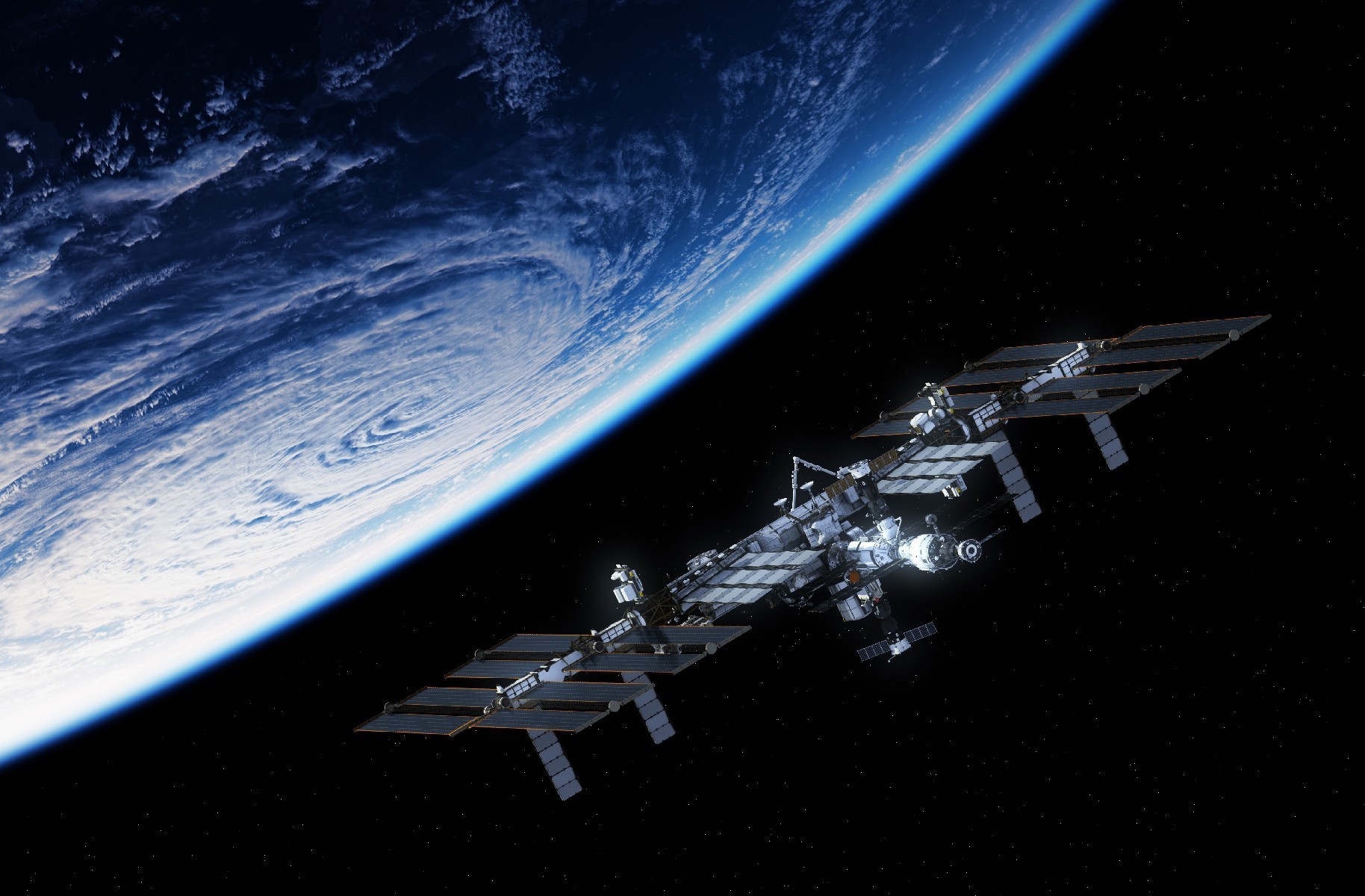
What is orbital travel?
The main difference between orbital and suborbital flights lies in the trajectory and speed of the vessels.
To go into orbit, a rocket or spaceship needs to follow a path that goes around the Earth at the very fast minimum speed of 7.7 kilometres (4.8 miles) per second, in order to keep circling and never fall back down.
It allows astronauts and travellers to stay in space for extended periods of time, hence it is for now the preferred type of flight.
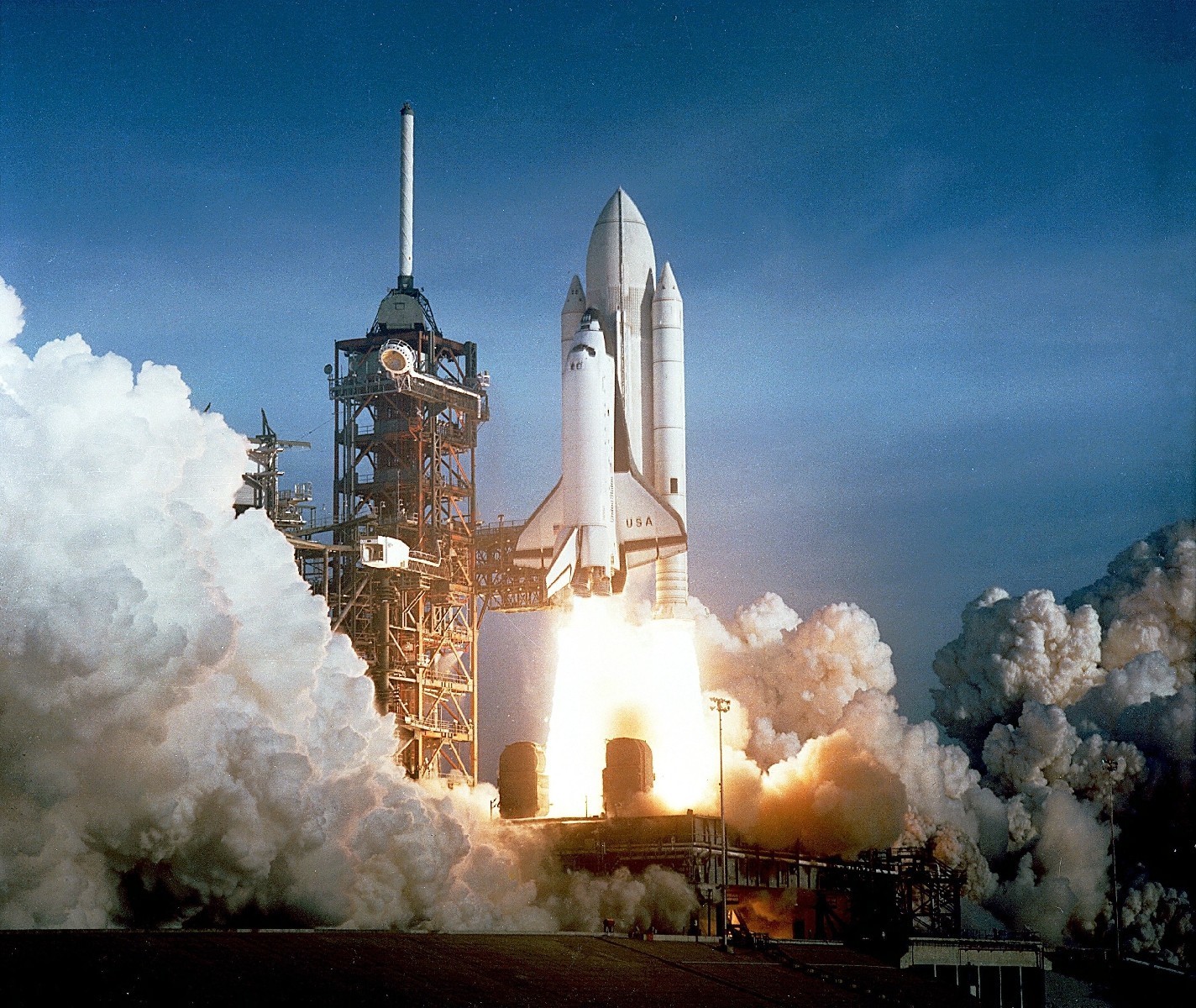
What is suborbital travel?
A suborbital flight , which is what Branson and Bezos did, “just” requires enough energy to blast off to space and then naturally fall back to Earth, making a huge arc.
It requires less energy and is less costly than orbital flights, thus opening doors for relatively affordable space tourism in the future.
Passengers would experience up to six minutes of weightlessness and a grandiose view.

How do you prepare?
Although Virgin Galactic doesn’t explicitly list its physical requirements, they did say astronauts would have to pass certain medical checkups and training programs. Blue Origin, on the other hand, has said that training for suborbital trips will only take a day.
And of course, any space tourist will also have to pass a series of thorough tests to determine whether they’re fit to fly up there.
Once in space, you may have to perform small bouts of exercise to prevent muscle wasting , which takes place after just seven days.

What is lunar tourism?
As its name hints, lunar tourism is the project of sending paying travellers to the moon. The first one could happen as soon as 2023, and would consist of a loop flight.
But three types of lunar tourism could be available in the near future: circumlunar trajectory, lunar orbit, and even lunar landing.
How cool would it be to say to someone, upon returning from a lunar vacation, “I’ve literally loved you to the moon and back”?
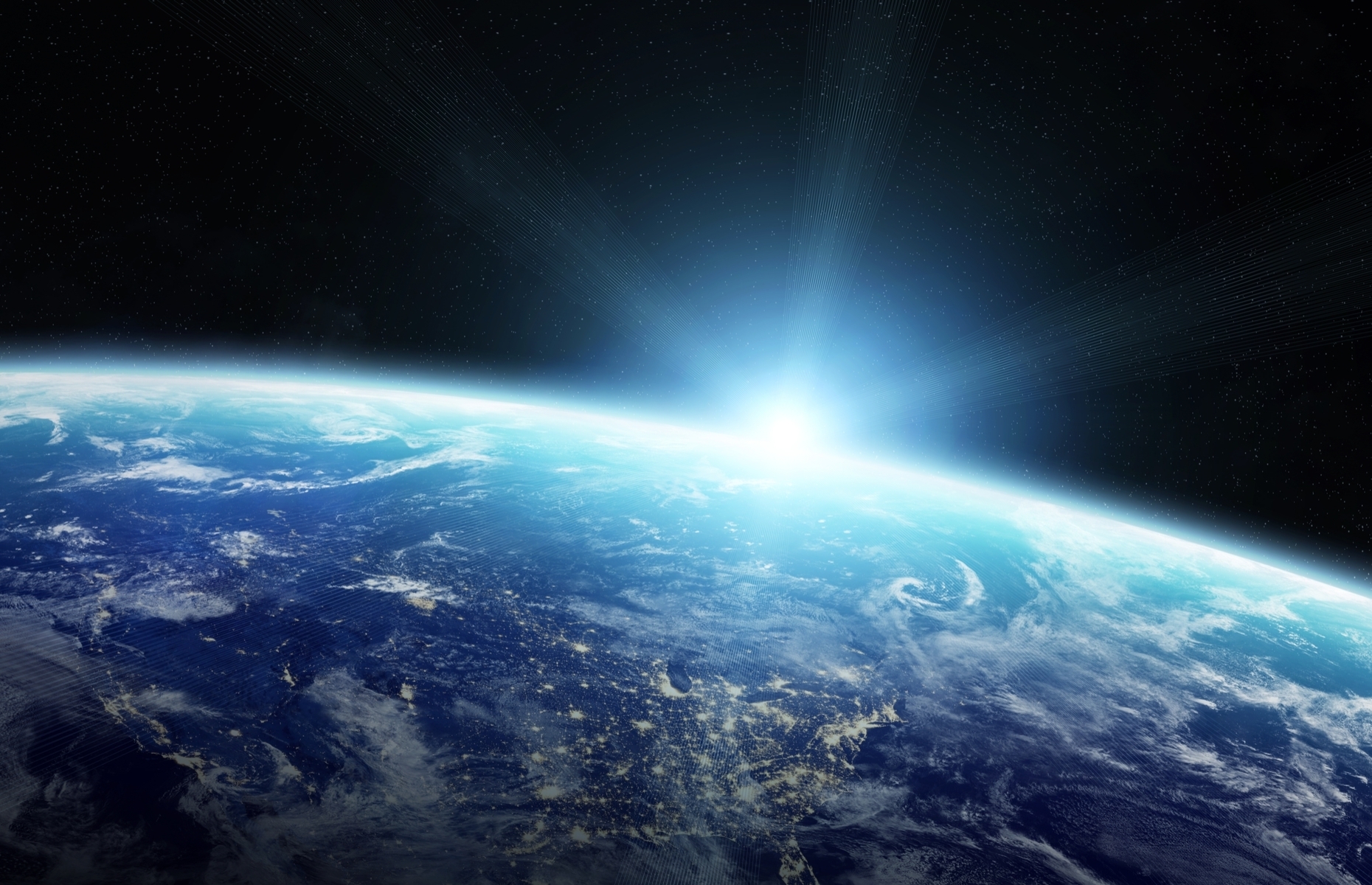
Where does space tourism take place?
Admittedly, space is a vast place. So where exactly would tourists go ?
First, any space travel begins with the Kármán line , which lies at 100 kilometres (62 miles) above sea level and is commonly accepted as the limit between Earth’s atmosphere and outer space.
Then, there are several options: orbital, suborbital, and lunar space tourism.
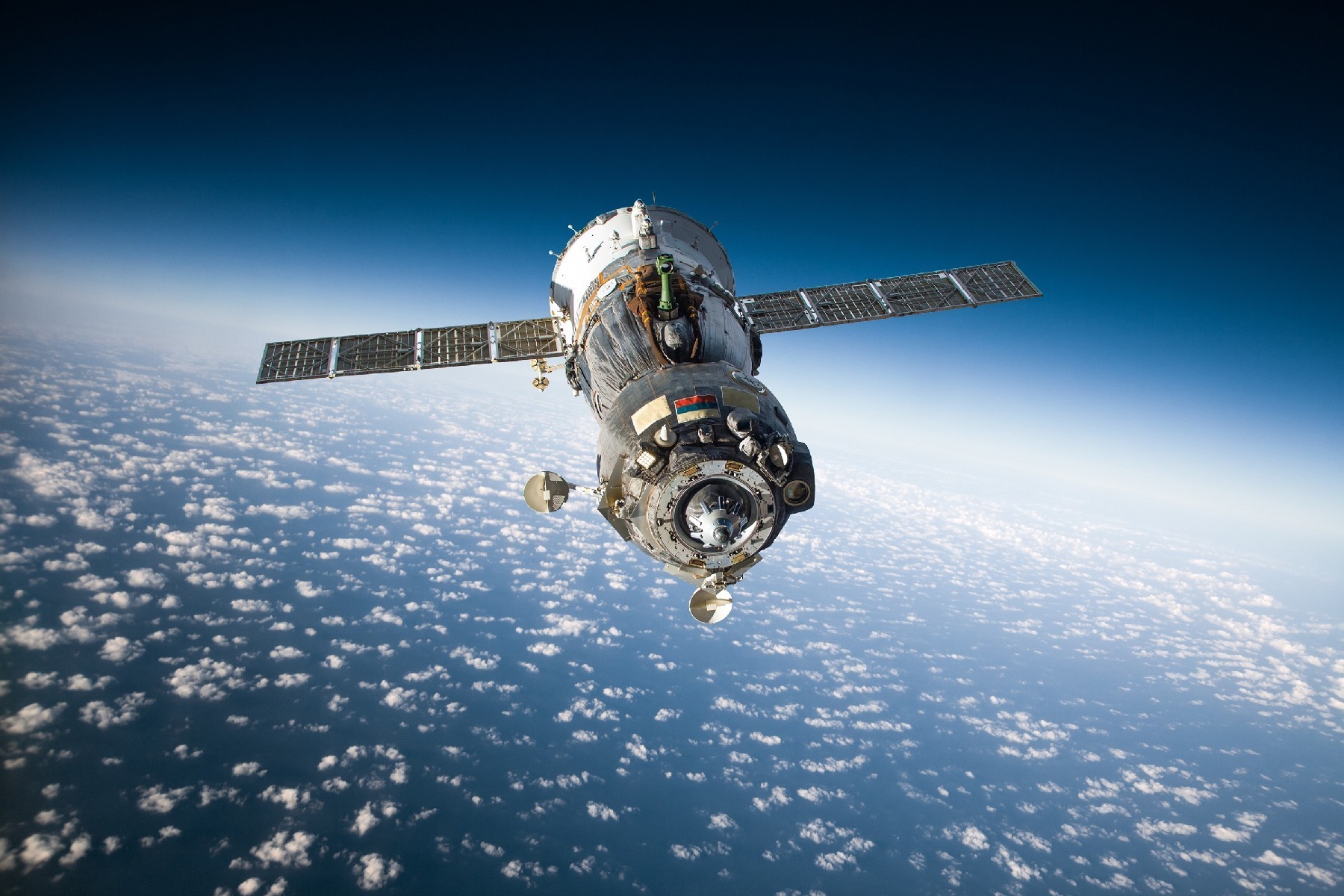
Have touristic space travels already occurred?
Yes! From 2001 to 2009, the Russian space agency and the U.S.-based space tourism company Space Adventures took seven (very wealthy) members of the public for several orbital space travels to the International Space Station.
The flights took place aboard the famous spacecraft Soyuz but stopped in 2010, since the crew of actual astronauts grew bigger and left no more seats available for paying space tourists.
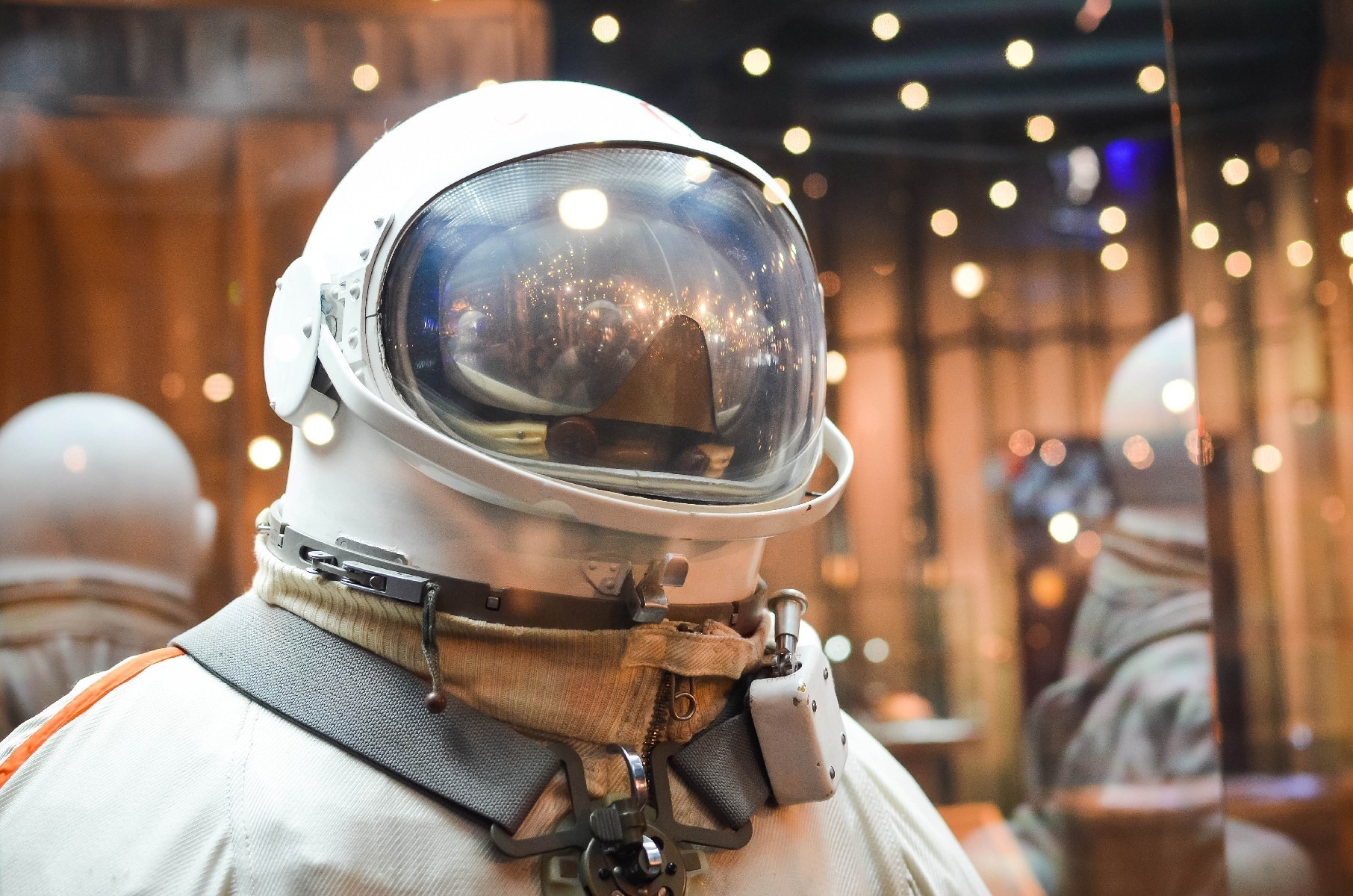
Who were the first space tourists?
The American businessman Dennis Tito became officially the first space tourist in April 2001, when he stayed for seven days on the International Space Station.
He was followed by six multimillionaire fellows from various countries: South African entrepreneur Mark Shuttleworth, American scientist Gregory Olsen, Iranian engineer Anousheh Ansari (the first female space tourist), Hungarian-American computer programmer Charles Simonyi, British video game mogul Richard Garriott, and Canadian businessman Guy Laliberté.
On July 11, 2021, billionaire Richard Branson, along with three Virgin Galactic employees and two pilots, reached an altitude of 85 kilometres (53 miles) above Earth aboard his Virgin Galactic rocket plane, the Unity. Less than 10 days later, on July 20, the world’s richest man, Amazon’s Jeff Bezos, briefly entered space on Blue Origin , his private space company’s reusable rocket. He was joined by his younger brother Mark, Dutch teenager Oliver Daemen, and Wally Funk, who, at 82 years old, became the oldest astronaut.
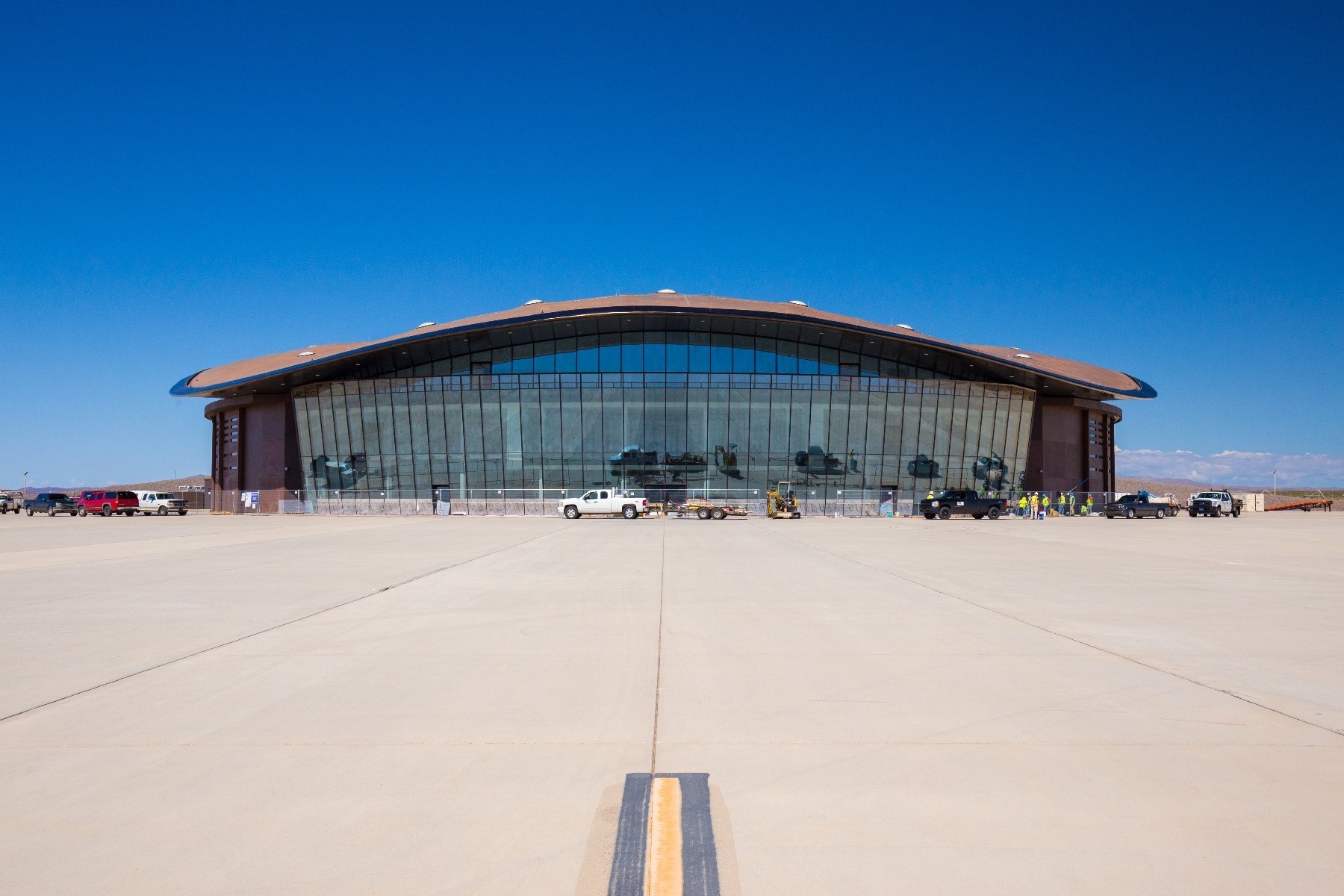
Who would be the space tourism “agencies”?
Unlike past tourism experiments, which took place aboard vessels sent off for scientific purposes, future travels will happen on private companies’ flights set up solely for space tourism.
Those pioneering aerospace companies are Richard Branson’s Virgin Galactic ; SpaceX, founded by Tesla co-founder Elon Musk ; and Blue Origin , created by Amazon founder Jeff Bezos.
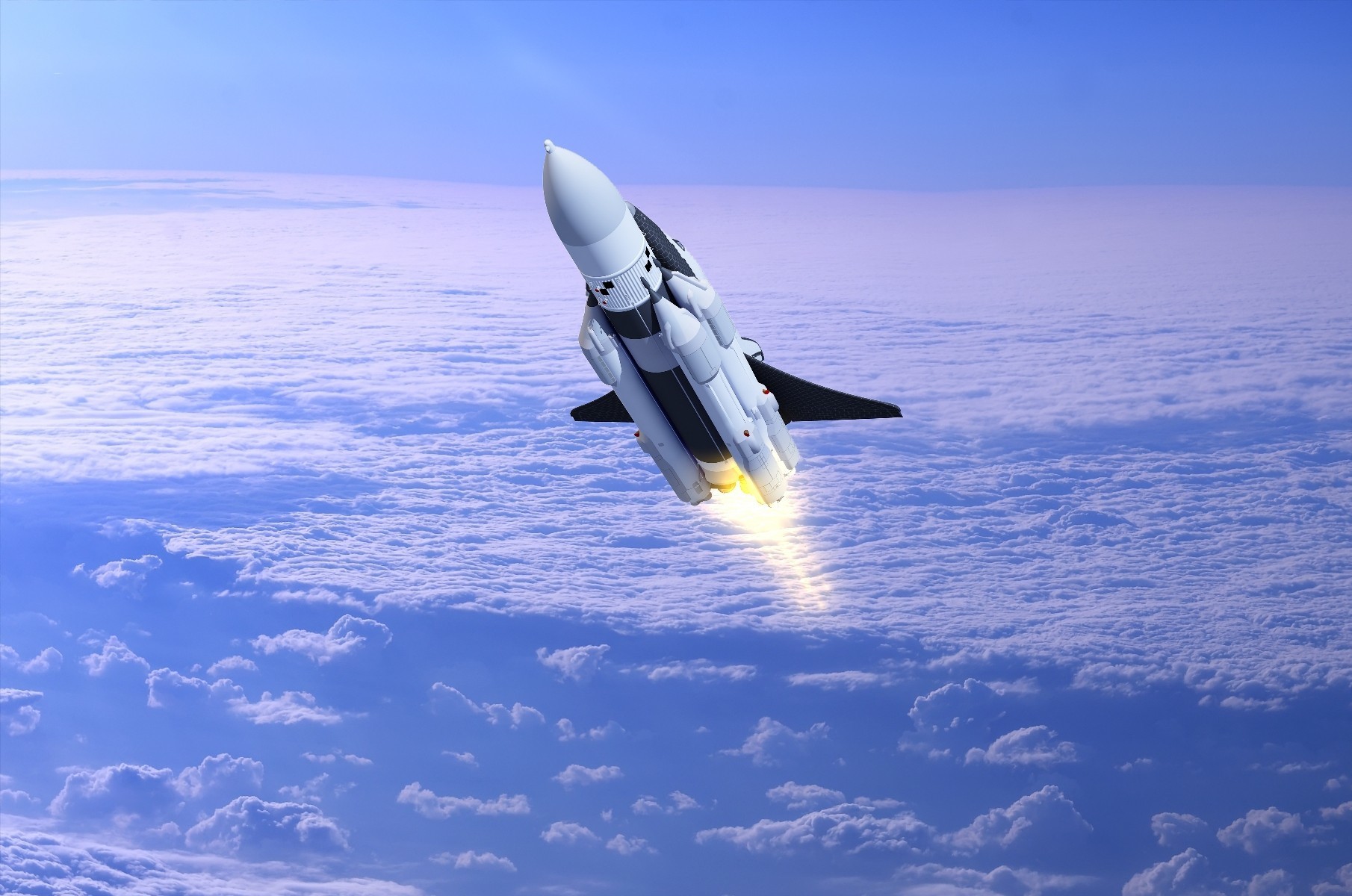
When will space tourism happen?
Sooner than you think. According to Forbes , Virgin Galactic’s successful trip means the company could start sending civilians up into space as soon as early 2022. Likewise, Blue Origin, which has a Federal Aviation Administration licence for human space travel through August 2021, could officially enter the space tourism game by early 2022.

How much will it cost?
It’s not exactly clear at the moment, but there have been some indications. For example, Virgin Galactic began selling ticket reservations for US$250,000 and sold roughly 600, before a test crash in 2014 brought sales to a halt. They’re expected to start selling tickets again in 2022, but at a much higher price.
It was reported in 2018 that seats on Bezos’s Blue Origin would also cost in the ballpark of US$200,000 to US$300,000, but that could change given how high demand is. At a recent auction, the winning bid for a seat aboard the company’s first spaceflight was a whopping US$28 million .
The bottom line is, those hoping to take a trip around the stars will either need to know someone or have hundreds of thousands (likely even millions) of dollars to spare.
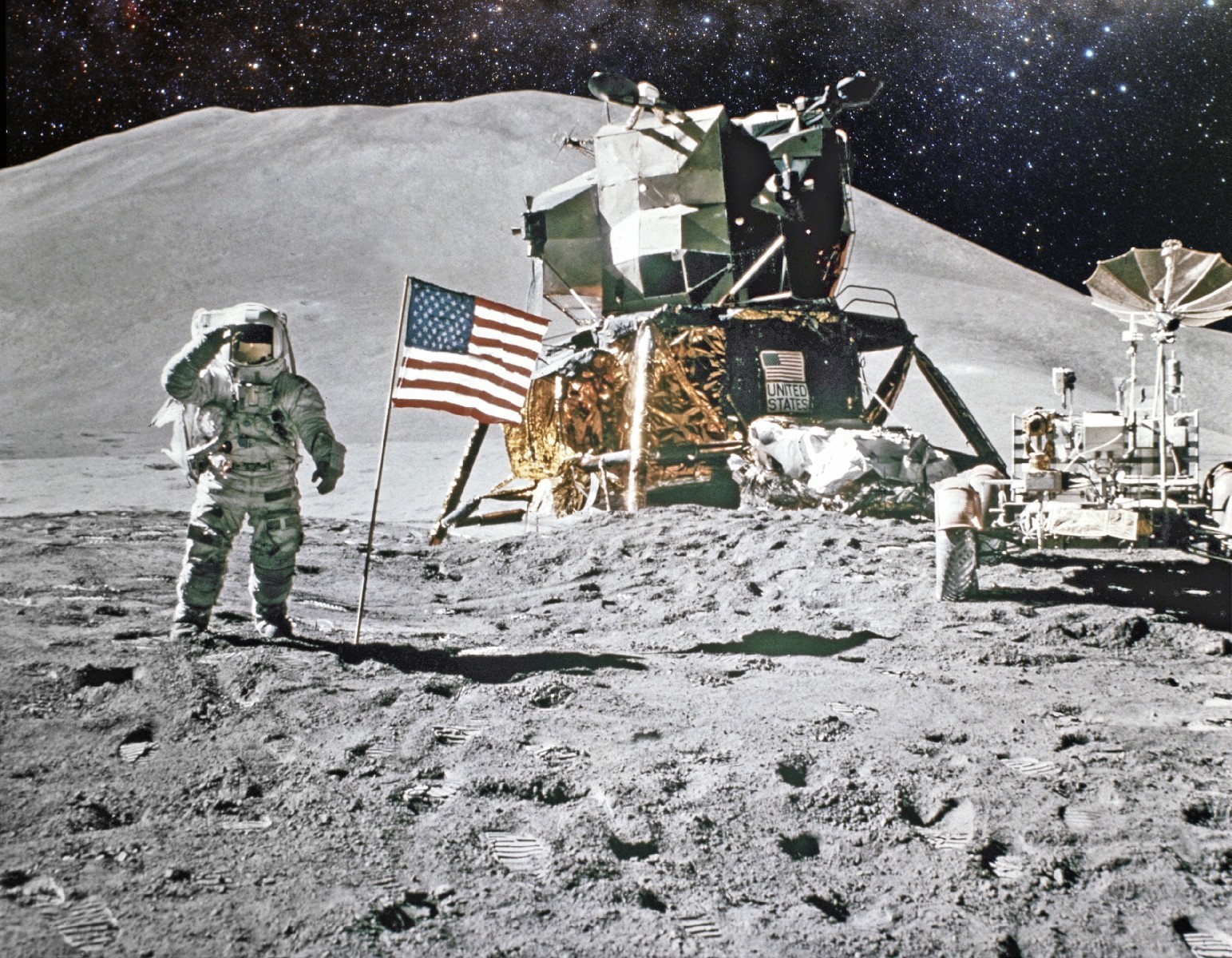
How do we get there?
The development of space tourism vehicles is still an ongoing project.
But a few options already exist, like Virgin Galactic’s spaceplanes that can carry up to eight people, or SpaceX’s Dragon spacecraft , launched by the Falcon Heavy rocket.
Blue Origin’s New Shepard looks more like a regular rocket that takes off and lands vertically, but also claims to offer the biggest windows of any spacecraft—a good selling point. It comfortably sits six people and is fully autonomous, meaning no pilot onboard.
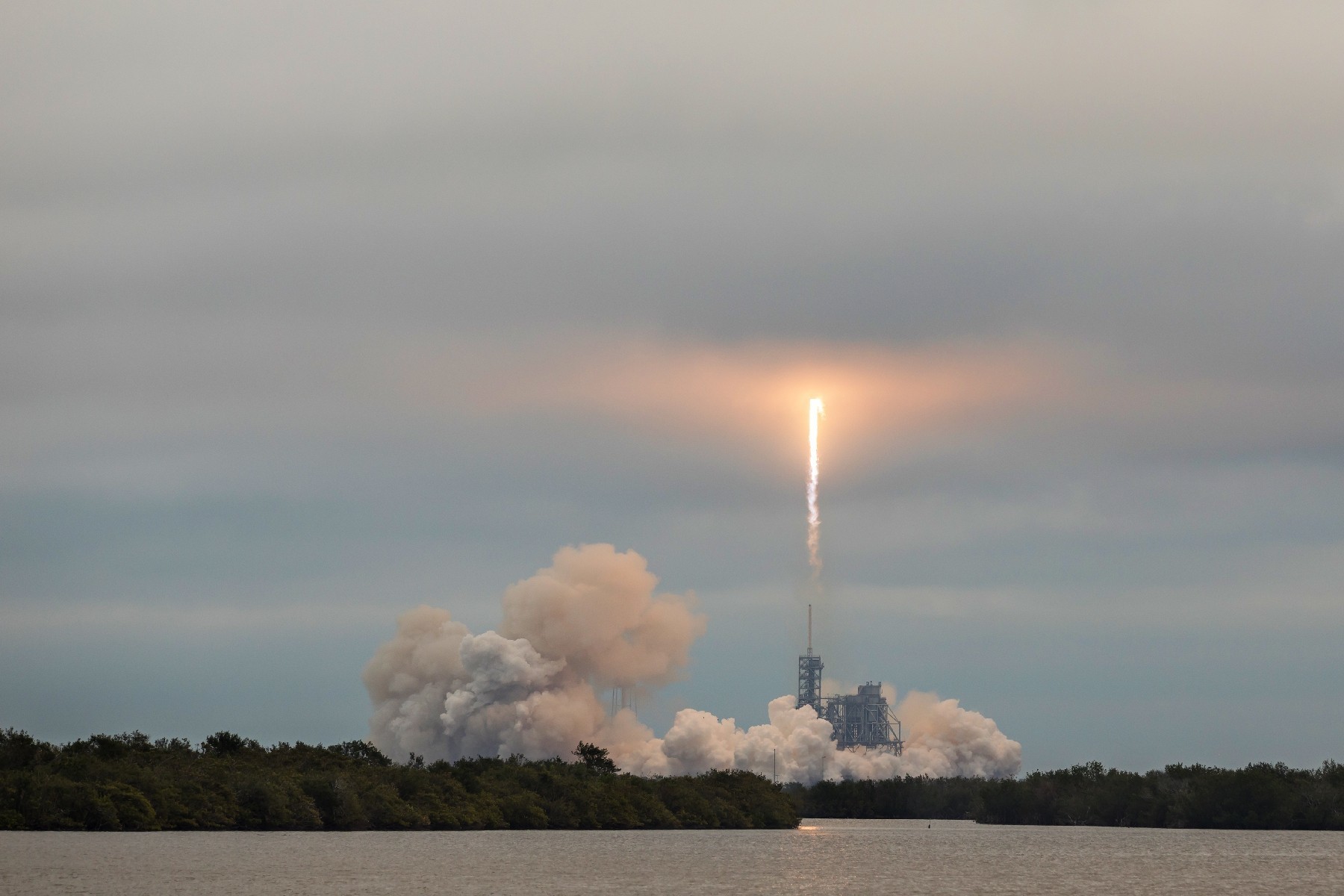
What does it feel like?
Needless to say, travelling to space is no walk in the park.
You’re eager to experience the joys of floating in microgravity? You better also get prepared to endure several physical discomforts: nausea and sea sickness, dizziness, headache, disorientation, puffy face, and bloodshot eyes.
But astronauts and previous space tourists agree that the body adjusts fairly quickly, getting used to its spatial environment in about three days.
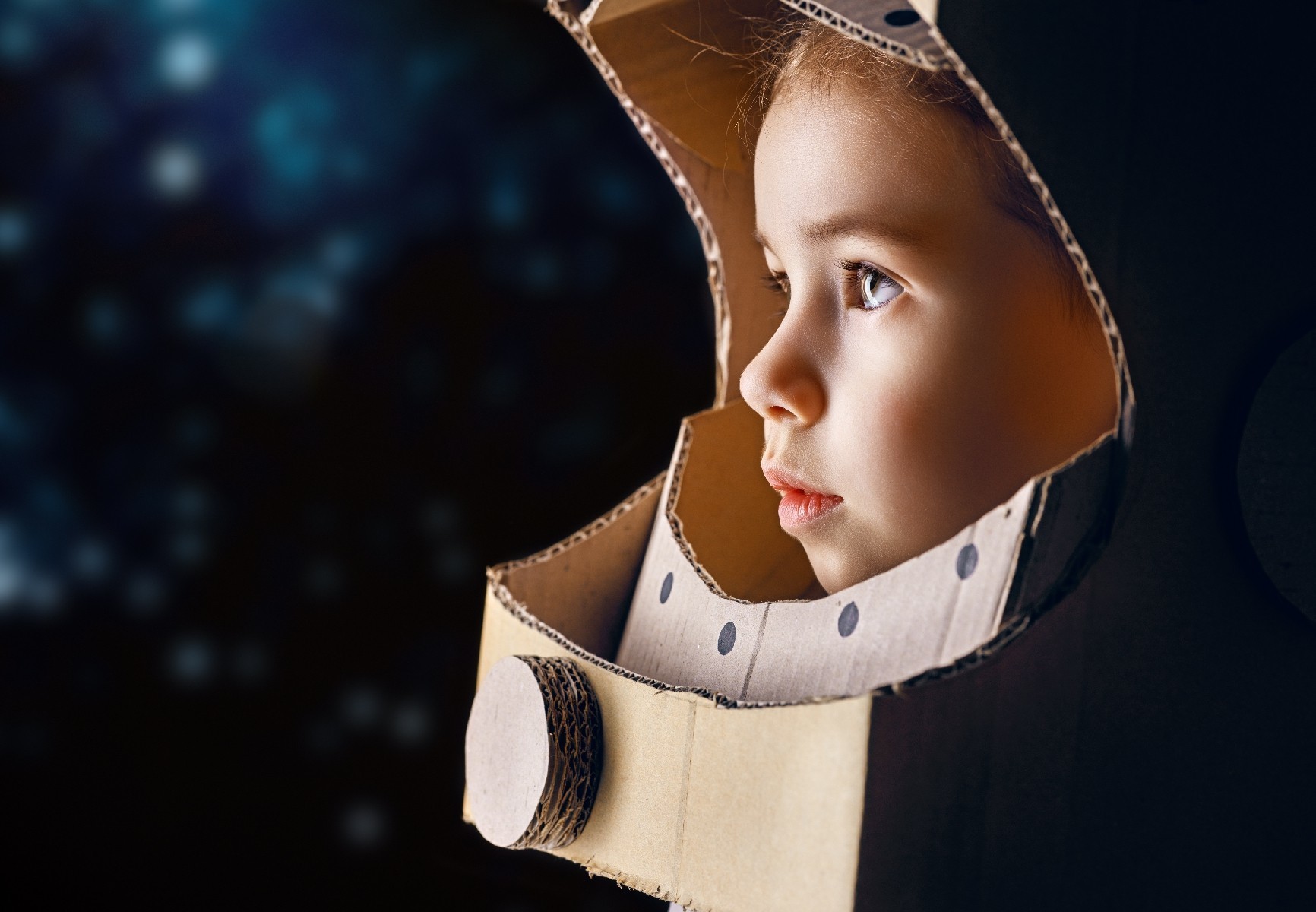
Is it safe?
Safety is a reasonable concern , considering the many hazards involved in space travel: the probability of a crash, exposure to cosmic radiation, and even unknown dangers that could emerge with this new industry. But here is the real question for any adventurer: is the thrill worth the risk?

What is the food like?
For many tourists, food is a crucial criterion for a successful vacation. But outer space is no place for gourmets, at least not yet. Interstellar tourists can expect to enjoy mostly canned, modified, and pre-packaged meals (such as space burritos and freeze-dried ice cream). But soon, thanks to NASA’s veggie farm , space tourists might be able to savour space-grown salads.
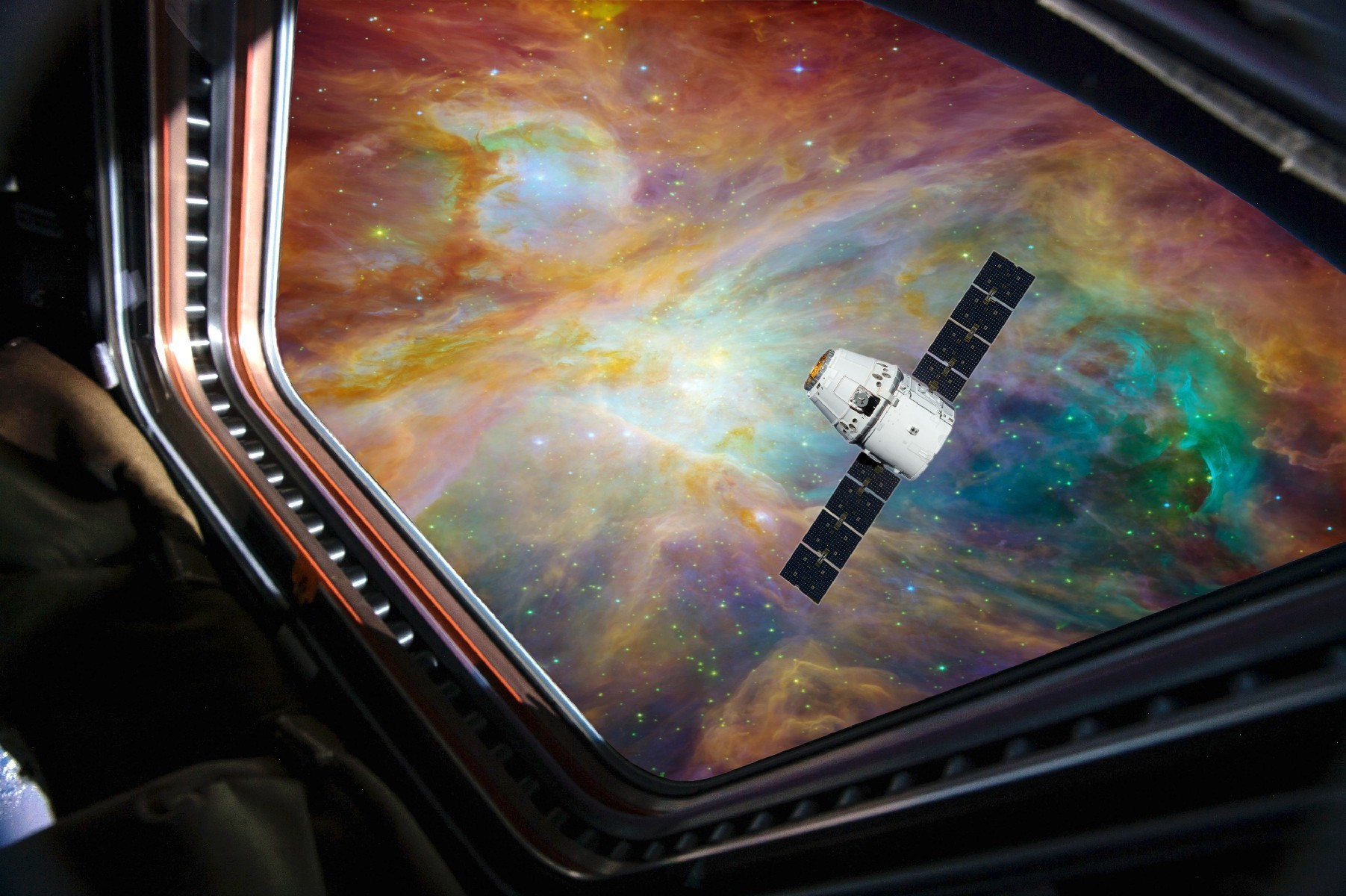
What about the accommodations?
Orbital space travel allows you to stay up there for a few days or even weeks. At that point, you might want to stretch your legs outside of the spacecraft, right? Well, in the future, space stations could be used as hotels: the Genesis inflatable habitats by Bigelow Aerospace and the Space Island Project are existing examples. Make sure to book a room with a view of planet Earth!
How to pack a space suitcase?
Packing a suitcase for a trip through the cosmos is actually less of a headache than doing so for a weekend vacation on Earth. Just keep in mind that it’s impossible to do laundry in space, so pack clothes accordingly : stock up on underwear, light clothing (space station temperature is controlled at about 22 degrees Celsius, or 72 degrees Fahrenheit), and exercise outfits. Outerwear will be provided: an orange suit for takeoff and re-entry, and a white one for potential space strolls.
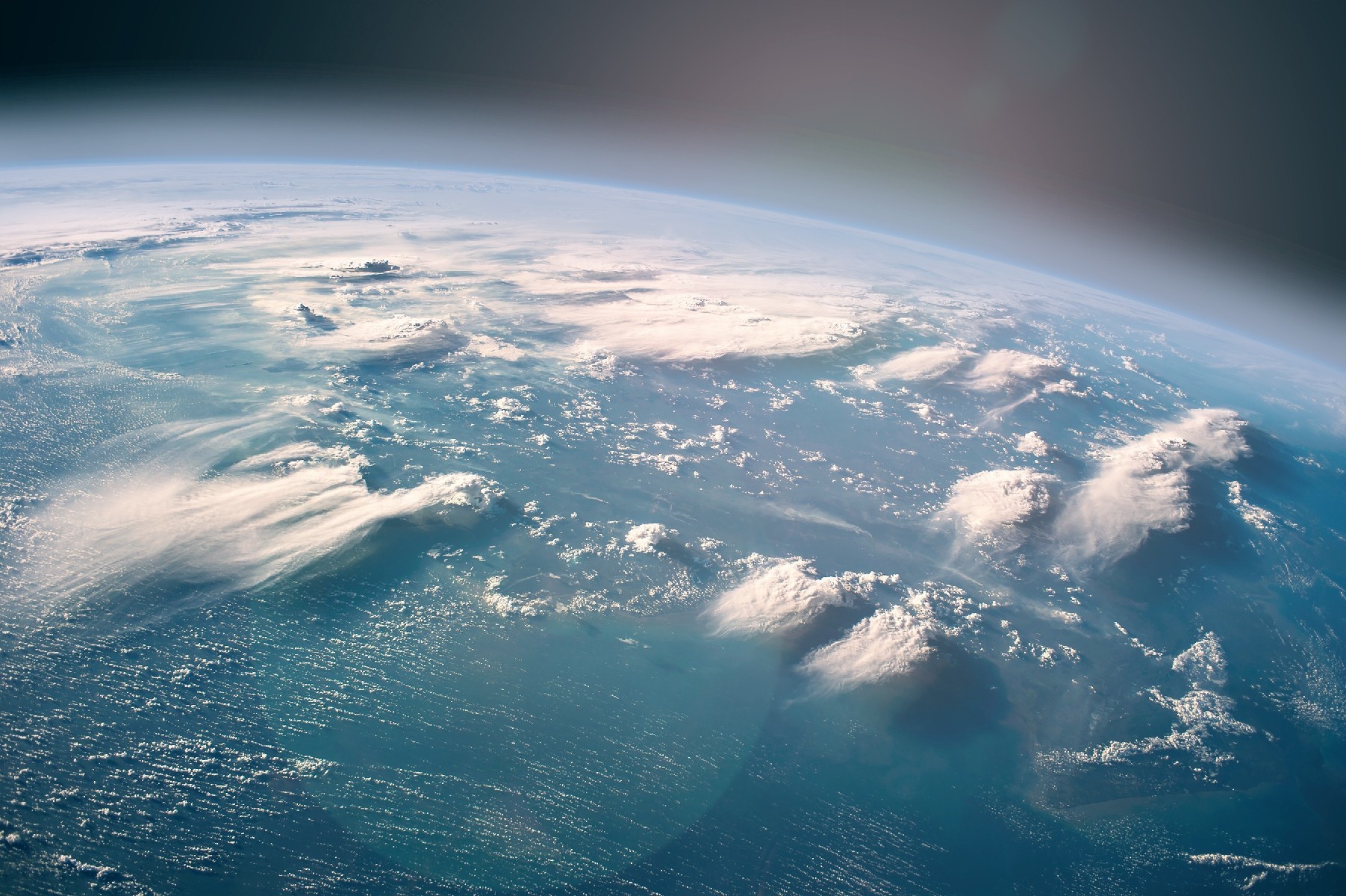
Is it eco-friendly?
With ecotourism being a growing trend and concern over the last few years, the question is legitimate. Well, bad news: space travel could have a negative impact by accelerating global warming . This would be caused by the black carbon released into the stratosphere after suborbital launches. But of course, entrepreneurs in the industry claim that the carbon footprint of space tourism would be minimal. The truth is, rockets emit 50 to 100 times more CO₂ per passenger than a regular flight. Considering that Virgin Galactic plans to do 400 trips per year, that’s a lot of CO₂ entering the atmosphere.
More for You
Common over-the-counter medicine linked to increased dementia risk
Russian convicts who earned their freedom fighting Ukraine are going home with swagger and a stash of money to burn: NYT
Teen ends up with stoma after period pain worry
What to do when your own number appears to ring your home phone
Southwest flight makes emergency landing after engine cover peels off
Kristen Wiig Hosts ‘SNL’ With Help From a Few Famous Friends
Doctor shares what happens to our bodies moments before we die
Kamilla Cardoso Net Worth: How much the South Carolina player gets from games and endorsements?
Belgian breakthrough: Stool transplant shows promise for improving symptoms of Parkinson's disease
4 Chain Restaurants With The Absolute Best Chicken Pot Pie And 4 With The Worst
Jordan Spieth to Debut New High-Tech Hat By Under Armour at The Masters
A drink now may impact you more than it would years ago. Here’s why that’s a problem
19 Easy Ways to Fall Back Asleep After Waking Up in the Middle of the Night
FireHouse Singer C.J. Snare Dead at 64
5 people explain what it actually feels like to die
16 Popular Pizza Chains, Ranked Worst to Best
The health condition many women are getting diagnosed with after COVID
17 Jobs That Pay $25 an Hour to Work From Home
‘We’re living through one of the biggest cultural backlashes… in history’: CNN’s Fareed Zakaria on new book
Gladiator 2's Official Logo Revealed
- Share full article
For more audio journalism and storytelling, download New York Times Audio , a new iOS app available for news subscribers.
An Engineering Experiment to Cool the Earth
A new technology is attempting to brighten clouds and bounce some of the sun’s rays back into space..
This transcript was created using speech recognition software. While it has been reviewed by human transcribers, it may contain errors. Please review the episode audio before quoting from this transcript and email [email protected] with any questions.
From “The New York Times,” I’m Katrin Bennhold. This is “The Daily.”
[MUSIC PLAYING]
After failing for decades to cut carbon emissions enough to stop the planet from dangerously overheating, scientists are increasingly looking at backup measures, some that would fight the warming by intervening in the climate itself. Today, my colleague Christopher Flavelle on the efforts to engineer our way out of the climate crisis.
It’s Friday, April 5.
So, Chris, you’ve been covering climate change for a while, but recently you’ve been focused on a very special project. Tell us about this.
Yeah, two things have been happening in climate change recently that are really important. Number one, records have been falling at alarming rates. Last year was, again, the hottest year on record. Much the world surpassed the important threshold of 1.5 degree Celsius above pre-industrial levels. So the world is getting warmer at an alarming rate.
At the same time, emissions aren’t falling. The message of the last generation has been, we need to cut emissions really to almost zero by the end of this century. And in fact, the reverse is happening. Emissions are continuing to rise.
At the same time, the number and characteristics of weather disasters have become really alarming. So the effects of that warming have become really clear. And it’s clear that the world is struggling to adapt to those effects.
So the other thing that’s happening at a high level is there’s more research and more consideration of OK, what if we can’t cut emissions fast enough? What if we’re going to have this really severe degree of warming? Can we do something else, maybe temporarily, to buffer those effects? And that’s led to this question of, what kinds of changes can we make deliberately to the atmosphere, to the environment that will maybe produce some sort of artificial cooling in the meantime?
So earlier this week I was able to watch, as scientists did, the first outdoor tests in the US on a technology that will aim to do just that. It’s called marine cloud brightening.
So what is this idea of brightening the clouds? Where did it originally come from?
So everyone I talked to pointed back to one really important moment in 1990 when a British physicist named John Latham was taking a hike in Wales with his young son. And they were looking out at the clouds over the Irish Sea.
And as Dr. Latham later told it, his son asked him, “Hey, why are clouds bright?” And Dr. Latham said, “Well, because they reflect sun right back in the sky.” And his son said, “So they’re like soggy mirrors.”
And Dr. Latham went on to write a letter in 1990 that was published in the Journal Nature, saying, you know what, if we can deliberately manipulate these clouds, maybe we can make them more reflective and actually counteract the effects of global warming. That was the inception point for this idea, and it led to decades of research culminating in this week’s test.
So the idea is if you can make clouds more reflective, you can reflect more of the sun’s heat back into space. So it won’t get trapped in the Earth’s atmosphere in the first place.
Exactly. That’s what they’re trying to do.
That’s a very simple, and at the same time, a very powerful idea. I love actually that they were hiking in Wales. That’s where I am right now, and we sure have a lot of clouds here, rain clouds. But tell me more about what you saw at the testing site.
So this Tuesday, a little after 7:00 in the morning, I pulled up in a parking lot on a dock at the edge of Alameda.
I’m standing at the gangplank to the USS Hornet, a decommissioned aircraft carrier in San Francisco Bay here for the first test in the US of a machine that was designed to try to brighten clouds, a way of maybe temporarily cooling the Earth.
And I made my way up one of the massive gangplanks and came in to find a cluster of some of the top atmospheric scientists in the world.
Have you met Sarah?
How do you do?
Hi, Rob. How are you?
Looking really excited. And they accompanied me out to the flight deck —
Here we are.
— of this aircraft carrier.
Pretty epic.
It’s pretty great.
Which was a bit like a party. They’d set up a little table on the side with some coffee and some sandwiches, and people were chatting and saying hi to each other. And I asked them why they were excited.
So I know a thousand of what you know, and I still find this exciting. You guys, walk me through. Is this like a big day for you or just like one more test?
No, this is a big day for me.
And they said this was actually a huge day in their research.
Just looking at it, going, yeah, this is the culmination of years of work, right?
Wow, and tell me about what exactly they were so excited about and what they were doing on the ship.
Yeah, the thing everyone was excited about was this machine set up at the far end of the flight deck of this aircraft carrier. It’s blue. It’s shiny. It looks a bit like a snow maker or maybe like a spotlight.
This machine is a sprayer. What it does is it sprays really, really, really small aerosol particles, in this case, smashed up sea salts, a long distance at just the right size and just the right volume. Because in theory, at some point, you could use this machine to change the size and number of the droplets in the clouds. You can make them brighter conceptually it’s possible. The question is, technologically, can we do it?
Yeah, the particles are coming out in a super concentrated there. So whatever’s coming out of that circle there is basically going to be huge by the time it gets to the cloud.
And so the goal with this test was they spent years building this sprayer that can use really high pressured air to smash salt particles into super small bits, about 1,700th the size of a human hair.
What they didn’t know, until this week, and they’re trying to find out right now, once you spray it, do those aerosols that are so finely tuned stay that size? In theory, they should.
What they don’t know is, things like wind and humidity and temperature could potentially cause them to coagulate, to regroup, which would throw the whole thing off. If the aerosols you’re shooting into clouds are too big, you can backfire the whole purpose. You can wreck what you’re trying to do because you make clouds less reflective, not more reflective.
So the whole goal of the experiment is, OK, can they make the spray just so, so that even in outdoor conditions, the aerosols that are so finely sized remain the size you want them to be. And that’s what they’re trying to find out.
And you watched the actual test of this. What did you see? What happened?
Those instruments are emitting a slight hum.
So operating the sprayer is not straightforward.
And they’re filling the tanks with the salt water that’ll be used to produce the mist.
There was somebody crouched on the control deck, the panel of instruments at the side of the sprayer. So I went over and tried to sit next to him and watch him as he turned a series of knobs and careful sequence.
OK. Yeah, everybody, we’re going to run some air. So the — ... We need two minutes here just to have power on this.
And after a series of tests to make sure the valves were clear —
OK, ear protection, please.
— finally the moment came, and he got an all clear over his walkie-talkie. And he turned on the water —
Water on, copy, over.
— and the air.
[COMPRESSOR ACTIVATING]
Since the sound of the compressor pushes pressurized air through the sprayer, it’s making a dull, throbbing sensation. You can feel it a little bit through the deck of the ship.
We all had ear protectors. And even with the ear protectors, it was really loud. And then you can almost feel the spray bursting out of this machine and watch it travel really hundreds of feet down the deck of the aircraft carrier.
OK, water off, fan off. Good job.
Awesome, guys, you’re done. Thank you. Excellent.
First test is done.
My first signal that things have gone well was I looked up when the spraying machine was turned off and saw some scientists high-fiving down the deck.
What’d you think?
It’s beautiful.
Is it what you thought it would be?
It’s better. And I’m optimistic that it will tell us a lot about what these things do. This made me really optimistic.
And the idea is to do several short bursts like that through the day?
And everyone seemed really excited that this thing they’d worked on for years was finally happening in this really important outdoor test.
OK, so it sounds like this test was a success.
Yeah, they stressed that they need a lot of time to really go over the results. They’ll be doing this test again and again in different weather conditions. But the initial reaction seemed positive. They seemed to think that the numbers they were getting were what they were hoping to see.
And so now the goal is, can they maintain the right size aerosols even in different conditions down the deck of this aircraft carrier? That’ll give them some confidence that if they decided one day to try and do this on the open ocean to actually brighten clouds, they’d have the ability to do it.
So, Chris, if all of this works, how and when do these researchers anticipate that this would actually be used?
Well, here’s a great example. In the month of February, a version of this testing was also happening in Australia, off the Coast of Australia, where researchers were testing whether marine cloud brightening could be used to cool the ocean just a little bit around the Great Barrier Reef.
Really high ocean temperatures are causing bleaching of that coral reef. The idea was, could they use marine cloud brightening to save some of those reefs from dying? And that’s probably a good idea of the fairly localized situation, where you could, in theory if you do it right, have a fairly quick degree of cooling that could maybe try to avert or mitigate something pretty acute like a heat wave or a stretch of warm weather that would kill coral. But the science is probably too new at this point to talk about the right situations to use it. Those conversations are all down the road as researchers look at these and other ideas for what they could do if things get really bad.
We’ll be right back.
So, Chris, when I think about solutions to climate change, it usually involves these very hard things we need to do, like, change the way we live, the way we drive, what we eat. We need these international treaties. We need carbon taxes regulation. There’s lots of hard stuff, and we haven’t gotten that far.
But here you’ve just told me about this technology that, if it ends up working, could actually help cool the planet without anyone needing to do any of these hard things. It sounds great.
It does sound great. Now, we’ve got to say, first of all that whenever anybody working on this stuff talks about it, the first thing they say is this is not an alternative to reducing emissions. This is looking for ways to buy time as we try to cut emissions. There’s no way to really deal with climate change that doesn’t entail burning less fossil fuel and quickly.
But yes, in addition to brightening clouds, there’s other ways to try to bounce more sunlight back into space and other ideas. My colleague David Gelles wrote the first piece in our series looking the idea of removing carbon dioxide directly from the air, reversing our past emissions.
Other ideas include finding ways to suck up more of the CO2 in the oceans. There’s even ideas that my colleague Cara Buckley covered of could we build a sort of a giant parasol way out in space that would reflect or scatter more of the sunlight and prevent some of that sunlight from even reaching the Earth in the first place?
So there’s a huge number of ideas that until very recently seemed just so bizarre and/or so expensive and/or so dangerous that they were hardly worth pursuing seriously. And what’s changed really quickly in the last really year or two is all of a sudden those ideas have switched from being too wild to spend much time on to being so important because the situation is so dire that we can’t not look at them. And that’s the pivot that my team has been trying to cover.
And what characterizes all these initiatives is that rather than reducing our own emissions, we’re now trying to intervene in the climate in a proactive way, engineering the climate in a way.
Yes, and you hear the phrase geoengineering to describe these ideas collectively. And what people who research this will stress is, we’re already geoengineering. For more than a century, we’ve been geoengineering in the sense of putting climate changing pollution into the atmosphere that’s caused the planet to change by trapping more heat in the atmosphere. So the question is, do we want to deliberately geoengineer in a way that will ease that pressure rather than just making it worse?
Of course, there some controversy attached to this. And there are some pretty valid concerns about what the consequences might be if we keep on pursuing these ideas.
And why are they controversial?
Well, the first concern that you hear is this idea of moral hazard, that if people come to think that there are ways of addressing climate change that don’t require them to change their lifestyle or sacrifice conveniences or change the kinds of cars they drive or how their power is generated that they will lose interest in those tough changes. And the momentum, such as it is, towards cutting emissions will fade even more. But we don’t know yet whether politicians or governments or companies or just people will misuse these ideas to try to shirk the harder work of reducing the amount of greenhouse gases we emit.
Another really important argument you hear is, OK, side effects. Do we really know what would happen if we tried these things? Marine cloud brightening is one of those situations where there are known unknowns and unknown unknowns, as they say.
The known unknowns are, well, what would happen to things like ocean circulation? What would happen to precipitation? What would happen to the effect on the amount of energy reaching the ocean? What would happen to the fisheries industry? We don’t really know, and researchers are trying to find out, what those effects might be.
Then there are the unknown unknowns. If you start deliberately changing the cloud system, well, what else might happen that we haven’t anticipated? Do you move the location of where rainfall happens? Do you perhaps upset the monsoon cycle in India? Do you change the ability to grow food in parts of the world?
So if you do this at a bigger scale, the consequences of those potential side effects get more and more severe. And I talked to environmentalists who said that’s a real concern. You just can’t model those risks. And you, to a degree, by pursuing this, have to accept that risk is real and almost roll the dice.
And I guess much like climate change, where you have a group of countries that is most responsible for CO2 emissions that have caused the global warming and then a whole other group of countries that are probably suffering the worst consequences, even though they haven’t contributed to those emissions nearly as much, you might see a situation where this kind of interference with the climate at the initiative of some countries, presumably the wealthy countries that have that technology, would then have unintended consequences in countries that have no control over this. So that’s tricky.
That’s right. And that takes us to a third category of concerns, which is, OK, let’s assume that things are bad enough, that collectively societies want to take those risks of those side effects. Well, then who chooses, who decides when we get to that point? Is there even a mechanism that would allow you to get informed consent from everybody who’d be affected?
And if these would affect everybody, it’s hard to imagine how you would build a governance mechanism that would allow you to say, before we push the button, are we sure everybody is OK with this? The only counter to all of these concerns is compared to what? And this is the point that researchers make.
OK, this is dangerous. OK, it presents challenges, but compared to what? Their point is, don’t compare it to a situation where everything’s fine. Compare it to a situation we’re actually in, where the trajectory of global warming is so serious and isn’t looking like it’ll get better any time soon. Well, compared to those risks, how do these risks compare?
And the question is, would you rather have a world of basically uncontrolled warming? And we have an idea of what that brings, wildfires and drought and sea level rise and storms and diseases. Is that better than some of these more perhaps controlled risks associated with deliberately tinkering with the environment?
So it’s almost like pick your poison. What sort of threats do you want to embrace? And that’s the overwhelming dilemma that we face with this technology.
In a way, what it makes me think, is that these crazy initiatives that we’ve been hearing about from you are yes, they’re testament to our failure in a way to combat climate change so far, because they’re such a last resort, really, such as an act of desperation. But at the same time, it seems like this urgency has actually unleashed a lot of energy and money to tackle the problem.
Yeah, and there’s good news in this. The good news is, the research we’re talking about demonstrates the really amazing capacity of scientists to come up with new ideas, develop new technologies, test them quickly, and at least build some options.
So if there’s any rays of hope around climate change, it’s that humanity’s capacity to innovate and find new ideas is almost endless. So the question is not, are we pursuing the wrong research ideas? The question is, can we find good ideas fast enough to avert the really serious consequences of climate change that we’re already facing?
Chris, I just remember that scientist we heard in the tape from your visit. And she was so excited. And she said that she was really optimistic. I wonder, how are you feeling?
I think the frustration that you’ll hear among climate reporters, and I’m in this group, is that most people seem not to appreciate the severity of the situation that we’re in. There seems to be a view that we’re dealing with this. People are buying electric cars, and we’re getting more solar power and wind power. And things are going the right way, and this will be OK.
Things are not going the right way. Not only are we on the wrong trajectory in terms of emissions, we are so far away from being on the right trajectory for emissions that it’s hard to imagine us cutting emissions globally at a rate anywhere near fast enough to avoid almost unbearable consequences of global warming. So that’s the downside.
[MUSIC PLAYING] Here’s the good news, though. I do think, and this again I think is a view among other climate reporters, the capacity of scientists and of companies to change track and to find new products and apply new ideas is really impressive. It just doesn’t feel like there’s a connection yet between the urgency of the situation and the way people and companies and governments are responding.
And so I guess if the question is, how I feel about this? I am constantly amazed at the ingenuity of the researchers I come across in my job every day. What I don’t yet know about is whether or not society will move fast enough to adopt and apply those ideas before the conditions that we face from climate change become almost unbearable.
Well, Chris, on this cautiously optimistic note, thank you very much.
Here’s what else you need to know today. In a tense phone call with Israel’s leader Benjamin Netanyahu on Thursday, President Biden called the airstrikes that killed seven aid workers this week unacceptable and threatened to condition future support for Israel on how it addresses concerns about civilian casualties and the humanitarian crisis in Gaza. It was the first time that Biden explicitly sought to leverage American aid to influence Israel’s conduct of the war against Hamas. But the White House stopped short of saying directly that the president would halt arms supplies or impose conditions on their use as some fellow Democrats have urged him to do.
And a centrist group called No Labels has abandoned its plans to run a presidential ticket in this year’s election after failing to recruit a candidate. The group, which last year said it raised $60 million, had planned to put forward what it called a bipartisan unity ticket in the event of a rematch between President Biden and former President Trump but in recent months suffered a string of rejections from prominent Republicans and Democrats who declined to run on its ticket.
Today’s episode was produced by Michael Simon Johnson, Eric Krupke, Luke Vander Ploeg and Rachelle Bonja. It was edited by Patricia Willens, contains original music by Rowan Niemisto, Elisheba Ittoop, and Marion Lozano, and was engineered by Chris Wood. Our theme music is by Jim Brunberg and Ben Landsverk of Wonderly.
“The Daily” is made by Rachel Quester, Lynsea Garrison, Clare Toeniskoetter, Paige Cowett, Michael Simon Johnson, Brad Fisher, Chris Wood, Jessica Cheung, Stella Tan, Alexandra Leigh Yang, Lisa Chow, Eric Krupke, Marc Georges, Luke Vander Ploeg, MJ Davis Lin, Dan Powell, Sydney Harper, Michael Benoist, Liz O. Baylen, Asthaa Chaturvedi, Rachelle Bonja, Diana Nguyen, Marion Lozano, Corey Schroeppel, Rob Szypko, Elisheba Ittoop, Mooj Zadie, Patricia Willens, Rowan Niemisto, Jody Becker, Rikki Novetsky, Nina Feldman, Will Reid, Carlos Prieto, Ben Calhoun, Susan Lee, Lexie Diao, Mary Wilson, Alex Stern, Dan Farrell, Sophia Lanman, Shannon Lin, Diane Wong, Devon Taylor, Alyssa Moxley, Summer Thomad, Olivia Natt, Daniel Ramirez, and Brendan Klinkenberg.
Special thanks to Lisa Tobin, Sam Dolnick, Paula Szuchman, Larissa Anderson, Julia Simon, Sofia Milan, Mahima Chablani, Elizabeth Davis Moorer, Jeffrey Miranda, Renan Borelli, Maddy Masiello, Isabella Anderson, and Nina Lassam.
That’s it for “The Daily.” I’m Katrin Bennhold. See you Monday.

- April 8, 2024 • 29:31 The Eclipse Chaser
- April 7, 2024 The Sunday Read: ‘What Deathbed Visions Teach Us About Living’
- April 5, 2024 • 29:11 An Engineering Experiment to Cool the Earth
- April 4, 2024 • 32:37 Israel’s Deadly Airstrike on the World Central Kitchen
- April 3, 2024 • 27:42 The Accidental Tax Cutter in Chief
- April 2, 2024 • 29:32 Kids Are Missing School at an Alarming Rate
- April 1, 2024 • 36:14 Ronna McDaniel, TV News and the Trump Problem
- March 29, 2024 • 48:42 Hamas Took Her, and Still Has Her Husband
- March 28, 2024 • 33:40 The Newest Tech Start-Up Billionaire? Donald Trump.
- March 27, 2024 • 28:06 Democrats’ Plan to Save the Republican House Speaker
- March 26, 2024 • 29:13 The United States vs. the iPhone
- March 25, 2024 • 25:59 A Terrorist Attack in Russia
Hosted by Katrin Bennhold
Featuring Christopher Flavelle
Produced by Michael Simon Johnson , Eric Krupke , Luke Vander Ploeg and Rachelle Bonja
Edited by Patricia Willens
Original music by Rowan Niemisto , Elisheba Ittoop and Marion Lozano
Engineered by Chris Wood
Listen and follow The Daily Apple Podcasts | Spotify | Amazon Music
Decades of efforts to cut carbon emissions have failed to significantly slow the rate of global warming, so scientists are now turning to bolder approaches.
Christopher Flavelle, who writes about climate change for The Times, discusses efforts to engineer our way out of the climate crisis.
On today’s episode

Christopher Flavelle , who covers how the United States tries to adapt to the effects of climate change for The New York Times.

Background reading
Warming is getting worse. So they just tested a way to deflect the sun .
Can we engineer our way out of the climate crisis ?
There are a lot of ways to listen to The Daily. Here’s how.
We aim to make transcripts available the next workday after an episode’s publication. You can find them at the top of the page.
The Daily is made by Rachel Quester, Lynsea Garrison, Clare Toeniskoetter, Paige Cowett, Michael Simon Johnson, Brad Fisher, Chris Wood, Jessica Cheung, Stella Tan, Alexandra Leigh Young, Lisa Chow, Eric Krupke, Marc Georges, Luke Vander Ploeg, M.J. Davis Lin, Dan Powell, Sydney Harper, Mike Benoist, Liz O. Baylen, Asthaa Chaturvedi, Rachelle Bonja, Diana Nguyen, Marion Lozano, Corey Schreppel, Rob Szypko, Elisheba Ittoop, Mooj Zadie, Patricia Willens, Rowan Niemisto, Jody Becker, Rikki Novetsky, John Ketchum, Nina Feldman, Will Reid, Carlos Prieto, Ben Calhoun, Susan Lee, Lexie Diao, Mary Wilson, Alex Stern, Dan Farrell, Sophia Lanman, Shannon Lin, Diane Wong, Devon Taylor, Alyssa Moxley, Summer Thomad, Olivia Natt, Daniel Ramirez and Brendan Klinkenberg.
Our theme music is by Jim Brunberg and Ben Landsverk of Wonderly. Special thanks to Sam Dolnick, Paula Szuchman, Lisa Tobin, Larissa Anderson, Julia Simon, Sofia Milan, Mahima Chablani, Elizabeth Davis-Moorer, Jeffrey Miranda, Renan Borelli, Maddy Masiello, Isabella Anderson and Nina Lassam.
Katrin Bennhold is the Berlin bureau chief. A former Nieman fellow at Harvard University, she previously reported from London and Paris, covering a range of topics from the rise of populism to gender. More about Katrin Bennhold
Christopher Flavelle is a Times reporter who writes about how the United States is trying to adapt to the effects of climate change. More about Christopher Flavelle
Luke Vander Ploeg is a senior producer on “The Daily” and a reporter for the National Desk covering the Midwest. More about Luke Vander Ploeg
Advertisement
Money blog: Sales of viral Prime drink sink - as one supermarket 'sells at discount price'
Sales of the viral Prime sports drinks have fallen sharply in 2024 and are down by more than half year on year. Read this and the rest of today's personal finance news in the Money blog - and comment on any of the stories we're covering, or leave a Money Problem, in the form below.
Monday 8 April 2024 16:07, UK
- Pensions rising 8.5% today - as benefits go up 6.7%
- Money Problem : The monthly charge on my leasehold flat has gone up by more than £60 a month - what are my rights?
- Sales of viral Prime drinks sink - as one supermarket 'sells at discount price'
- London restaurant chain ditches tips - just before new legislation saying staff must get 100%
- You may be buying herbs and spices all wrong - and spending six times more than you need to
- The price of getting divorced
Ask a question or make a comment
Higher interest rates mean more people are opting to take out out longer mortgages in order to afford their repayments.
If you've recently agreed a mortgage deal that will take you past retirement age, we'd like to hear from you.
Are you worried, or do you feel it doesn't matter? Have you had to change any of your life plans to take on the mortgage?
Let us know by sending us a message via our Whatsapp here.
Aldi is now Britain's third-biggest supermarket after kicking Asda from the bronze medal spot, according to one set of industry figures.
NIQ data shows Asda's growth has slowed, with sales up just 0.8% in the past three months - the worst performance of any big-name retailer.
Its market share has also dropped below Aldi's, with Asda making up 11.7% of the grocery market in the 12 weeks to 23 March, compared with 12.2% for Aldi.
The cost of living crisis has seen major supermarkets in the UK battle to market themselves as the best value for money for shoppers.
Aldi's UK operation reported a 26% rise in sales in December compared to the previous year.
Ex-Lidl UK boss Ronny Gottschlich said previously that he thinks the combined share of the two budget supermarkets will overtake Tesco "by 2027 at the latest".
Here's the latest Which? survey on the UK's cheapest supermarket for a basket...
Sales of the viral Prime sports drinks have fallen sharply since the start of 2024 and are down by more than half year on year, according to a report.
Chaos broke out in UK supermarkets at the end of 2022 following the release of the drinks, with some being re-sold by shoppers at inflated prices due to intense demand.
Prime, founded by KSI and fellow YouTuber Logan Paul, was the fastest growing food and drink brand in 2023, according to The Grocer.
But a new report by the grocery news outlet cites NIQ data which shows that sales of Prime in the first quarter of 2024 sat at just £12.8m - less than half the £26.8m reported over the same period last year.
A picture emerged on social media last month of bottles of Prime being sold for just 31p in Tesco - although it's worth pointing out that the supermarket giant had previously been reluctant to stock them and other companies are still selling them at around the £2 mark.
You no longer have to pay a fee to sell pre-owned clothing on eBay.
The online marketplace says it has scrapped the charge for private sellers in the UK in a bid to prevent items from ending up in landfill.
In reality, eBay is trying to compete with popular apps such as Vinted and Depop. These apps tend to attract a younger market - which eBay is eager to infiltrate.
Under its change, all items are covered except hats, footwear, watches, bags and jewellery, which still incur a fee.
Items listed before today will benefit from the change.
Kirsty Keoghan, general manager of global fashion for eBay, said: "Free fashion selling has come at the right time for a nation sitting on billions of pounds worth of unwanted clothes.
"We know selling clothes can sometimes feel like a chore, so free selling and new updates like new AI-powered listings will help more of us to sell clothes easily, putting more cash in pockets."
By Sarah Taaffe-Maguire , business reporter
The price of oil is hovering around $90 a barrel, levels last seen six months ago in the wake of the Hamas attacks on 7 October.
It's a slight fall from the $91.50 recorded on Friday but still not good news for motorists and for most of the economy, which is largely reliant on oil to fuel production.
The FTSE 100 index of most valuable companies on the London Stock Exchange is down 0.03% this morning with Marks and Spencer experiencing the biggest fall.
Its share price is down 2.45%, followed by the London Stock Exchange Group (LSEG) itself.
Following stories of a shareholder revolt in LSEG, as its chief executive David Schwimmer is in line for a pay rise from £6.3m to £13.2m, the share price fell 1.9%.
A pound buys $1.2616 and €1.656.
Nail salon prices across the UK are going up today as thousands of workers band together.
The Nail Tech Org (NTO) says its member nail technicians make on average just under £7 per hour, well below the minimum wage of £11.44 - and so they're collectively coming together to raise prices to help increase pay.
Lauren Pritchard, owner of The Beauty Bar in Birmingham, told Sky News the cost of opening her salon on a day-to-day basis has doubled in the last four years because of increased energy and product costs.
She says she has already lost some clients after announcing her price increase of £2-3 per service.
"It's always going to be a bit scary," she said, but increasing her prices at the same time as others makes it easier.
"It's us coming together to encourage each other rather than pitching us against each other by undercutting prices."
The state pension rises by 8.5% today.
The "new" state pension, for those reaching state pension age on or after 6 April 2016, will rise to £221.20 a week - up from £203.85.
The "basic" state pension, for those who took it out prior to April 2016, is rising to £169.50 a week. These people may also get SERPs (State Earnings Related Pension Scheme), which goes up by 6.7%.
Both groups may get more or less depending on individual circumstances.
While the rise is welcome news for some 12 million pensioners, we reported last week that 650,000 additional pensioners could be dragged into paying income tax for the first time.
This is down to state pensions rising in line with inflation while the tax threshold has been frozen at £12,570 (and will remain so until 2028).
The 8.5% increase in the "new" state pension this week will take it to £11,502. While welcome, it means any pensioner with an additional income over £1,068 per year - for example from a private pension - will trigger a tax bill.
Means-tested benefits will also increase today - along with other benefits increases this weekend and at the start of the month. Here's a round up...
- Child benefit
The amount people can earn before child benefit is reduced or taken away is increasing.
At the moment, people lose 1% of the benefit for every £100 they earn over £50,000. At £60,000, the benefit is cut completely.
From this month, the benefit won't be reduced until one parent earns more than £60,000. And it will only go completely at £80,000.
Benefits and tax credits that are linked to inflation will rise by 6.7% this month.
That was the level CPI in September.
These benefits have to go up 6.7% by law:
- Personal independence payment (PIP)
- Disability living allowance
- Attendance allowance
- Incapacity benefit
- Severe disablement allowance
- Industrial injuries benefit
- Carer's allowance
- Additional State Pension
- Guardian's allowance
The government also pledged the same raise for benefits including:
- Universal credit
- Contributory employment and support allowance
- Contributory jobseeker's allowance
- Statutory maternity/paternity pay and maternity allowance
- Income-based jobseeker's allowance (JSA)
- Income-related employment and support allowance (ESA)
- Income support
- Working tax credit
- Child tax credit
From April universal credit rates are:
- Single and under 25 - £311.68
- Single and 25 or over - £393.45
- Live with partner, both under 25 - £489.23 (for you both)
- Live with partner, either of you are 25 or over £617.60 (for you both)
Every Monday we put your financial dilemmas or consumer disputes to industry experts. You can find out how to submit yours at the bottom of this post.
This week, Sky News reader SBwrry asks...
"I own a flat in a block where the developer contracted a company to manage the communal facilities. The first year the monthly charge was £149 per month. From April they will increase the monthly charge to £216 per month. What rights do I have to challenge this increase?"
Mark Chick, senior partner at Bishop and Sewell law firm, picks up the first half of this one...
Firstly, we need to understand whether this is a shared ownership property or not.
However, assuming the lease has a service charge, and that the common facilities form part of the costs which are recoverable under the terms of the lease, then the leaseholder would have the right to challenge the costs in the first-tier tribunal.
In accordance with the provisions of the Housing Act 1985, service charges must be "reasonable" and you have the right to bring a challenge.
In this situation, the leaseholder would need to pay their own costs of going to tribunal and therefore it may make sense to act collectively; if the tribunal did order the service charge is "unreasonable" and should be reduced, this should benefit all those that pay it.
But the first step is to write to the freeholder or manager querying why the increase has been levied, and also to review carefully the provisions of the lease to ensure these are costs which they can legitimately pass on to you as the flat owners.
The Money team's Katie Williams has looked at another avenue you could explore...
Leaseholders in a block of flats can take over management of the building under a process introduced in 2002 called right to manage (RTM).
The leaseholders have to set up a RTM company in order to be able to take over management duties. It can be done without the permission of the landlord, but they will have a right to be a part of the company. They'll also have the option to dispute the claim if they think the RTM company isn't entitled to manage the building.
The RTM process can be used to take back control of a poorly managed block, but flat owners don't need to prove mismanagement to exercise their right.
There are some conditions that have to be met before management can be taken over:
- The building must be self contained and include at least two flats;
- At least two-thirds of the flats in the building have to be leasehold;
- At least 75% of the building must be residential;
- At least half the leaseholders must participate, or all if the building consists of two flats only.
The advantage of right to manage is that you have greater control over the cost of running the building which could lead to big savings - but a potential disadvantage is that it could be time-consuming and stressful in the long run.
This feature is not intended as financial advice - the aim is to give an overview of the things you should think about. Submit your dilemma or consumer dispute, leaving your name and where in the country you are, in the form above or by emailing [email protected] with the subject line "Money blog". Alternatively, WhatsApp us here .
If you regularly buy herbs and spices from the supermarket, it could be that you're doing it all wrong.
These items have their own section, usually somewhere near the stock cubes and gravy.
If that's where you pick up your cumin or chilli flakes, for example, you should consider having a look down the world aisle instead.
They're usually much, much cheaper per 10g, and although you'll likely have to buy a slightly bigger packet, you're getting much better value for money.
The Money team popped into a Tesco Extra to have a look - though you'll find this applies to all the big supermarkets where they have a world food aisle.
- East End ground cumin - 13p for 10g v Tesco own brand 23.3p
- East End chilli flakes - 7.6p for 10g v Tesco own brand 35.7p
- East End cinnamon sticks - 13p for 10g v Tesco own brand 83.3p
- Rajah chilli powder - 5p per 10g v Tesco own brand 20p
- Rajah turmeric - 6p per 10g v Tesco own brand 22.2p
- East End fennel seeds - 13p per 10g v Tesco own brand 27.8p
- Natco ground coriander - 14.5p per 10g v Tesco own brand 27.8
- East End garlic powder - 13p per 10g v Tesco own brand 22.2p
And it's not just herbs and spices.
For example, we saw desiccated coconut at £4.25 per kg down the world aisle, compared with £7.25 for Tesco's own brand.
A popular London restaurant chain has ditched tips - and has instead introduced a 15% "brand charge" in order to increase staff wages.
Ping Pong's decision comes just months before new laws mean restaurants will have to give 100% of tips to staff - and unions have hit out.
How much are wages going up?
The dim sum chain's lowest paid employees will see their pay increase from £10.42 to £12.64.
The national minimum wage for people aged over 21 rose from £10.42 to £11.44 on 1 April. The real living wage in London is £13.15, according to the Living Wage foundation.
What is the 15% 'brand charge'?
The "brand charge" covers "costs associated with operating a franchised brand and delivering the dining experience to brand standards", Ping Pong menus read.
The charge will eventually be incorporated into menu prices.
Customers at Ping Pong will no longer be able to leave a tip by card. Cash tips are allowed - but many customers don't carry cash these days.
Unite's Bryan Simpson said offering £1 above the minimum wage to replace "a healthy per hour tip rate" is "a complete slap in the face" for staff.
"Ping Pong's decision to effectively deny workers tips by cynically changing the service charge to a 'brand charge' in order to circumvent the new fair tips legislation is one of the most blatant examples of tips theft that we've come across as the union for restaurant and bar workers," he said.
"No matter what senior management call it, customers will assume that this 15% is a tip that should go to workers, but it won't. That is completely disingenuous."
Several reviews on TripAdvisor bemoaned the bill change, with some describing it as "outrageous".
"I thought it was a service charge at first but queried it and was told it was a brand charge and service had to be paid in cash on top! Needless to say we asked for this to be deducted and I did not then feel inclined to give them a service tip," one reviewer said.
What has Ping Pong said?
Owners AJT Dimsum said: "The business is very proud of the reputation it has as a good employer and, despite the many recent headwinds, has acted with integrity and honour, with a high priority placed on employee retention.
"The benefit to our employees will be stability of wages throughout the year, reducing the impact of seasonality and the higher wages will also mean improved access to financial products such as loans and mortgages."
Be the first to get Breaking News
Install the Sky News app for free


COMMENTS
Evolution of Spaceflight Costs and Technologies. During the space race, the cost of sending something into space averaged between $6,000 to over $25,000 per kg of weight not adjusted for inflation and NASA spent $28 billion to land astronauts on the moon, about $288 billion in today's dollars. In recent decades, it has averaged around $10,000 ...
Fewer than 700 humans have ever experienced space. As a Virgin Galactic astronaut, your journey marks the dawn of a new space age, where leaving Earth's atmosphere is an experience no longer reserved solely for professional astronauts. From the moment you join our global community of pioneering adventurers, to the day you earn your astronaut ...
Visit for as low as $45 per day and experience everything at the visitor complex! Save with a 2-Day Admission Ticket, and return for a second time within 6 months. See details below. ADULT (age 12+) $89. CHILD (age 3-11) $79. BUY ADMISSION.
How much does it cost for a person to go to space? Virgin Galactic: $250,000 for a 2-hour suborbital flight at an altitude of 80 km; Blue Origin: approximately $300,000 for 12 minutes suborbital flight at an altitude of 100 km; Axiom Space: $55 million for a 10-day orbital flight;
These short trips are anticipated to cost between $250,000 and $500,000, but in January 2022, expect to see a truly out-of-this-world private trip to space with an even more astronomical price tag.
How much does a ticket to space cost through Virgin Galactic? Originally, the company charged $250,000 to early buyers. And more than 600 people have already signed up at that price to be ...
Space Perspective: "Hot Air Balloon" to Stratosphere. Price: $125,000. Flight altitude: 30 kilometers. What you'll get: A relaxing six-hour ride to the stratosphere in a balloon-borne ...
Jason Lyon. By Debra Kamin. May 7, 2022. Ilida Alvarez has dreamed of traveling to space since she was a child. But Ms. Alvarez, a legal-mediation firm owner, is afraid of flying, and she isn't ...
They cost $450,000. On Tuesday, the aerospace company announced plans to sell tickets to the general public to snag a seat for a future spaceflight. Reservations open up Feb. 16 and will cost ...
So far, tickets to the edge of space go for six figures—$200,000 or more—while booking an orbital expedition costs up to eight figures. A $200,000 price tag for a brief spaceflight tops the ...
The same goes for Virgin Galactic, which plans to begin private flights to space during 2022. It charged $250,000 for tickets until it paused ticket sales a few years ago. While it has said it ...
Launch to space on a rocket. Named for Alan Shepard, the first U.S. astronaut, New Shepard launches from the high West Texas desert. On your 11-minute flight, you'll travel over 3X the speed of sound to pass the Kármán Line at 100 km (62 mi), float weightless for several minutes, and witness life-changing views of Earth before descending ...
Now, SpaceX is the only option for someone looking to go into space and orbit the Earth. It currently has two tourist launches planned. The first is scheduled for as early as September 2021 ...
Tour Spaceport America Your Gateway to Space Located in southern New Mexico, Spaceport America is the world's first purpose-built commercial spaceport, and home to our training and operational facilities.
We've rounded up facts and figures on space tourism gigs that you may want to save up for. There is one that is free, but with just one little condition. Find out your options. 1. XCOR Aerospace. Price: $95,000 per person. Travel dates: The company plans to start test flights in 2014.
The total cost of the trip would be around $50 million per person, the agency said. ... Elon Musk's rocket company SpaceX has the ultimate space vacation offering: a personalized trip to the Moon.
Each spot on Virgin's suborbital spaceplane, the cheapest way to space at the moment, will set somebody back $450,000. A single seat on Blue Origin's initial suborbital launch sold at auction ...
Oct. 13, 2021. Blue Origin has declined to publicly state a price for a ticket to fly on New Shepard. The company is nearing $100 million in sales so far, Mr. Bezos has said. But it's unclear ...
CNN —. Virgin Galactic — the space tourism company founded by British billionaire Richard Branson — finally launched its first space tourists to the edge of the cosmos, a major step toward ...
Virgin Galactic, the space tourism company founded by Richard Branson, launched its first paying customers after nearly two decades of development.
General Admission to the U.S. Space & Rocket Center includes access to the Saturn V Hall, Moon Crater, Military Park, Rocket Park, Shuttle Park, Spark!Lab, ISS: Science on Orbit, and available featured exhibit(s), activities, and tours.
Tickets are $199.95 per person, per tour. The maximum group size is 10. Check-in is 15 minutes prior to the start of the tour at the Space Center Houston Guest Services Desk. Your NASA VIP Tour reservation includes general admission to Space Center Houston.
Your flight plan. From takeoff to touchdown, we have designed our 5-8 hour stratospheric journeys to give you the ultimate time, space and comfort to completely immerse yourself in the wonder of it all. Your journey on Flight Day will begin with a liftoff before dawn. You will gradually ascend for two hours before reaching float (around 100,000 ...
1 / 20. Everything you need to know about space tourism ©Shutterstock. Between floating in weightlessness, witnessing 16 sunrises a day and gazing into the infinite void, space travel sure sounds ...
A new technology is attempting to brighten clouds and bounce some of the sun's rays back into space. 2024-04-05T06:01:33-04:00 This transcript was created using speech recognition software.
The state pension rises by 8.5% today. The "new" state pension, for those reaching state pension age on or after 6 April 2016, will rise to £221.20 a week - up from £203.85.